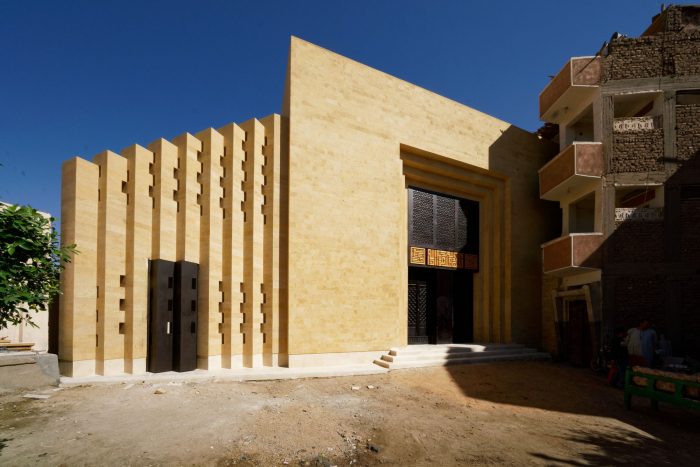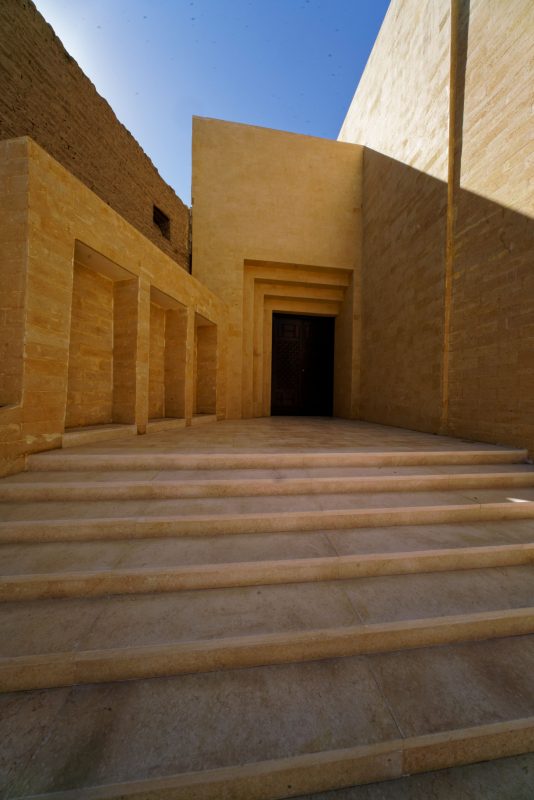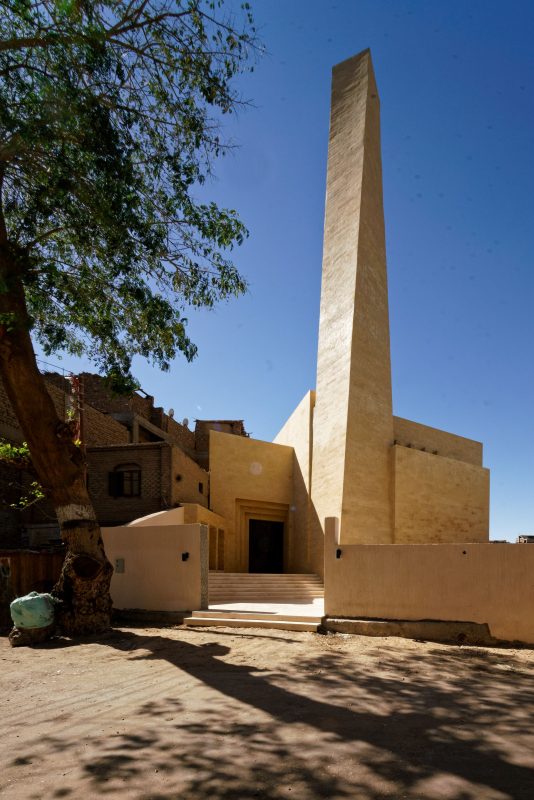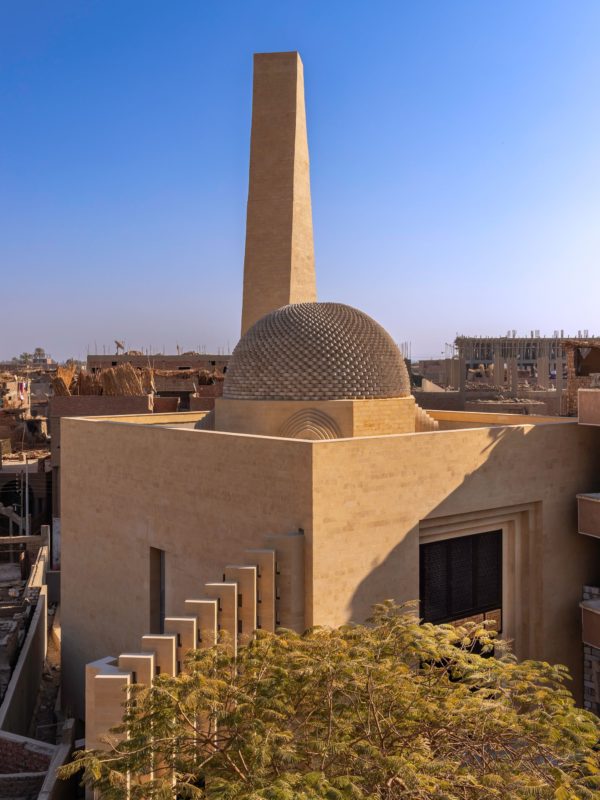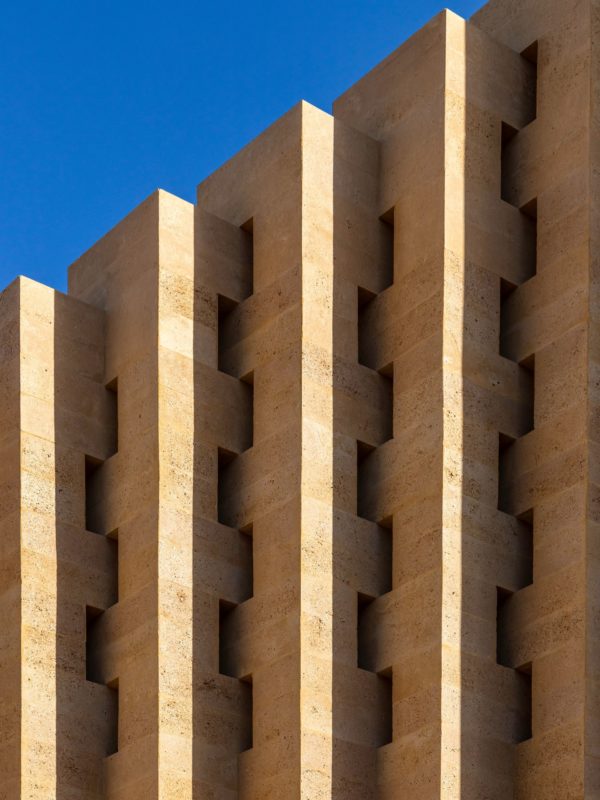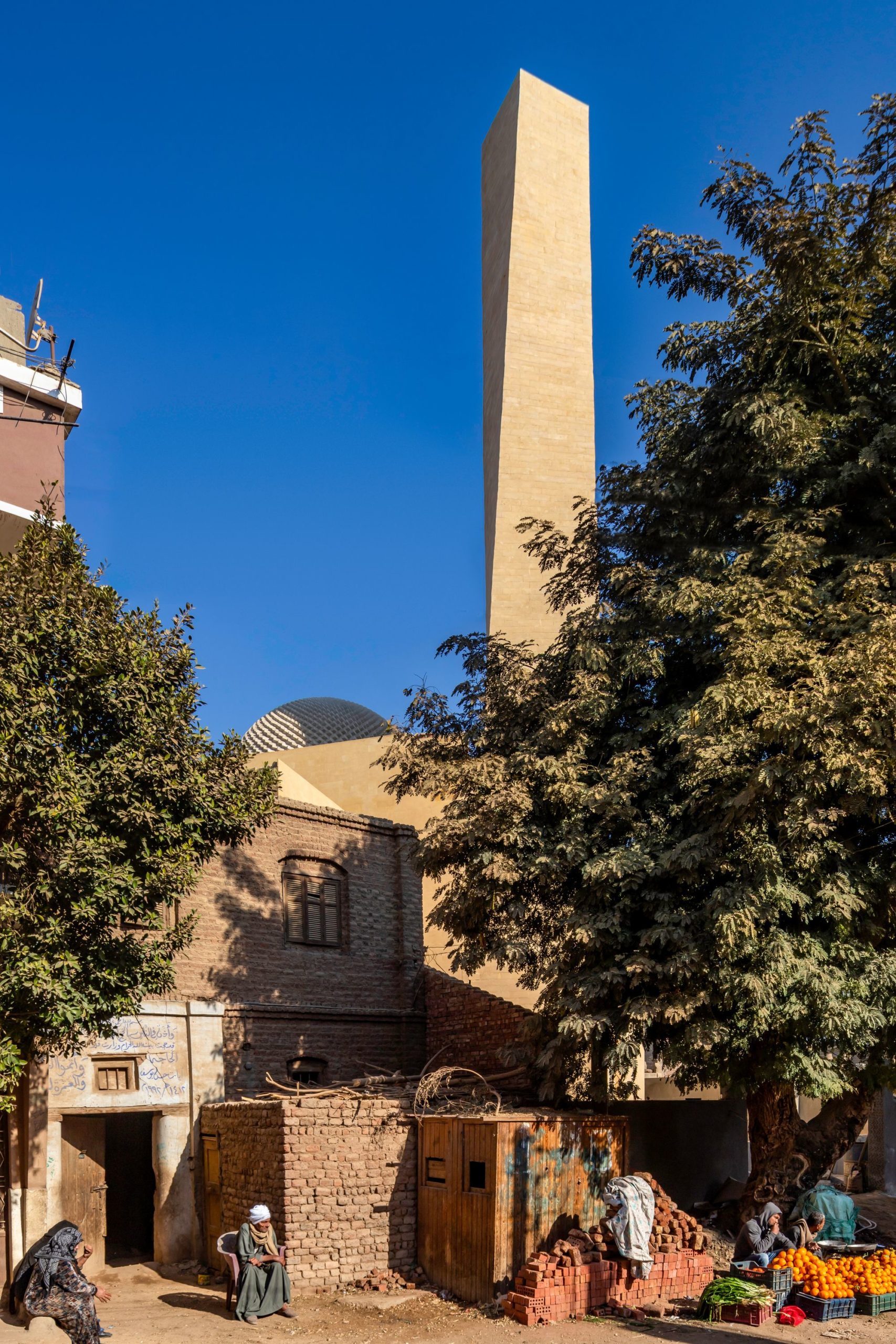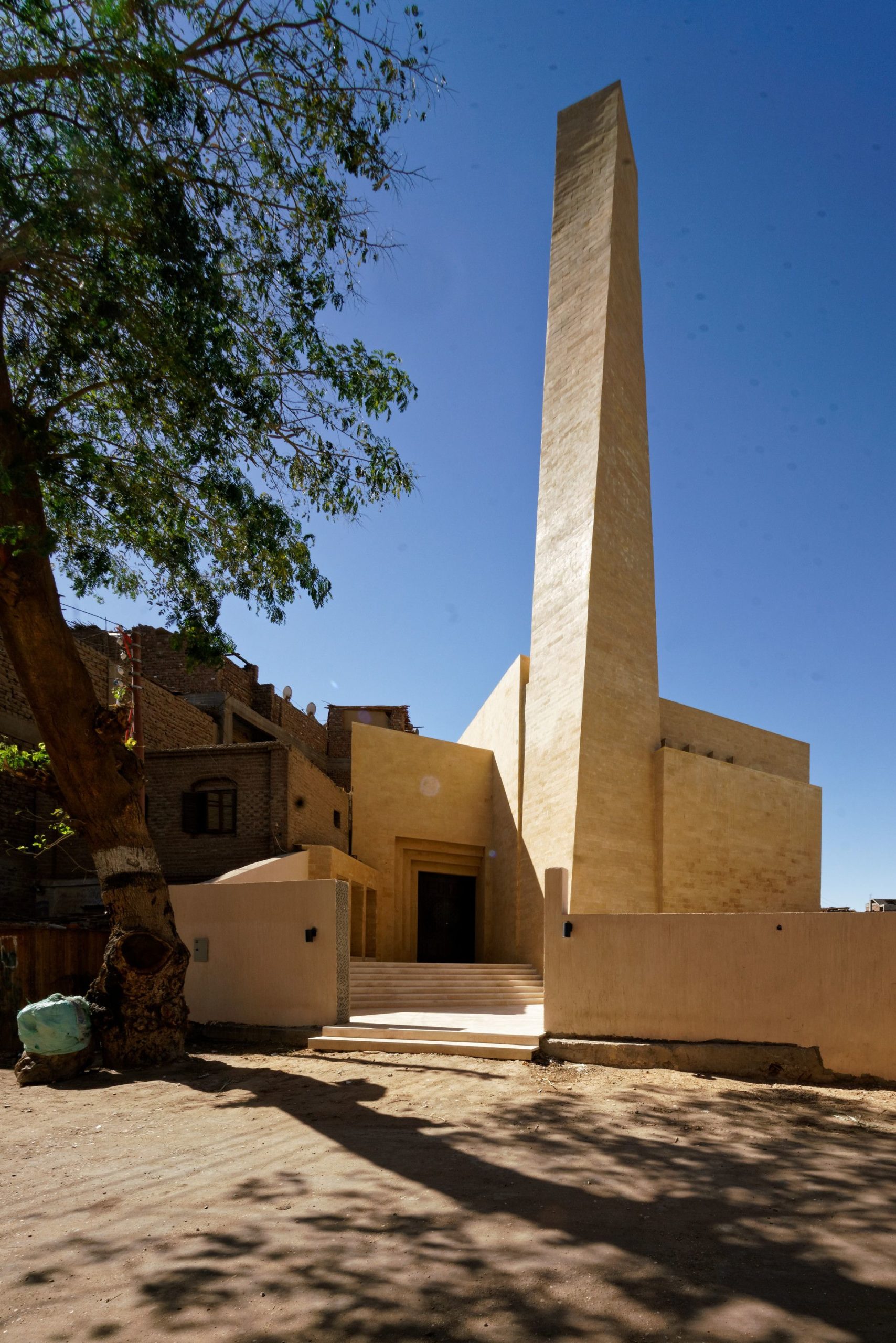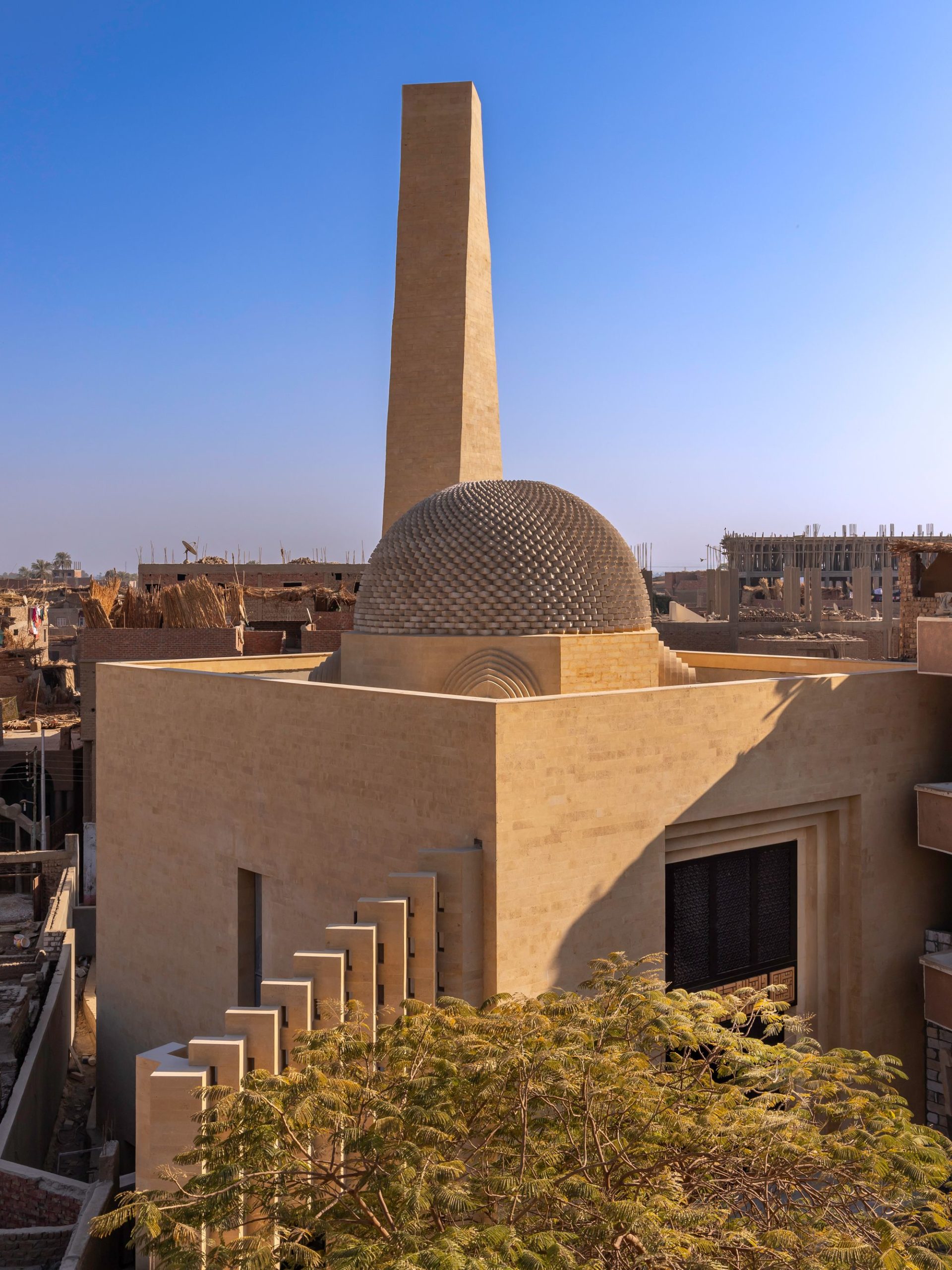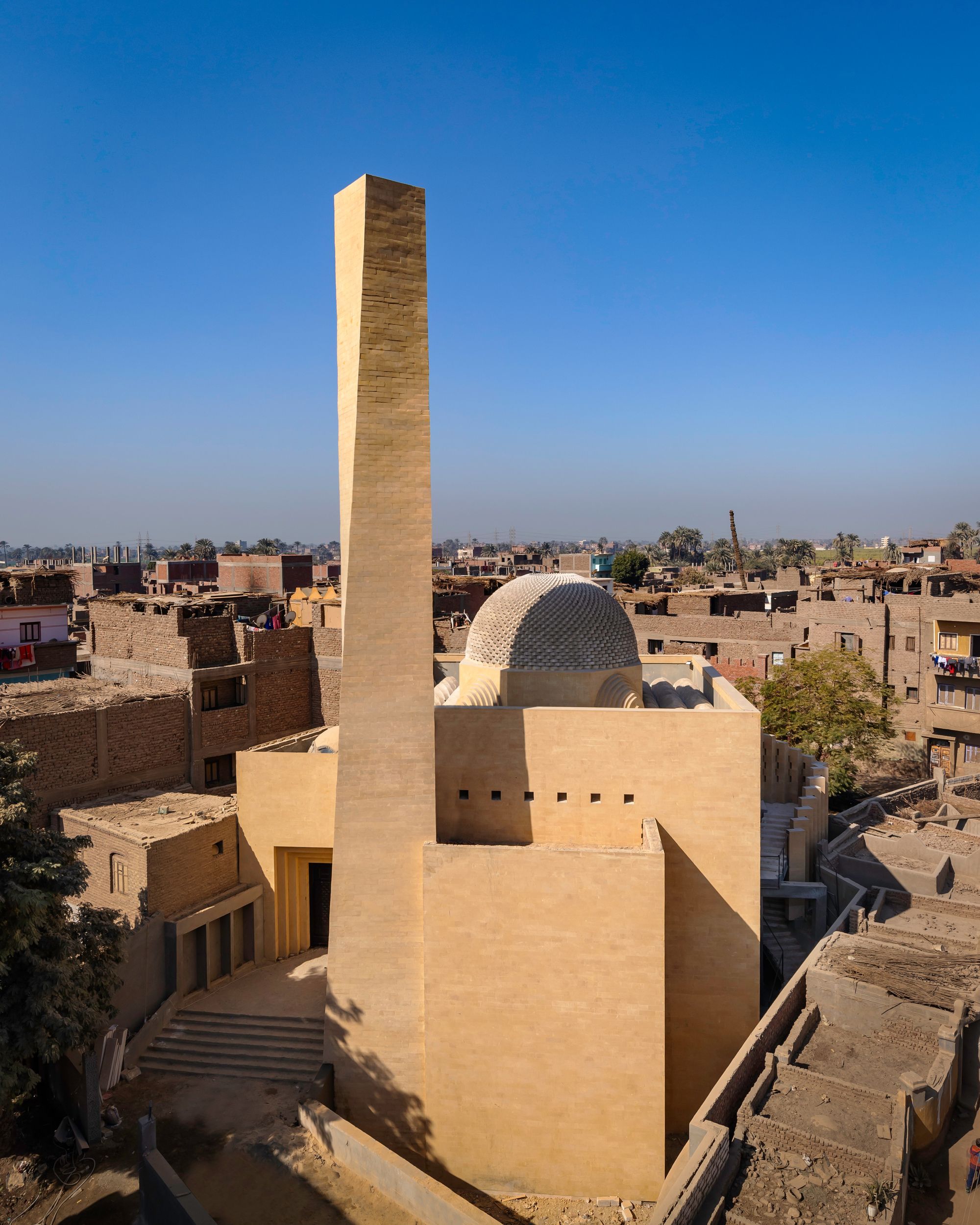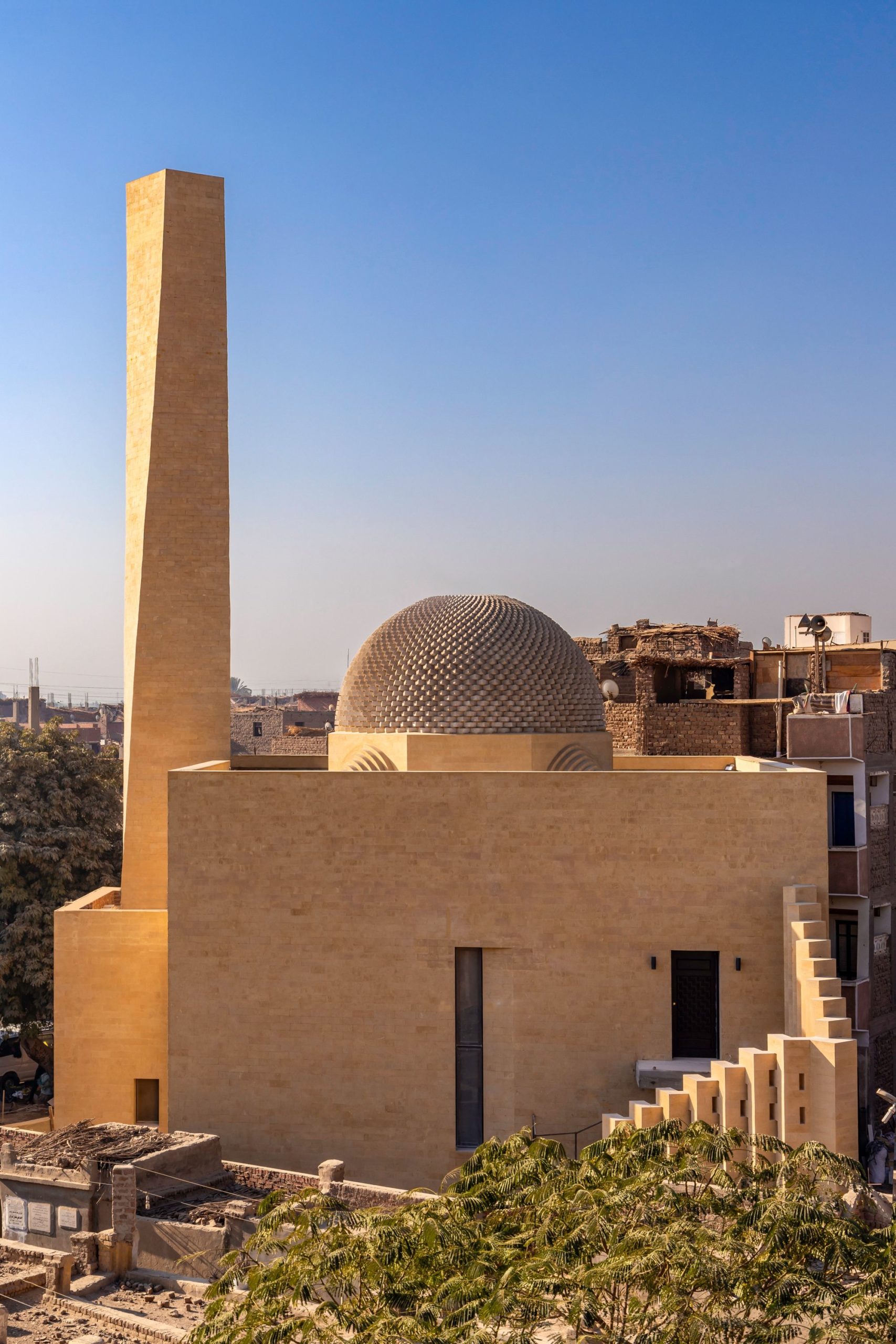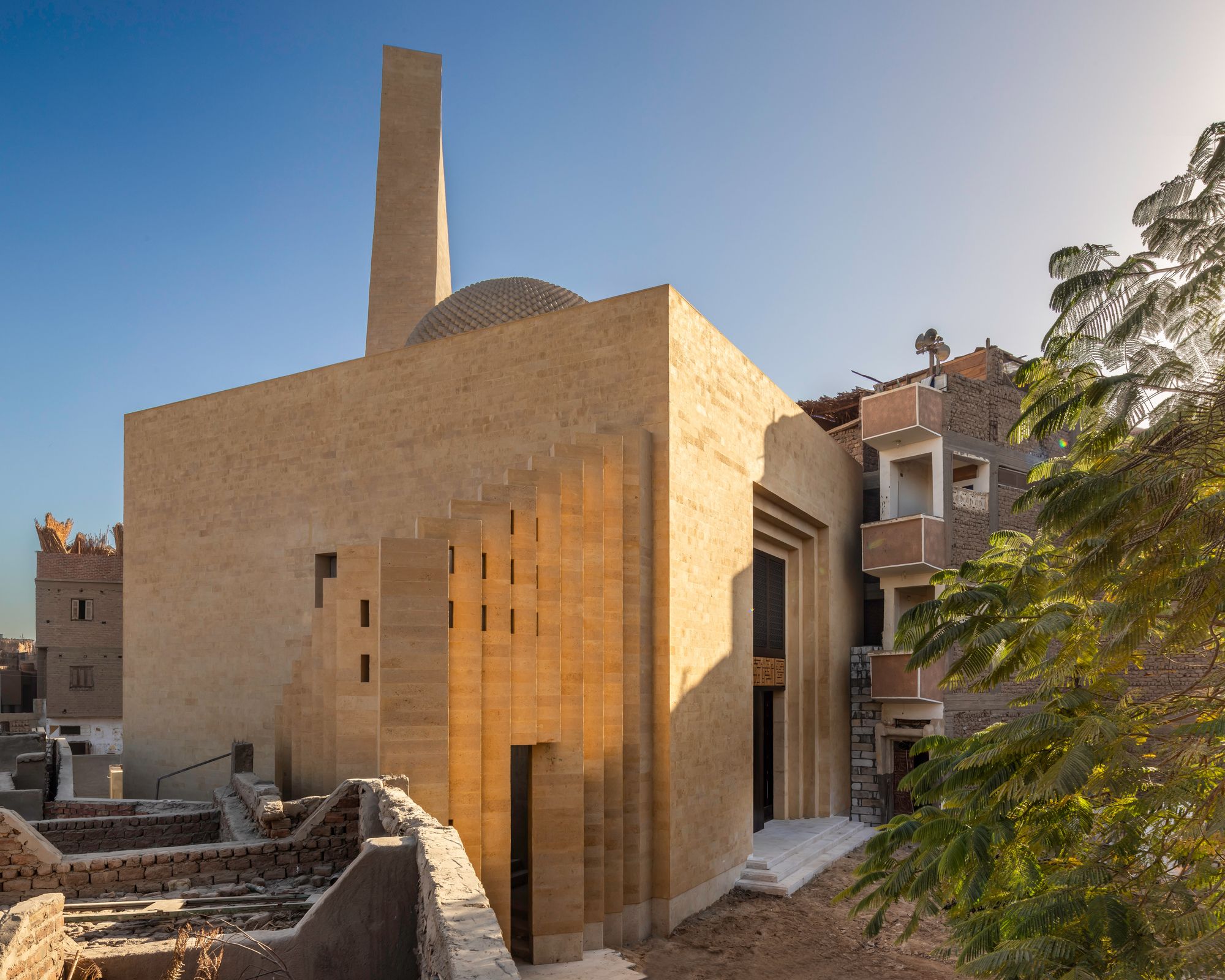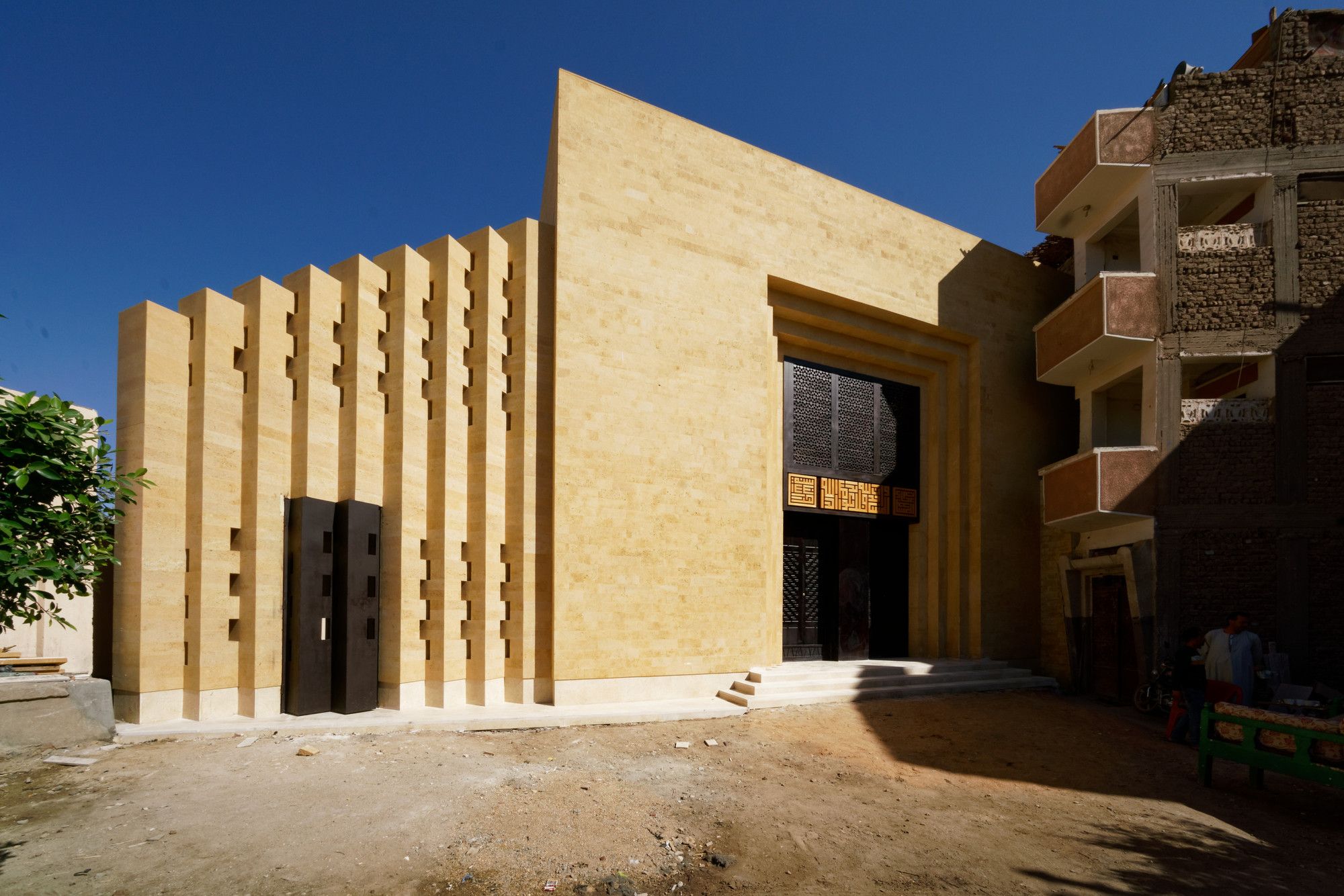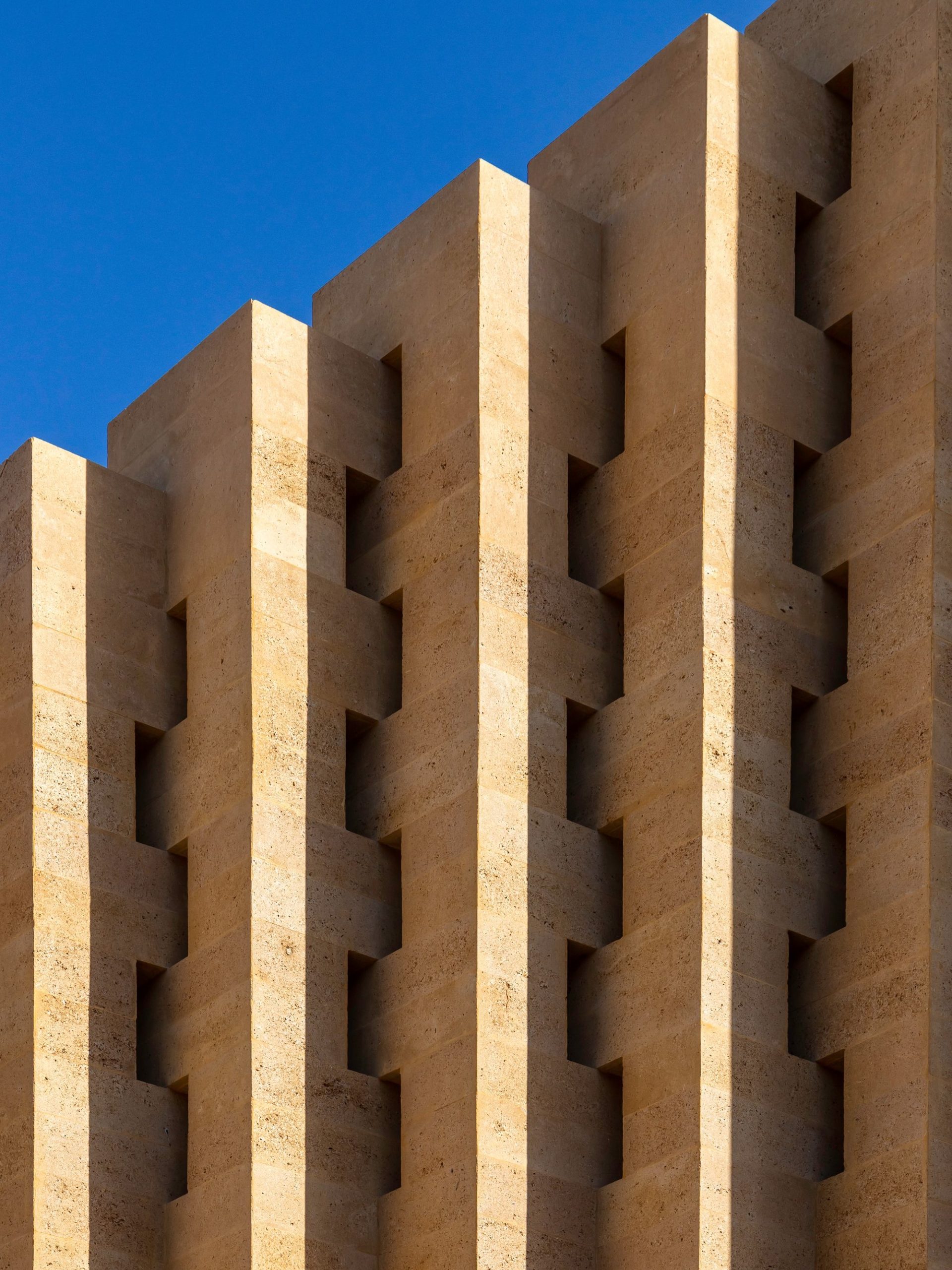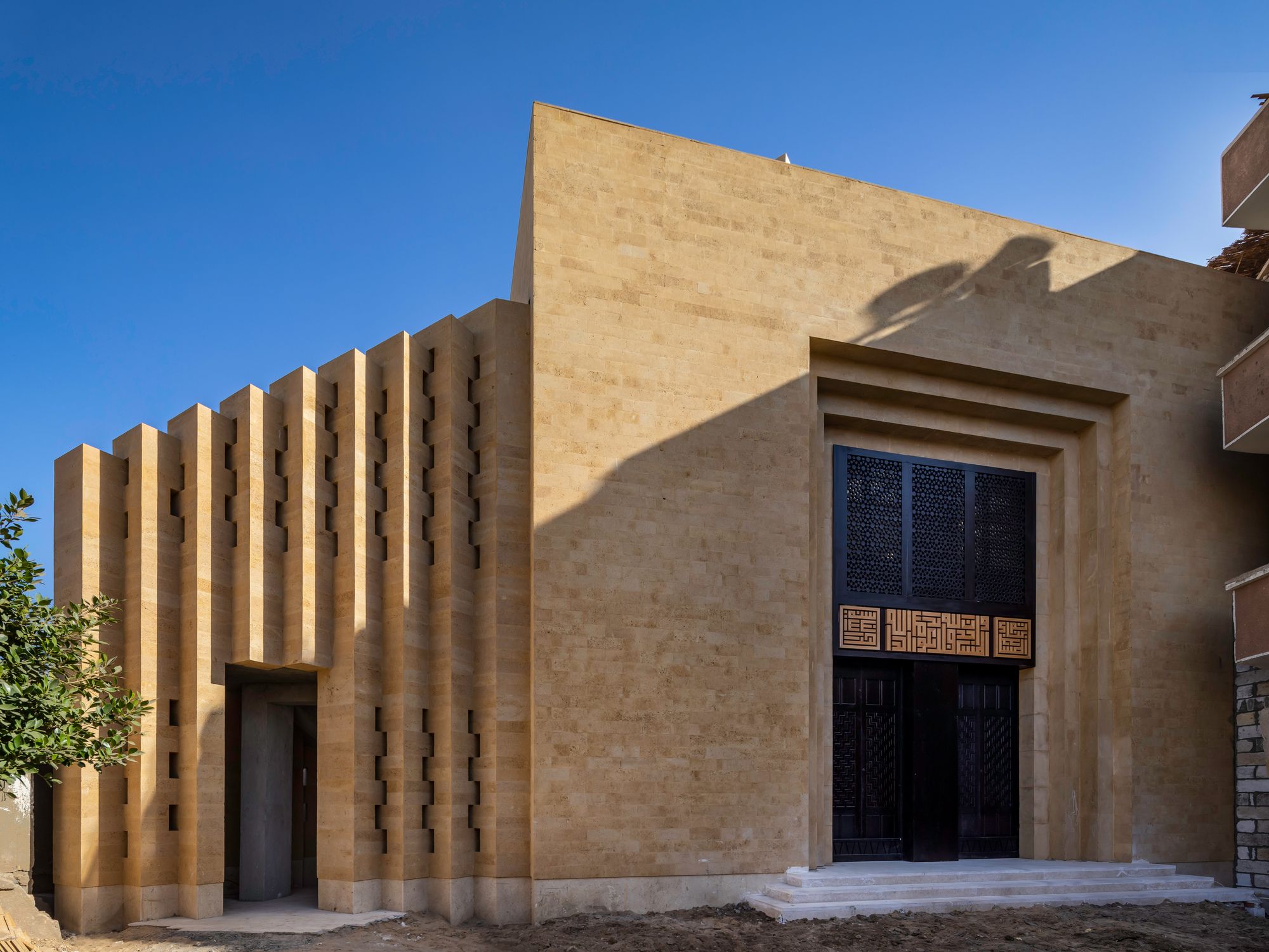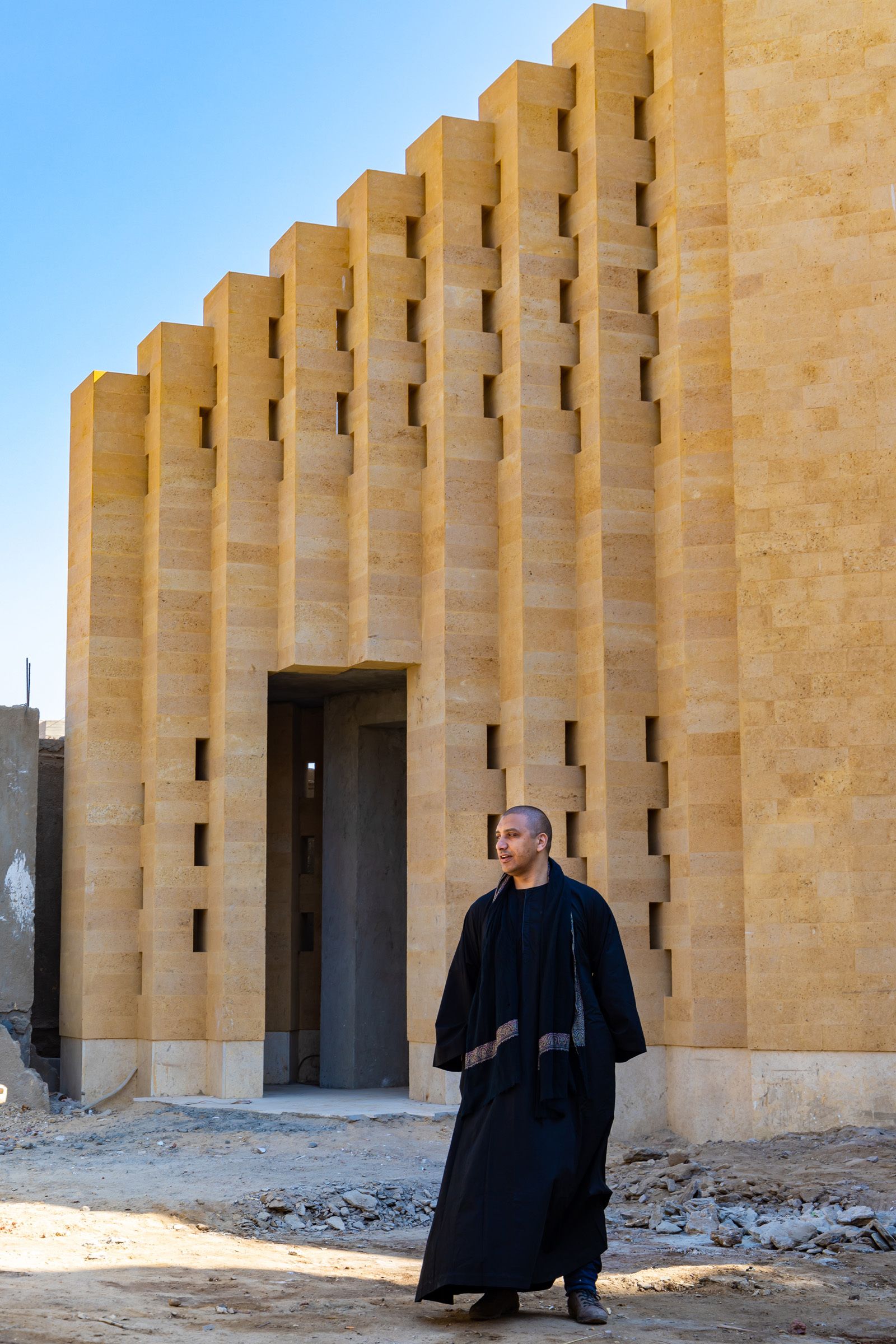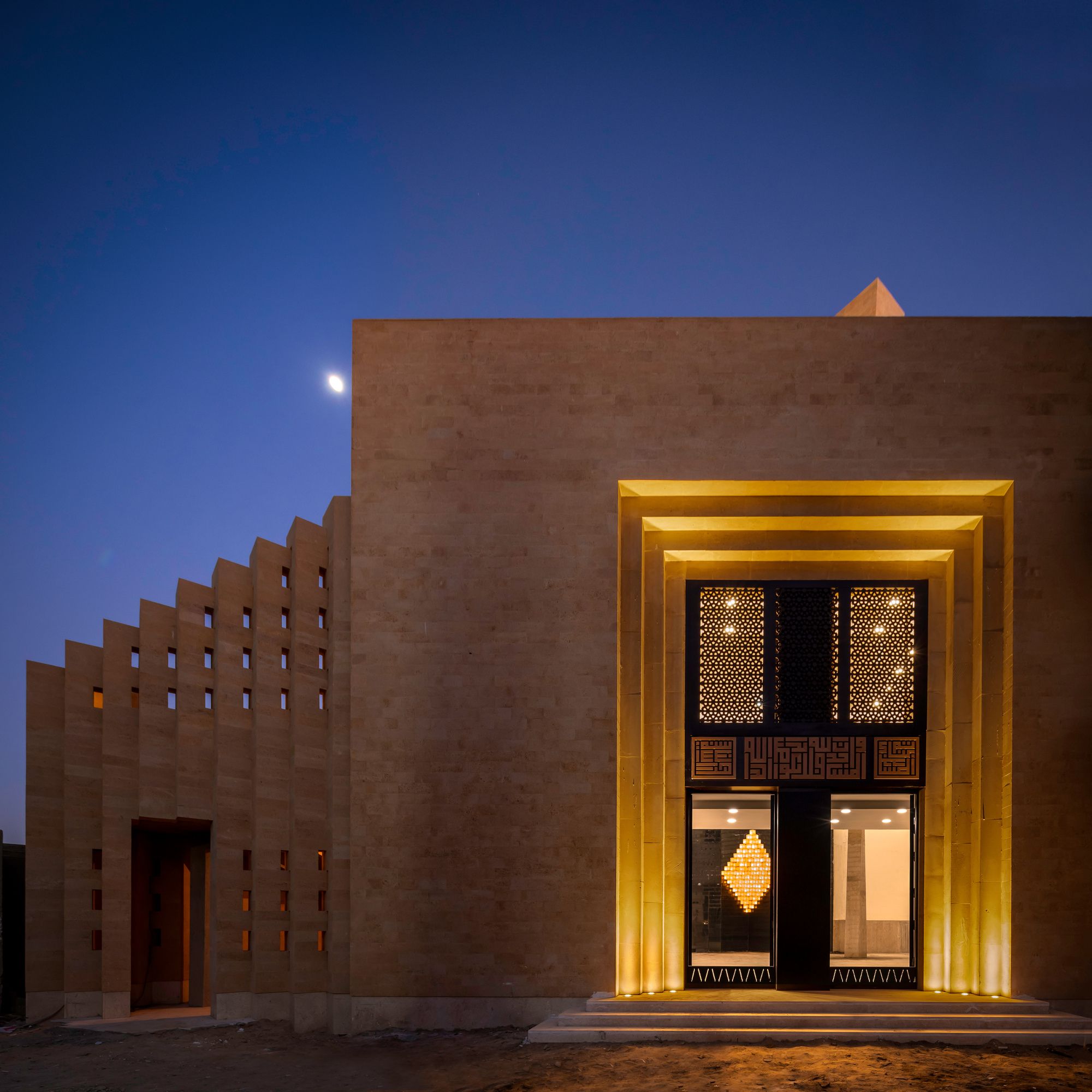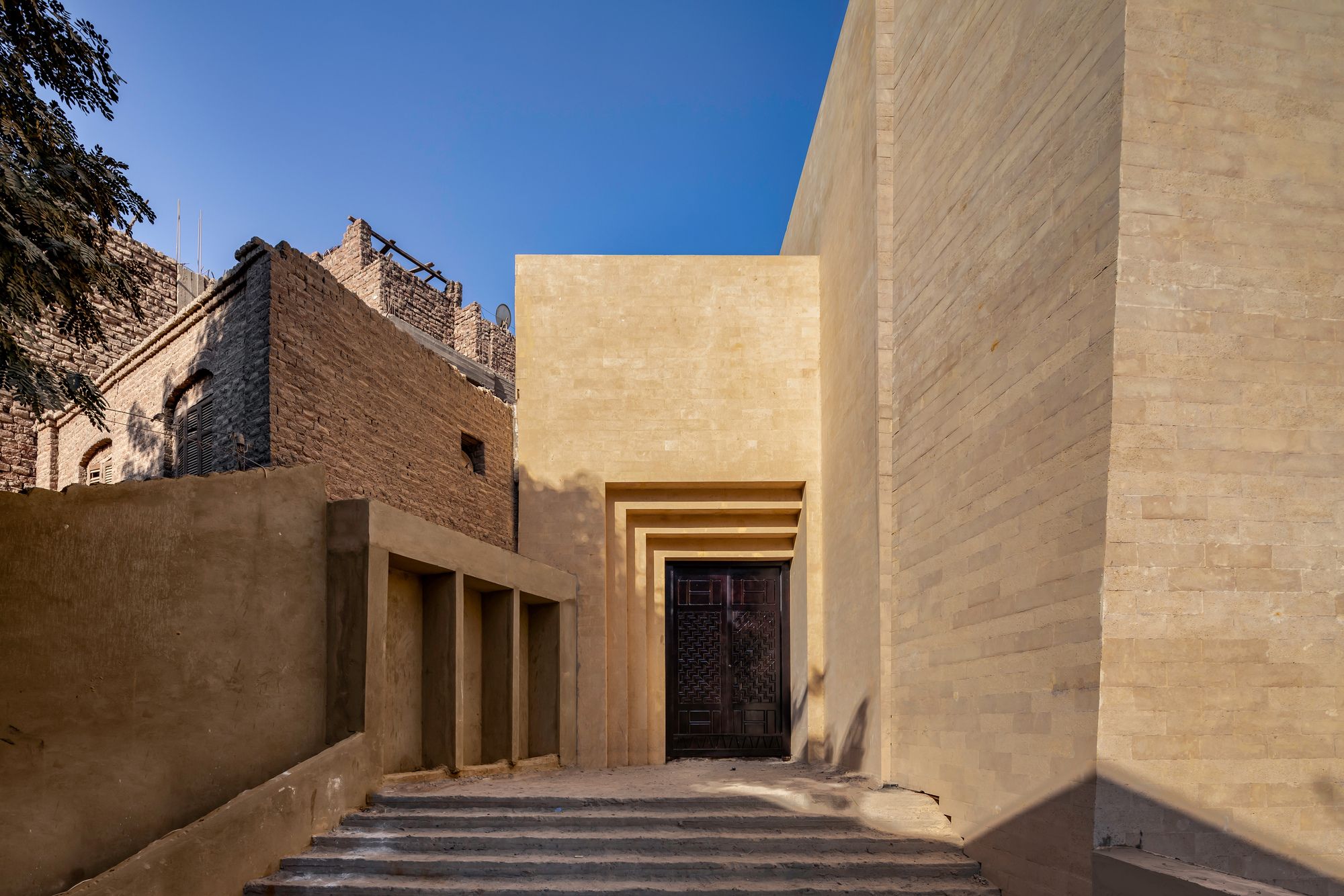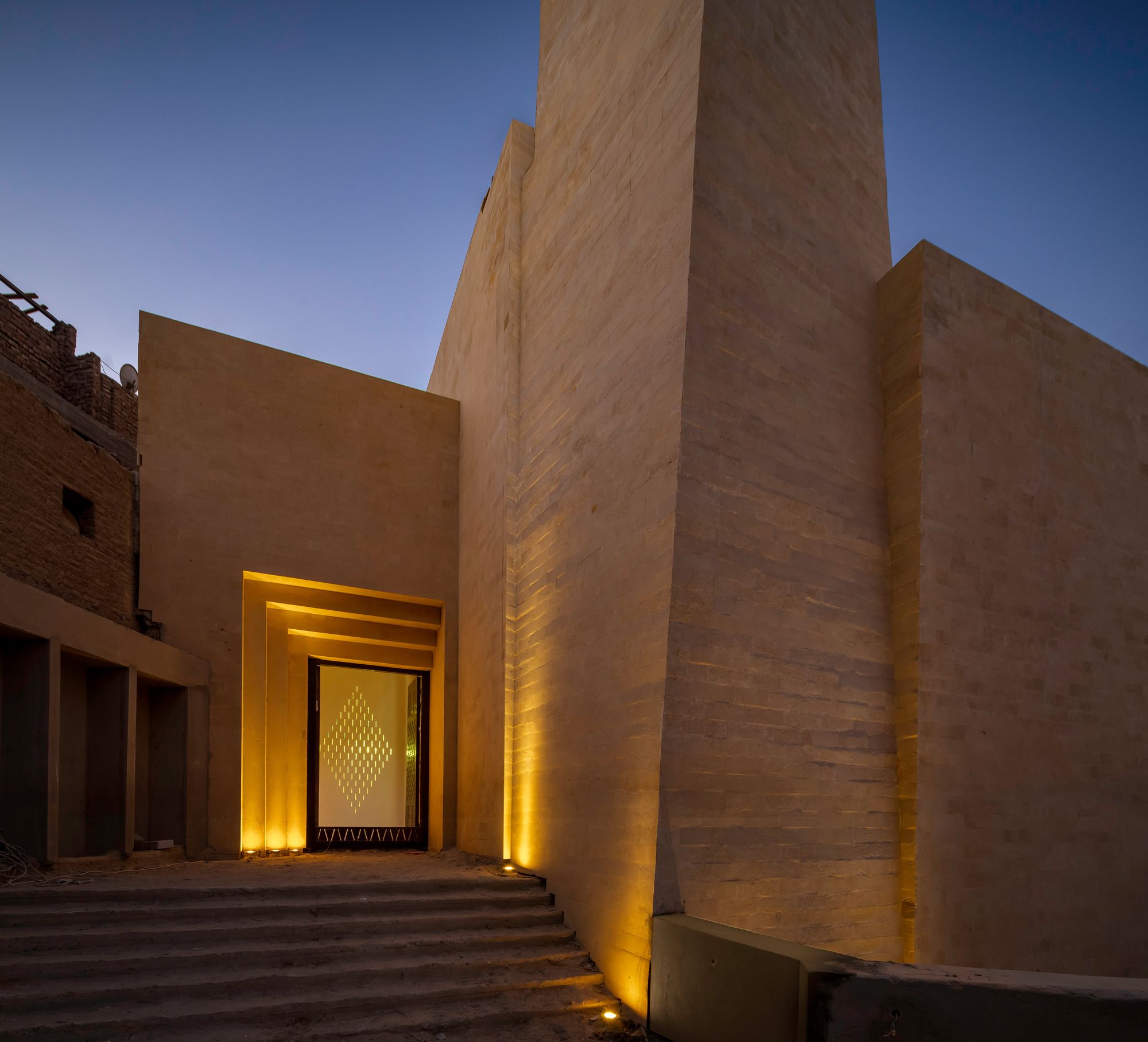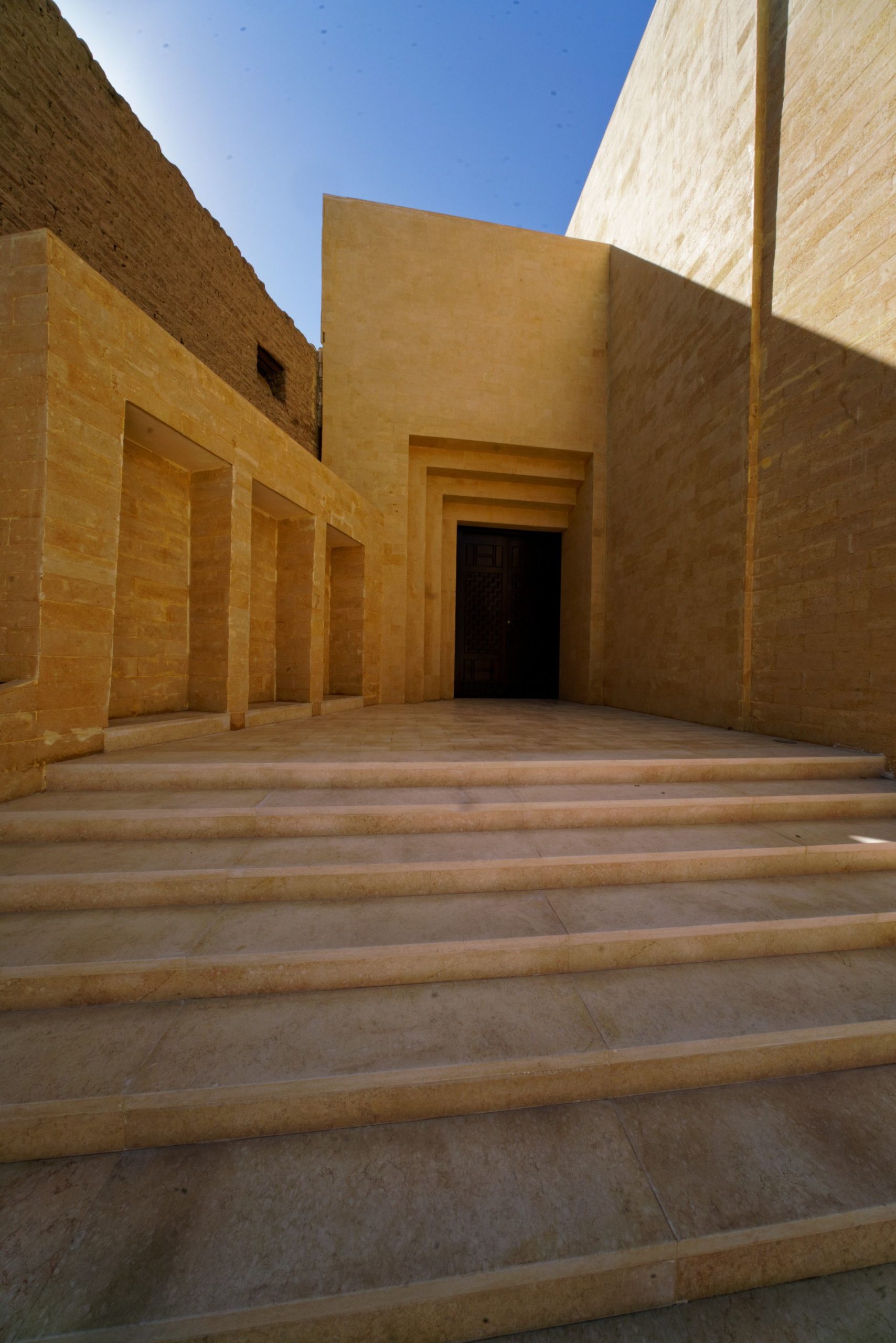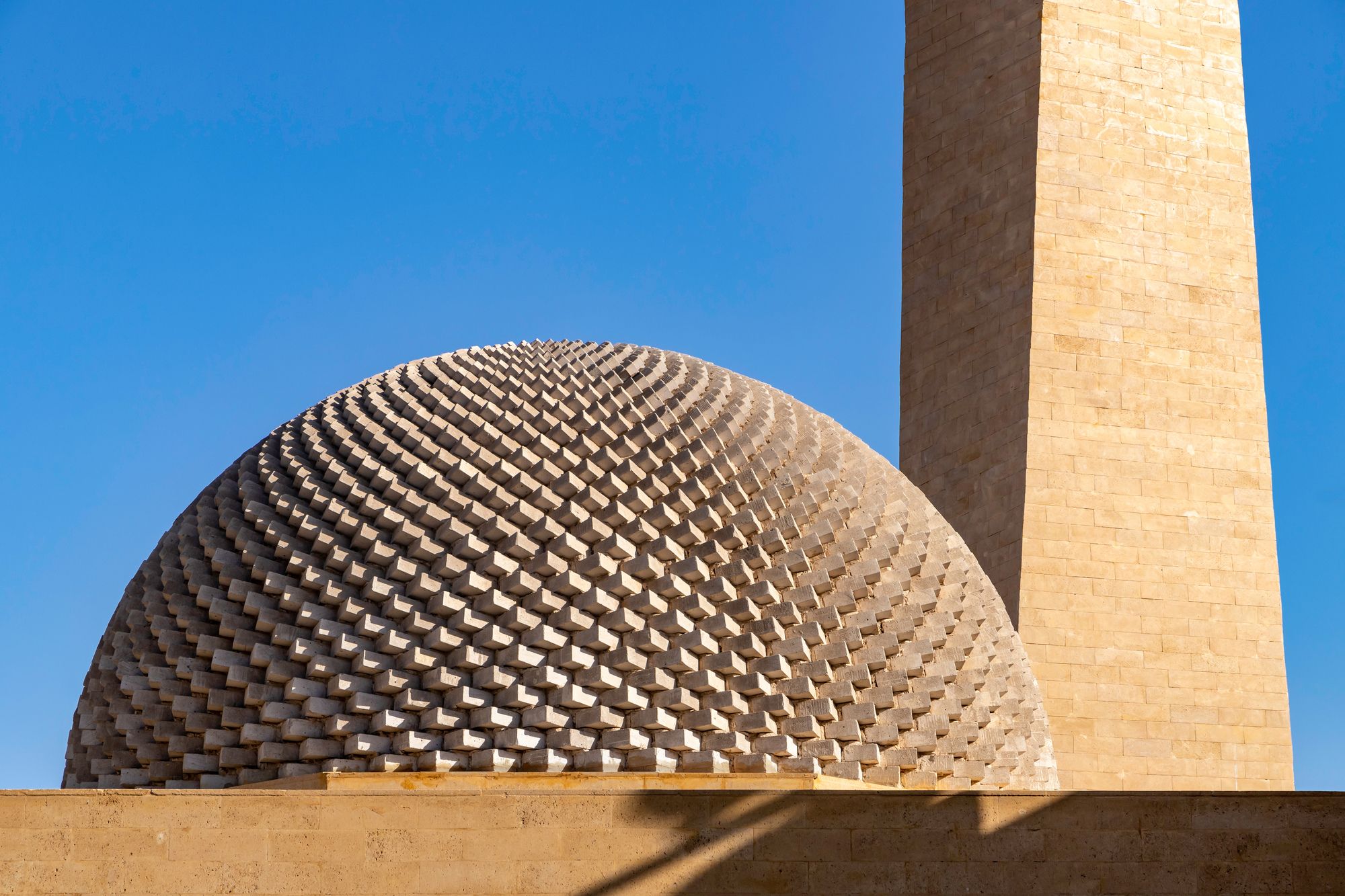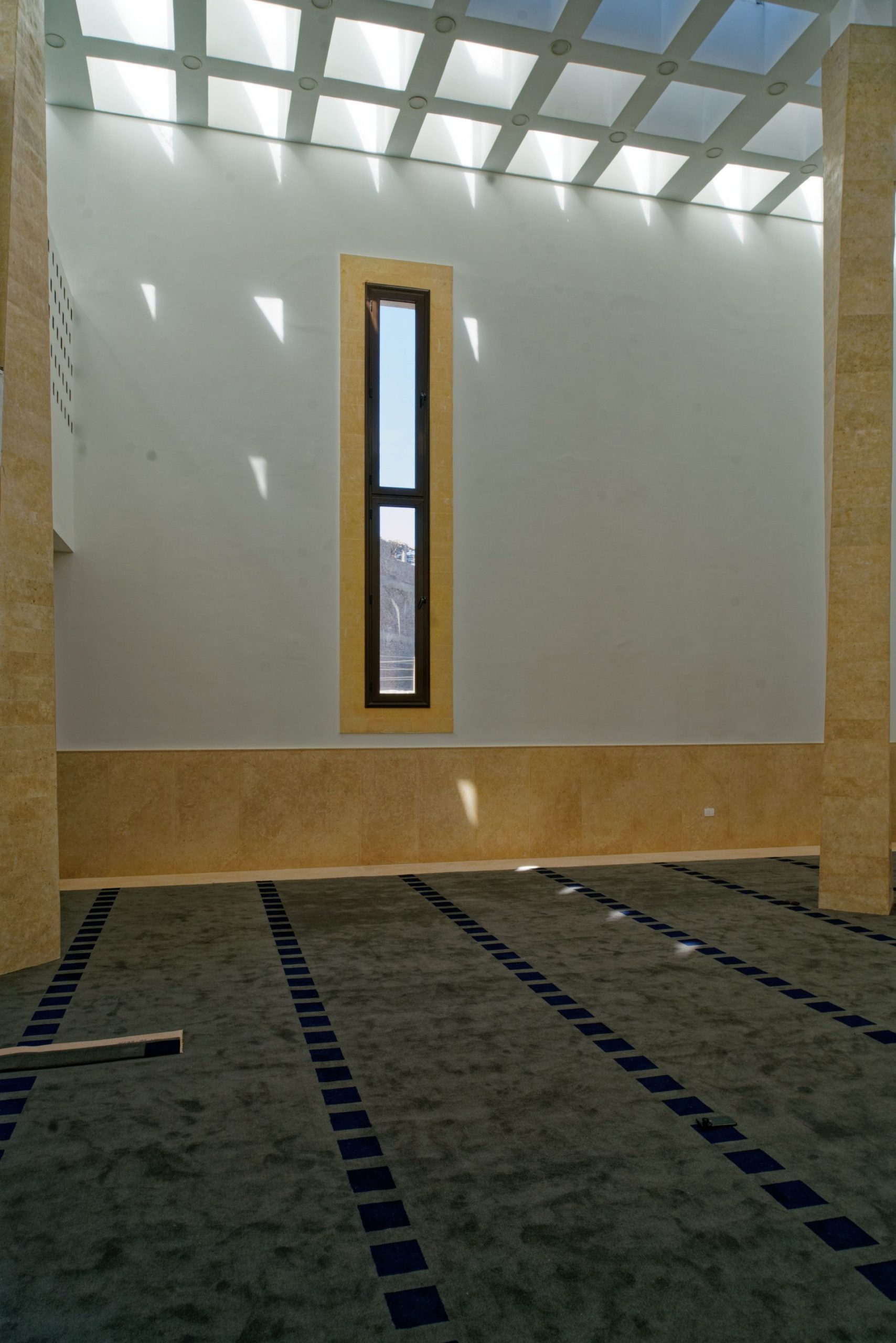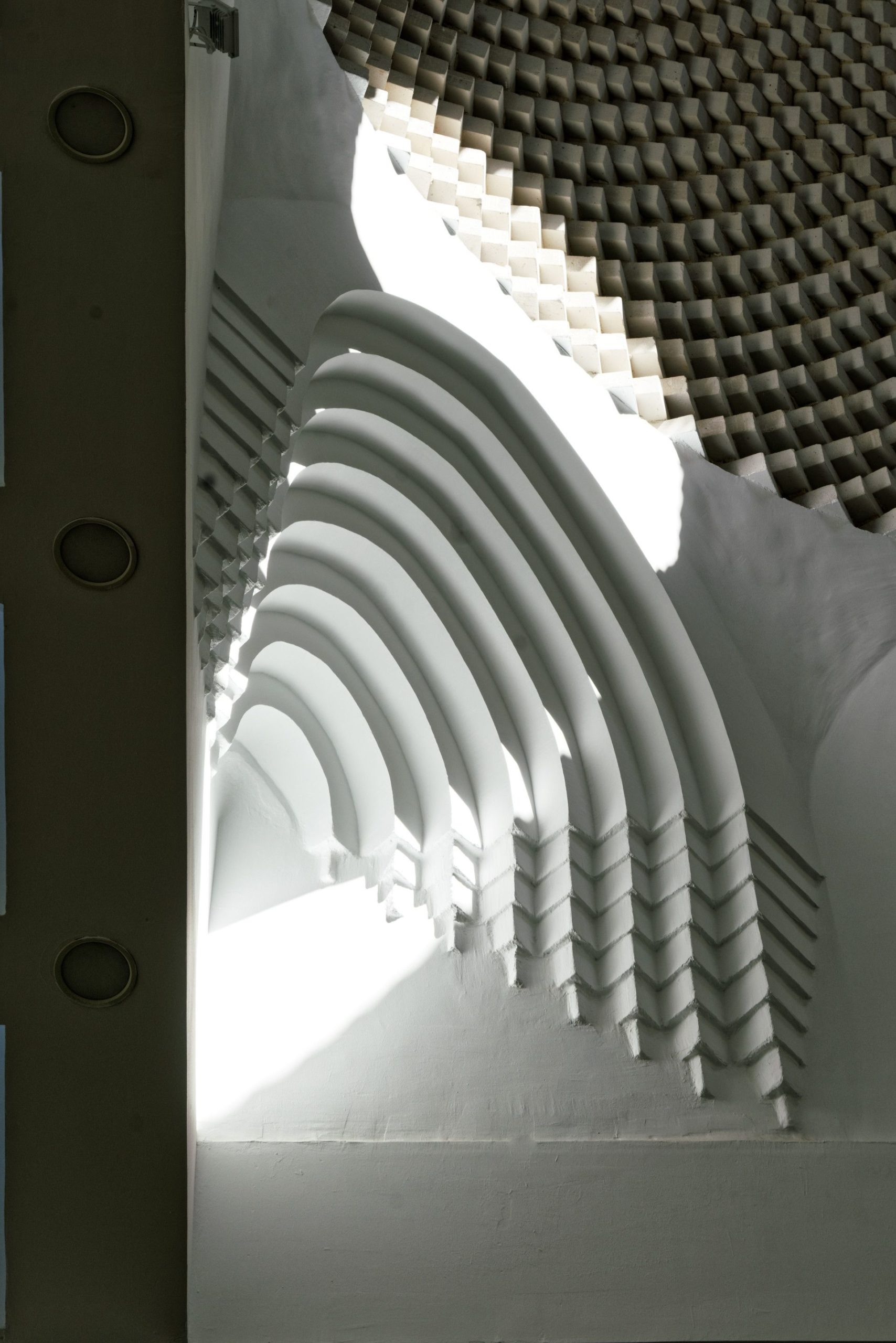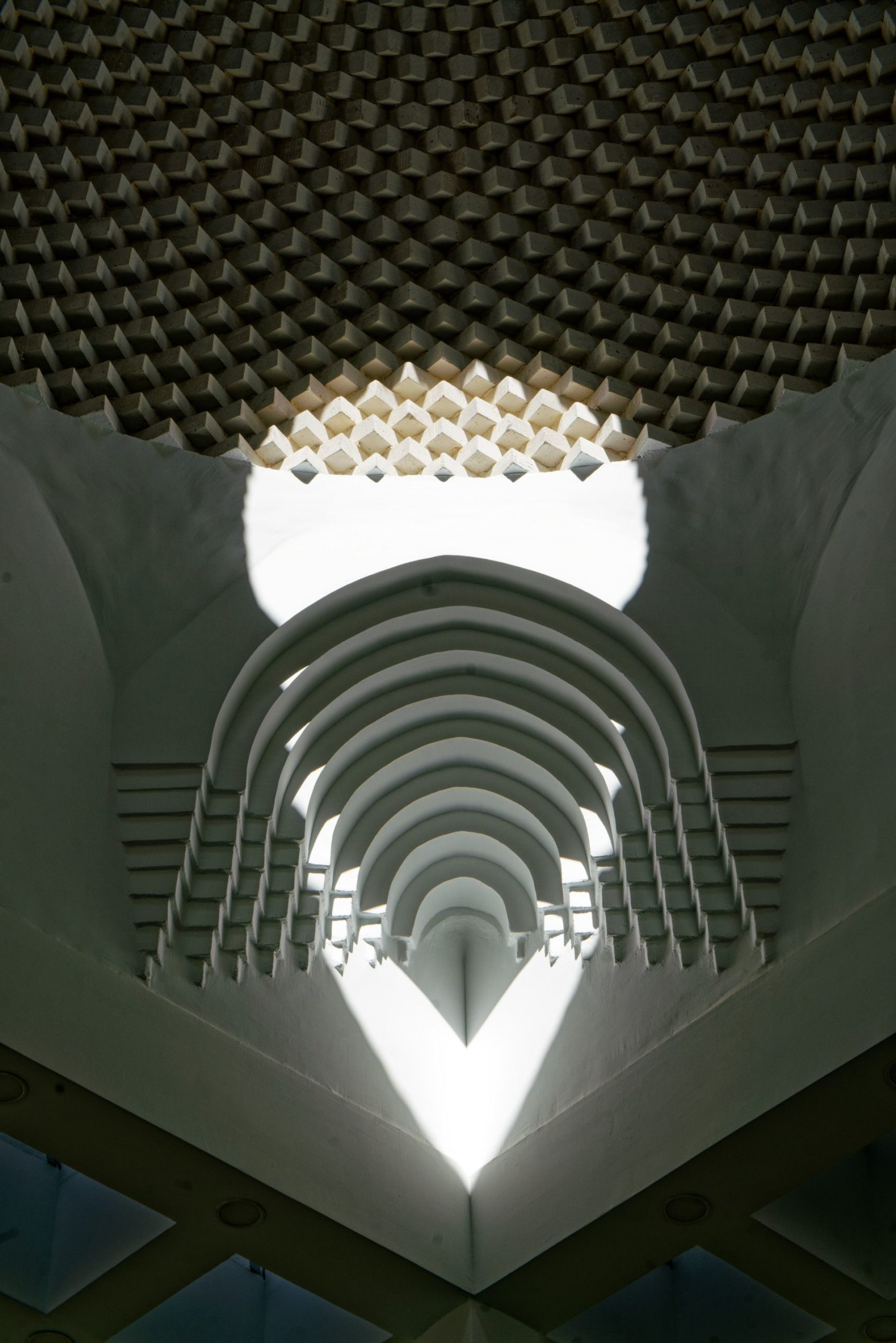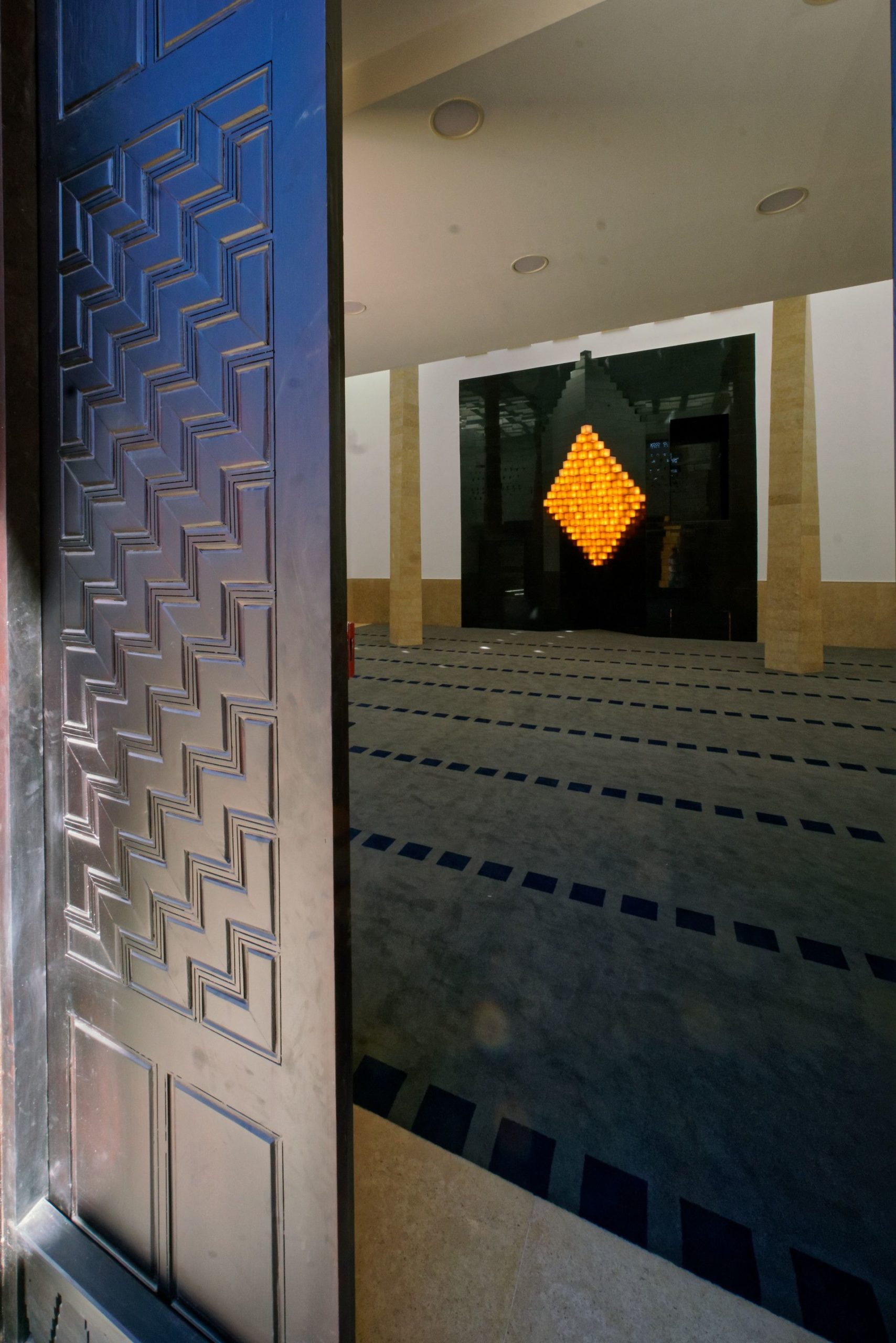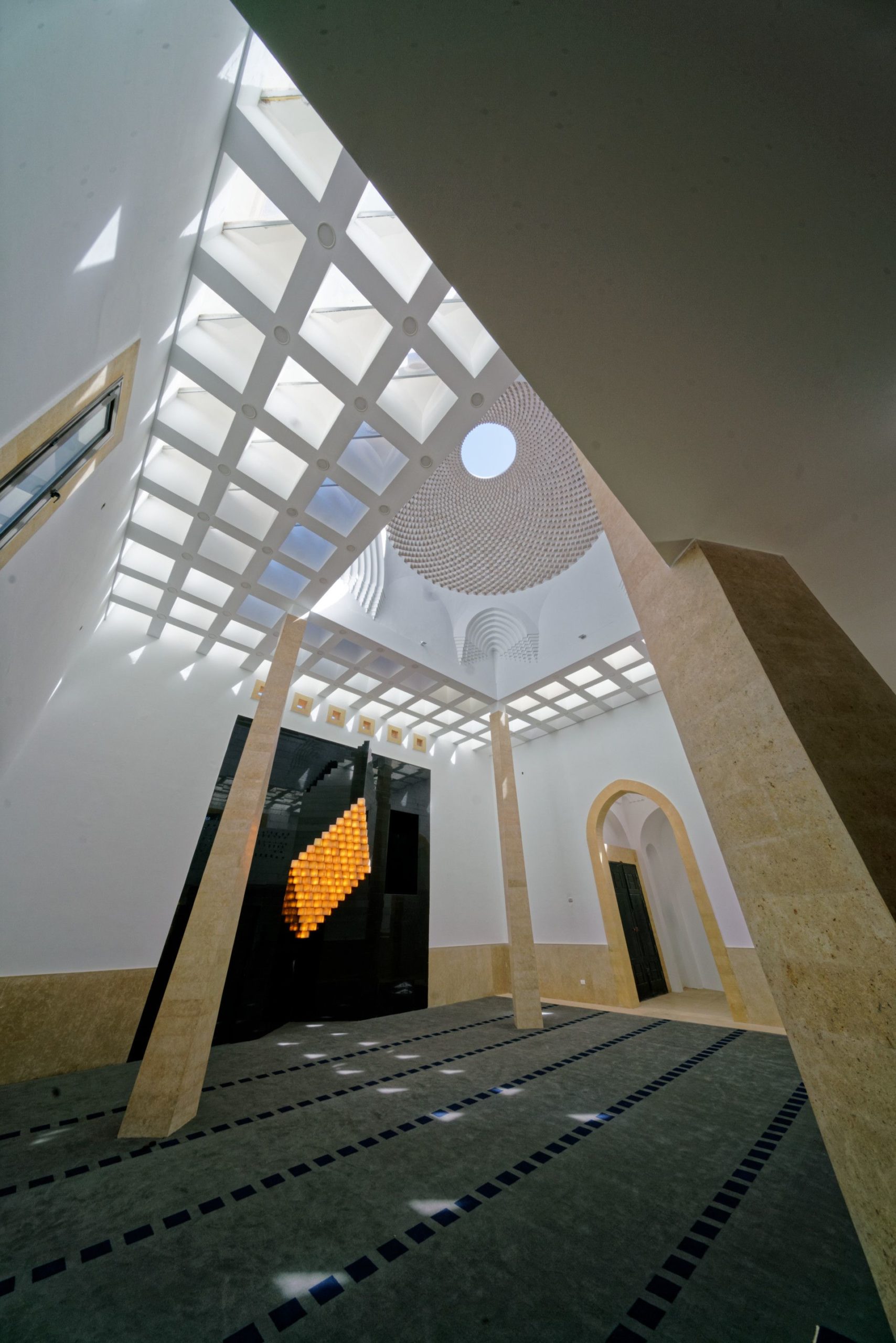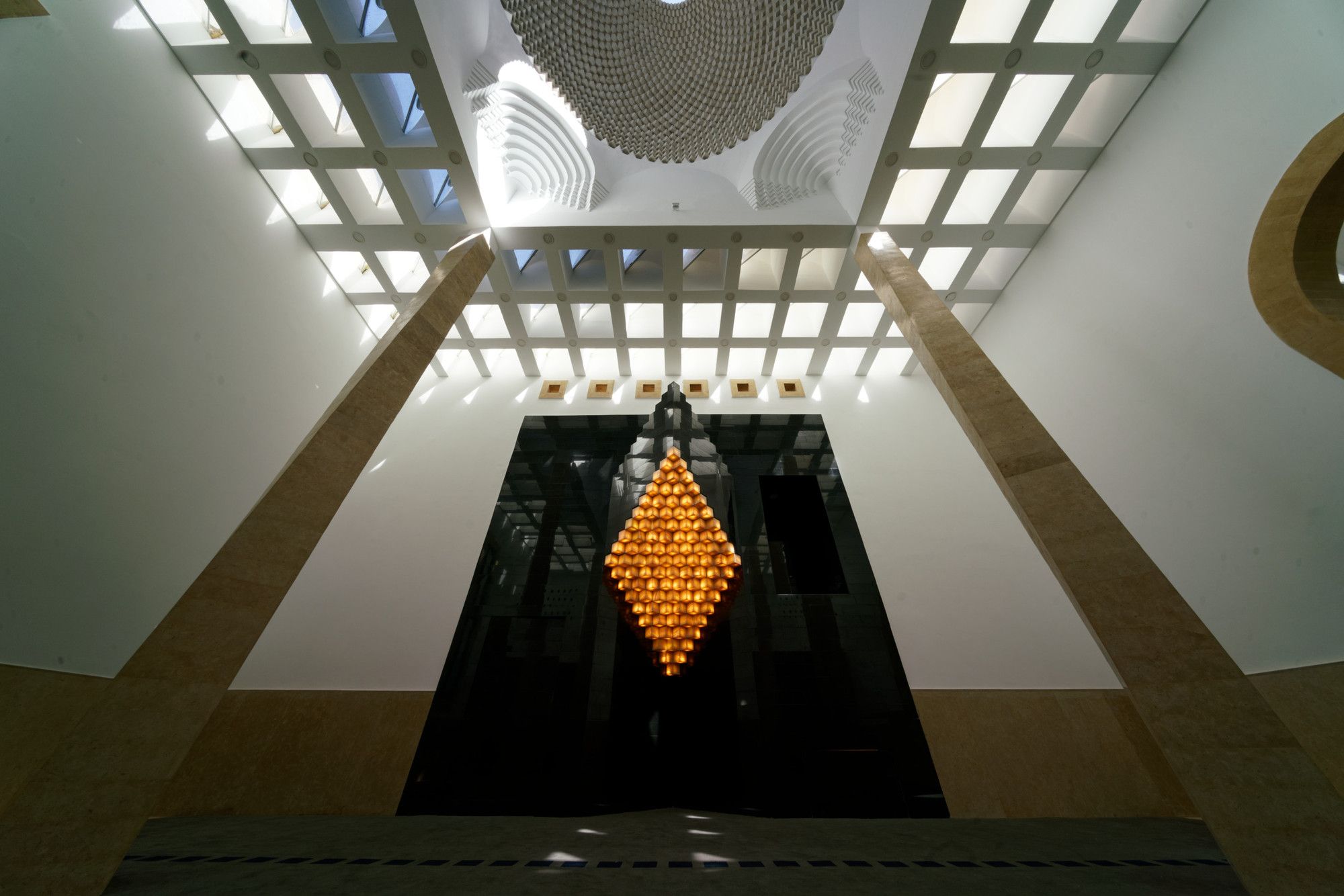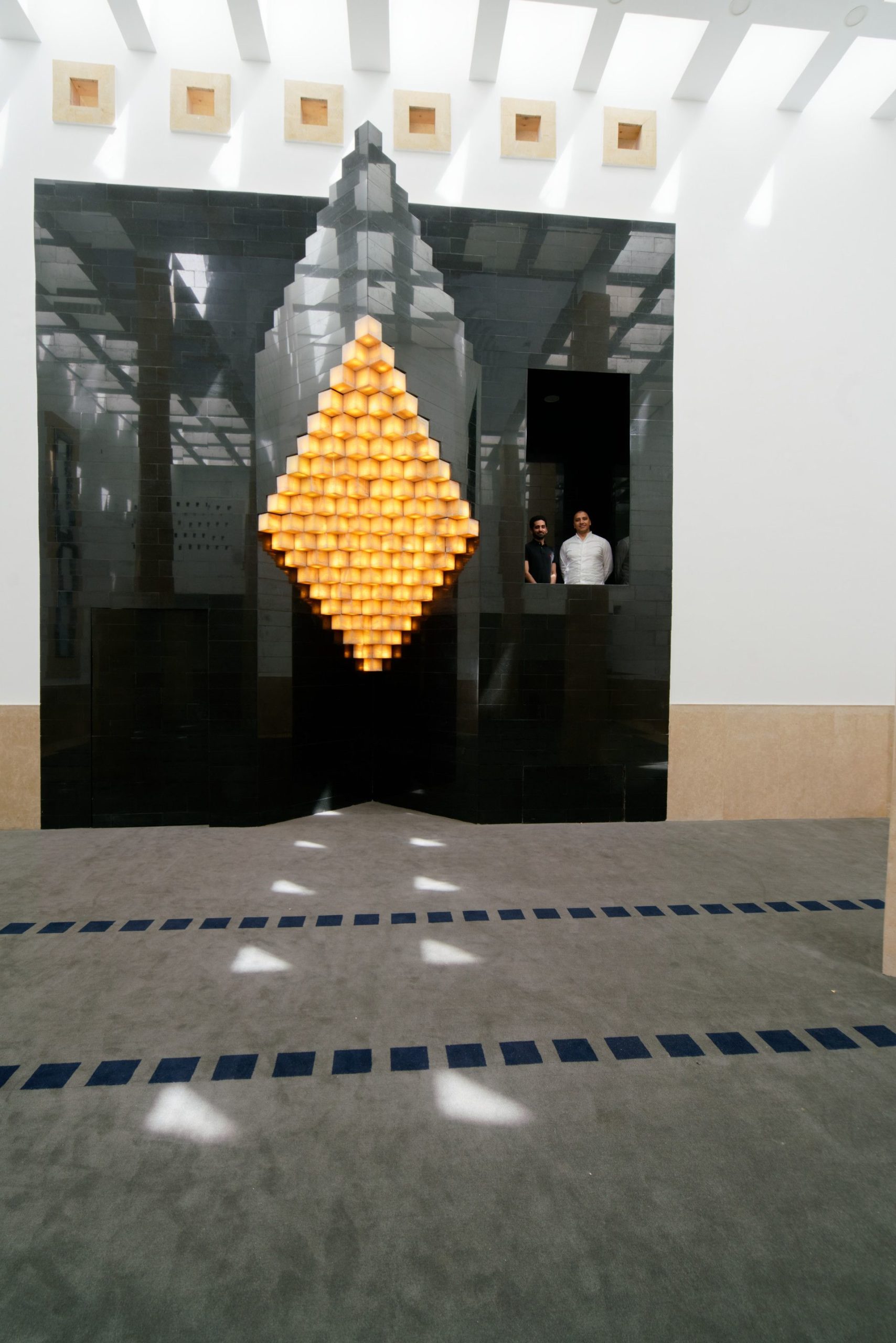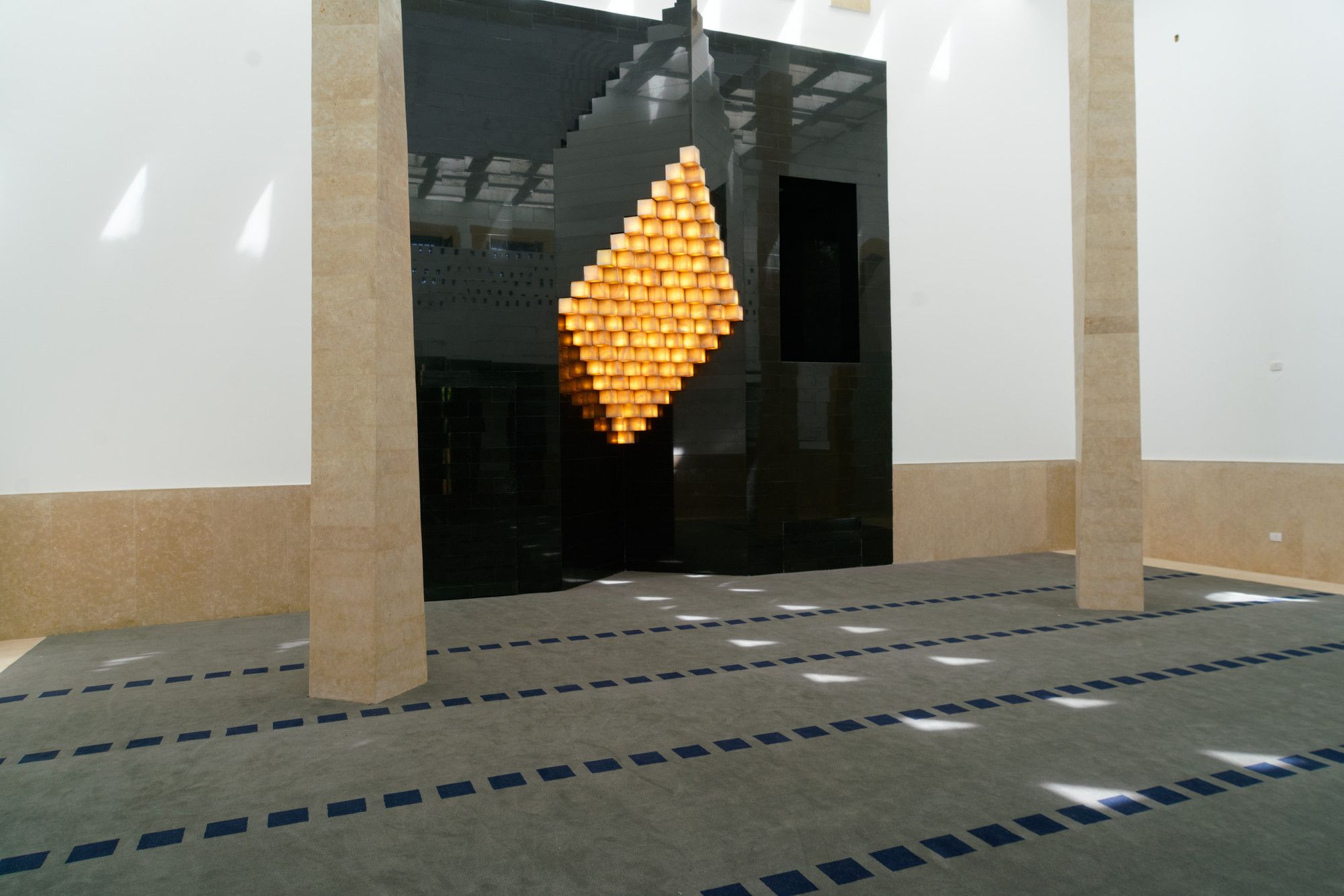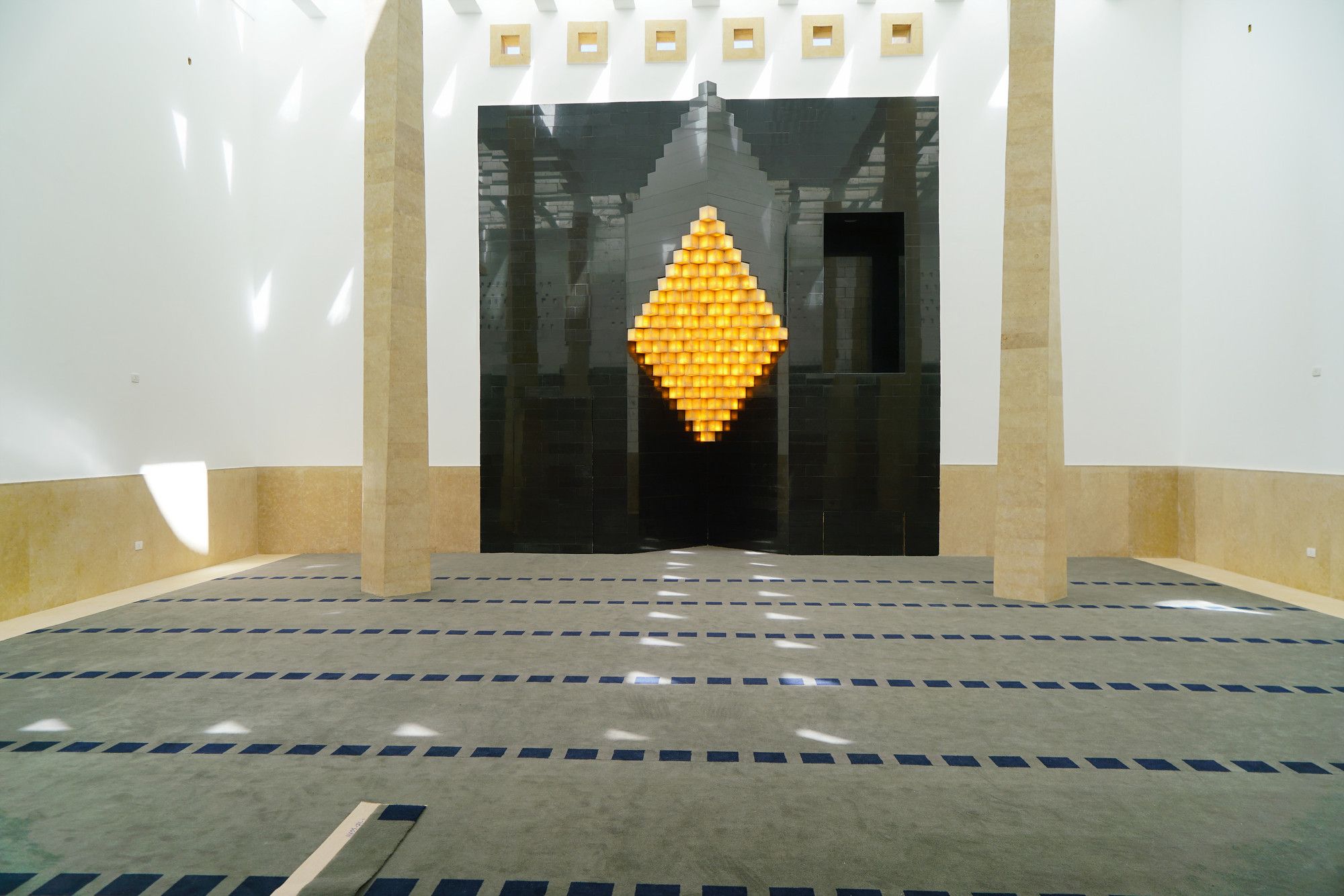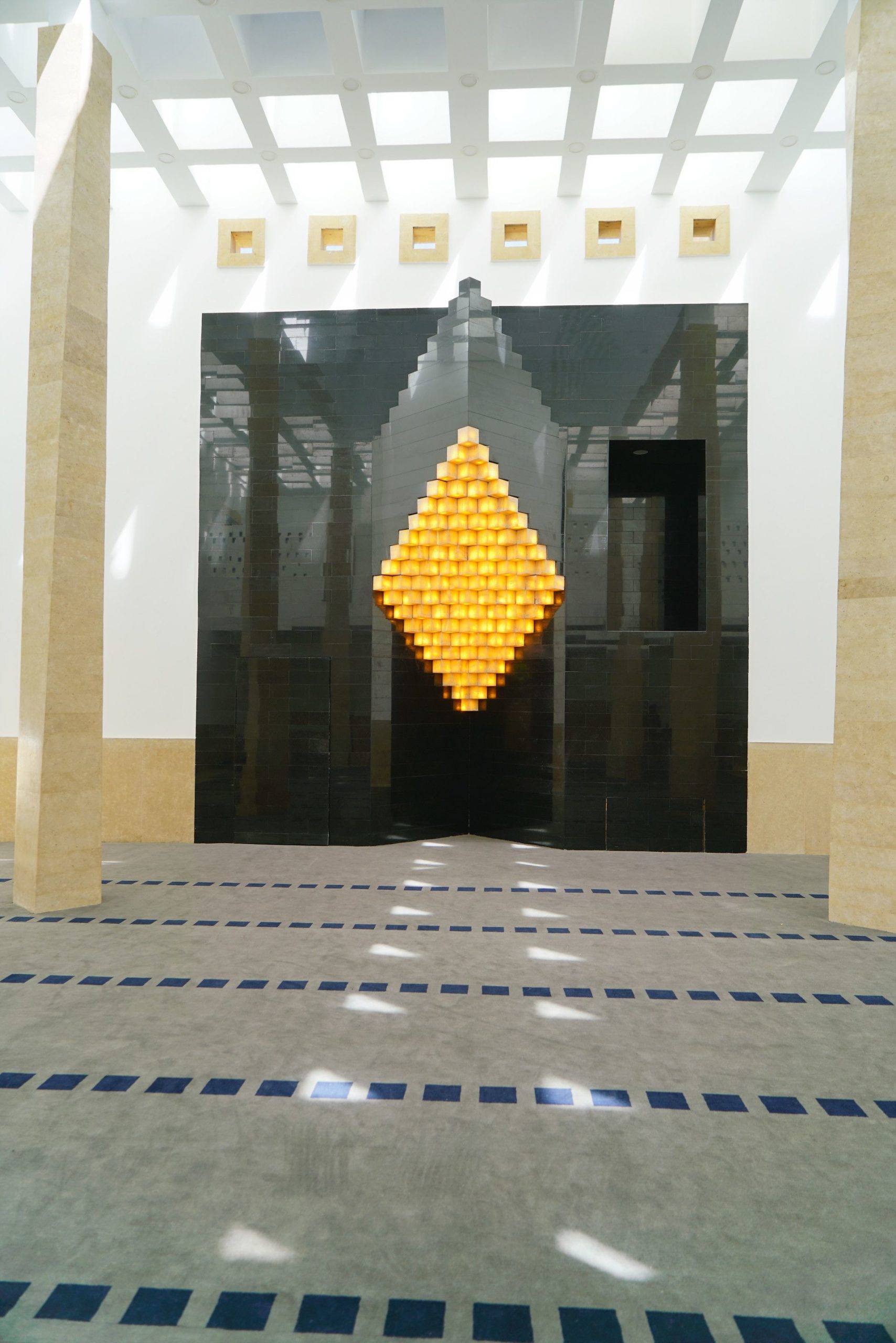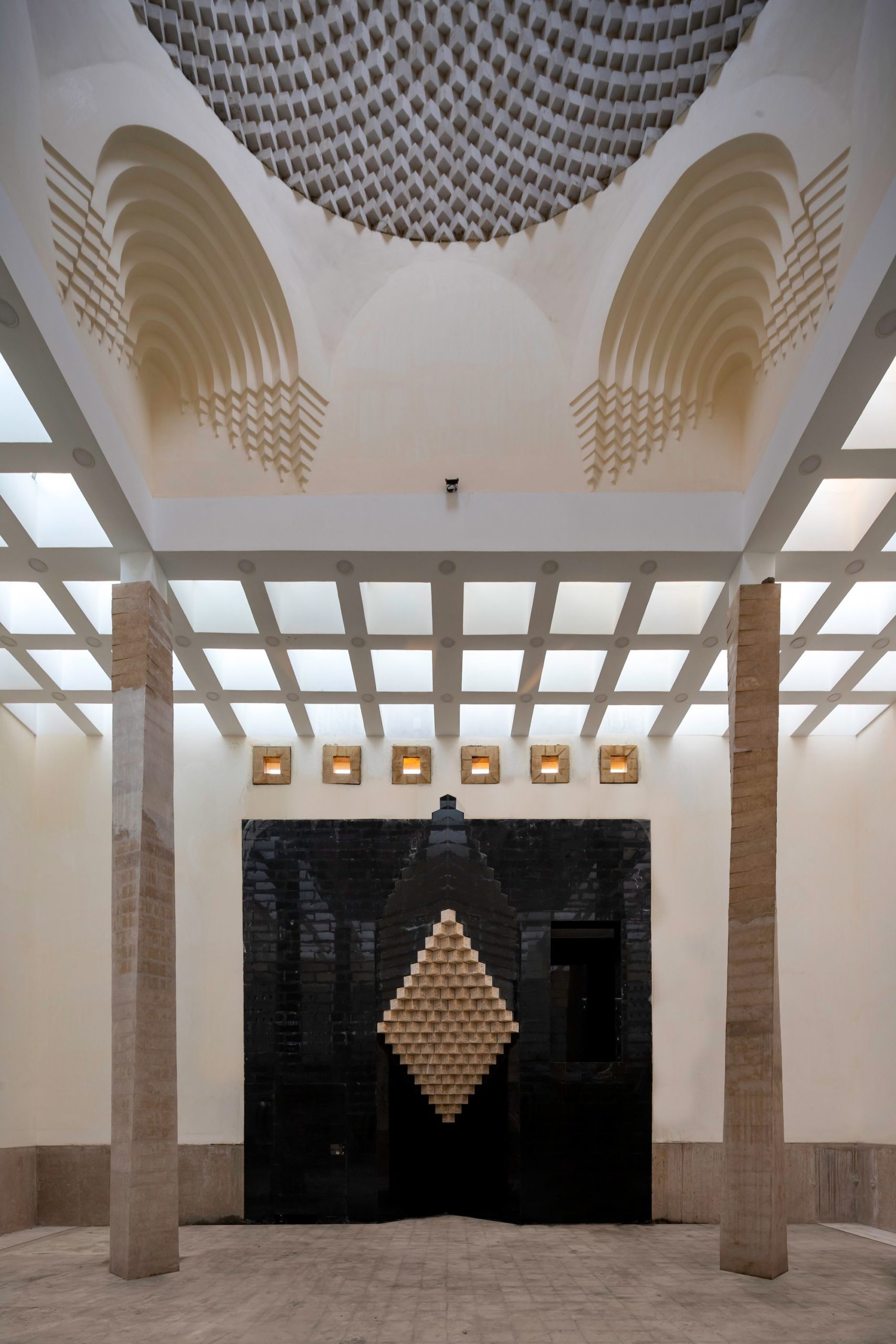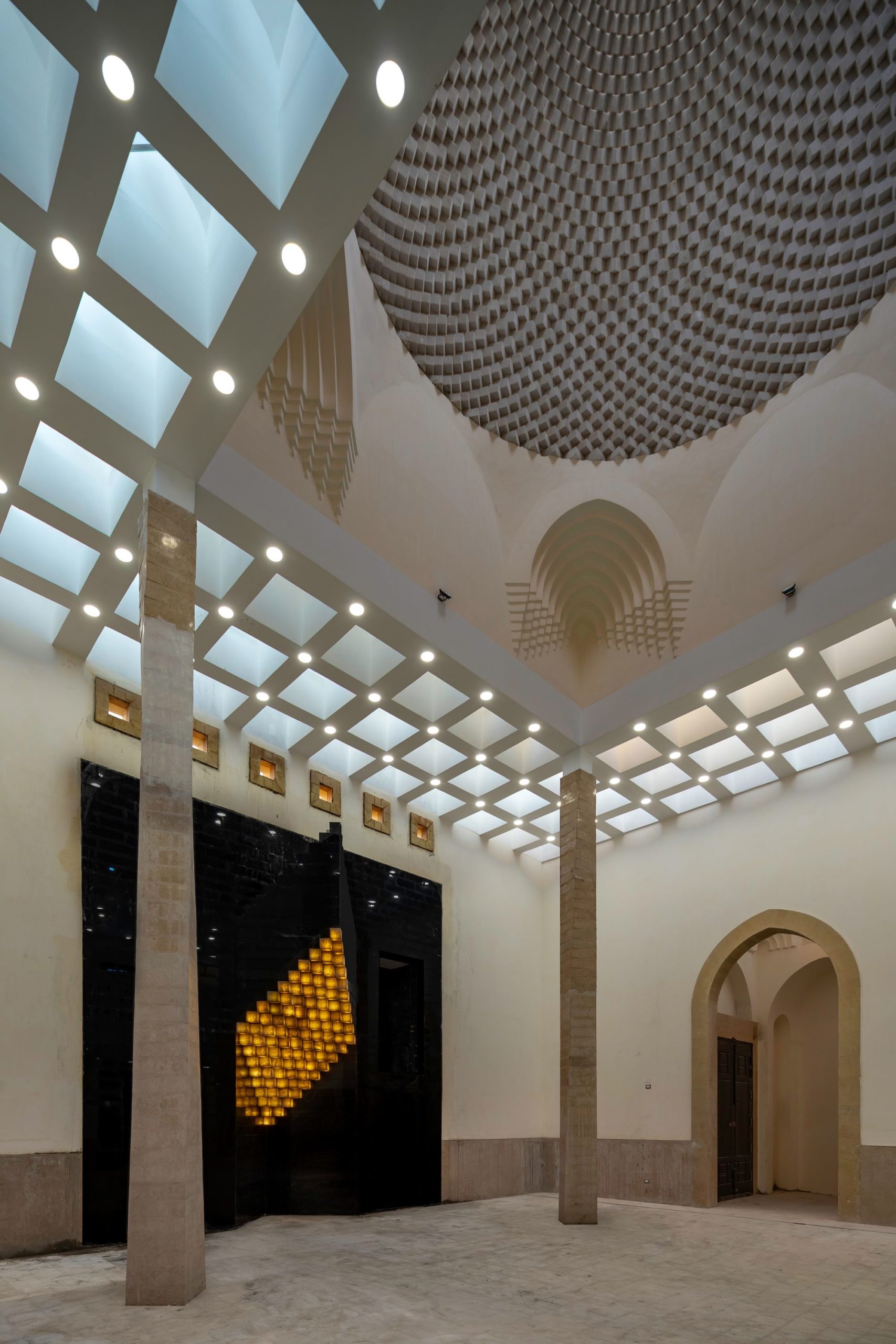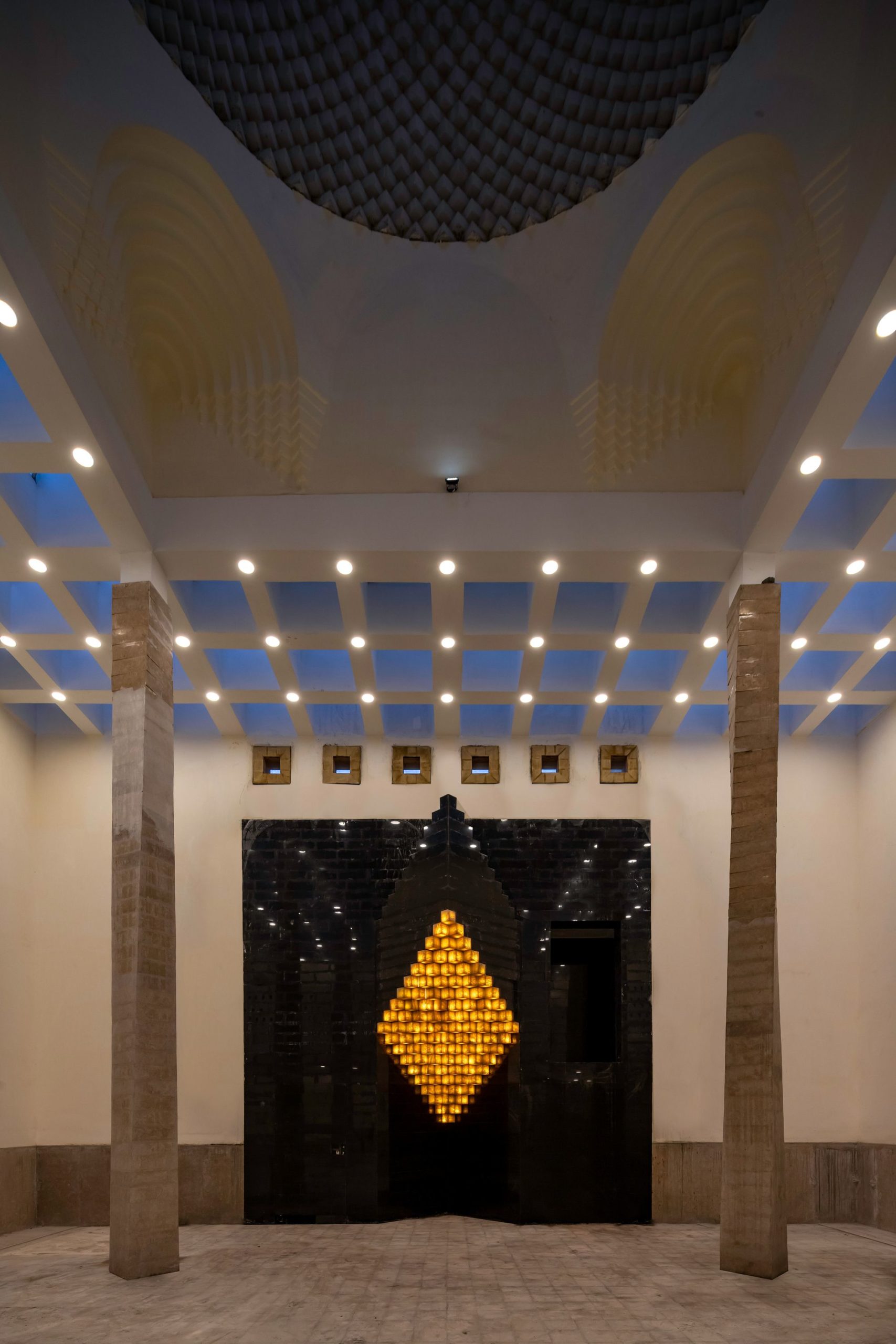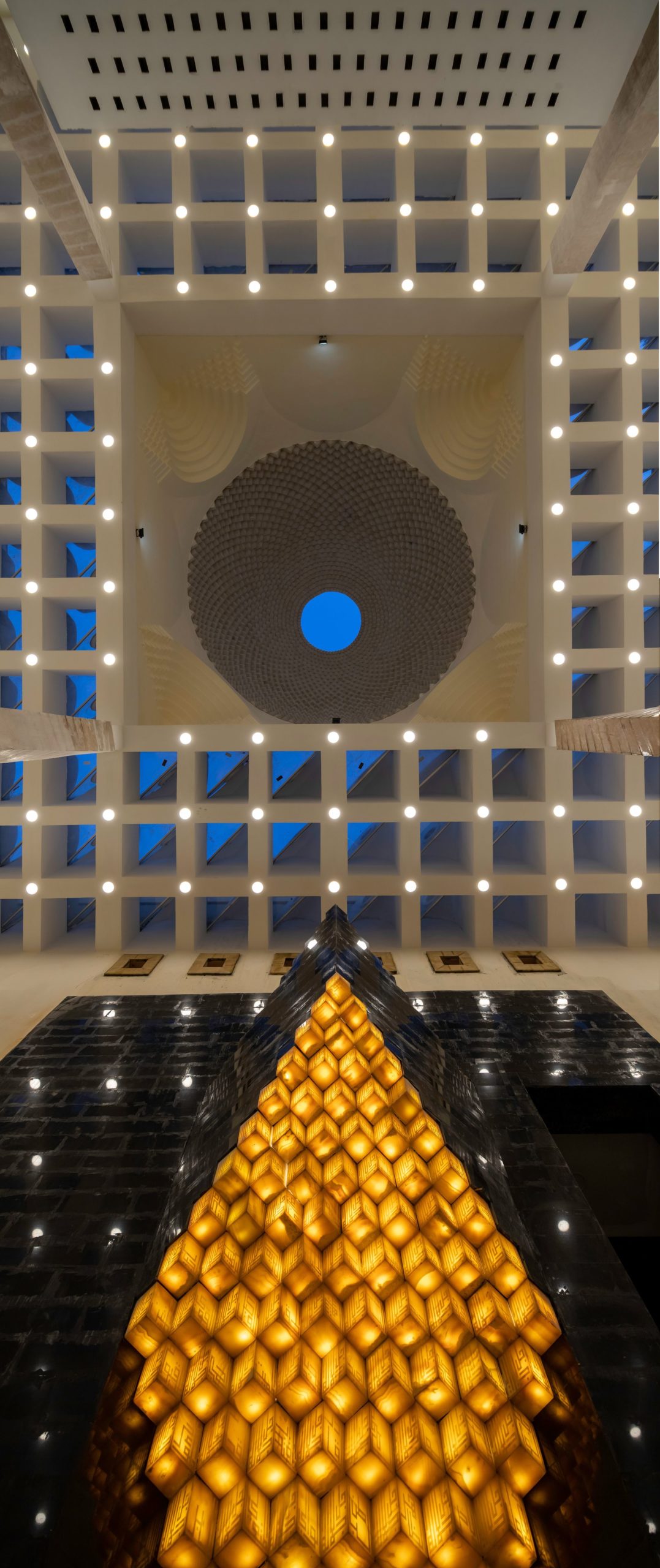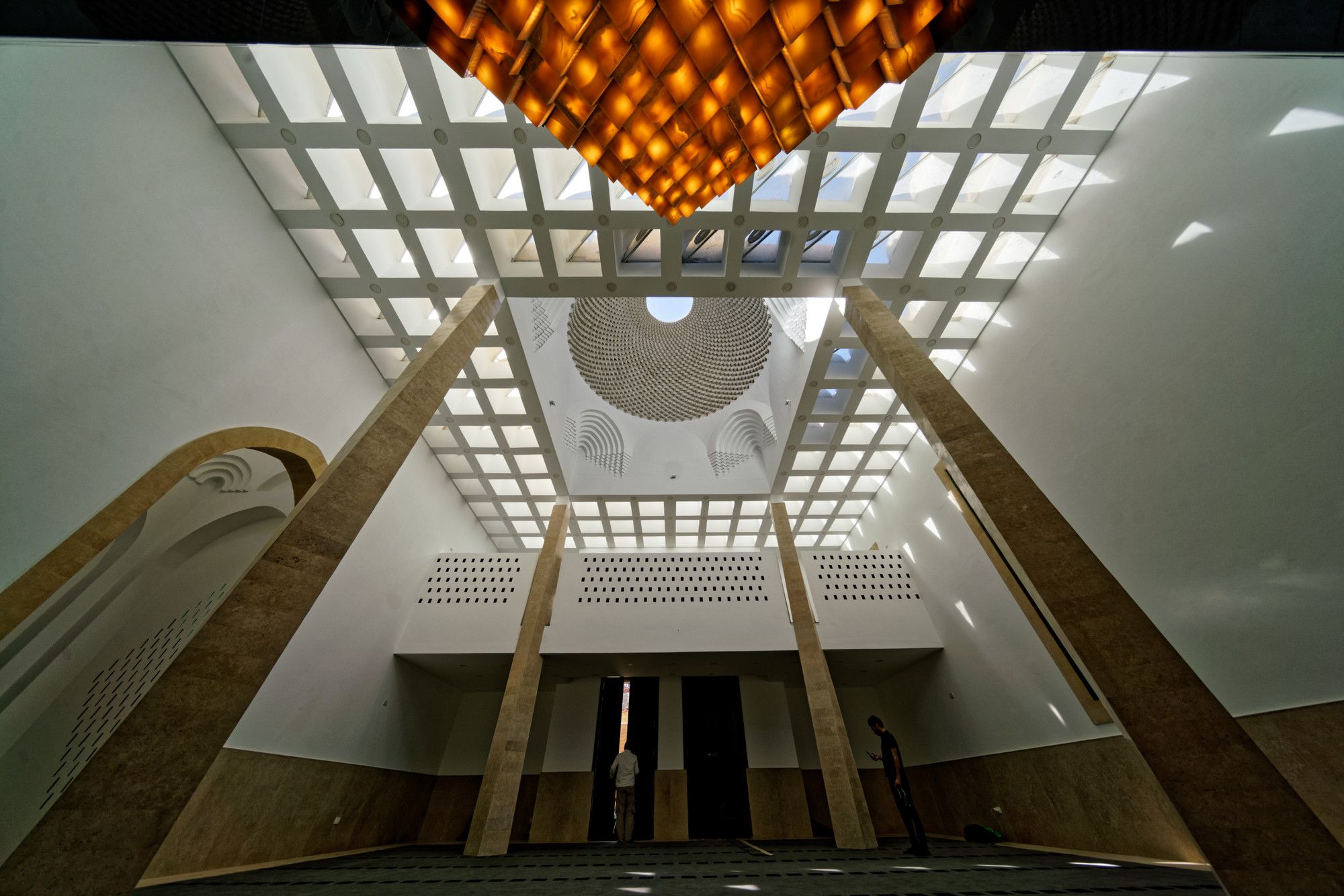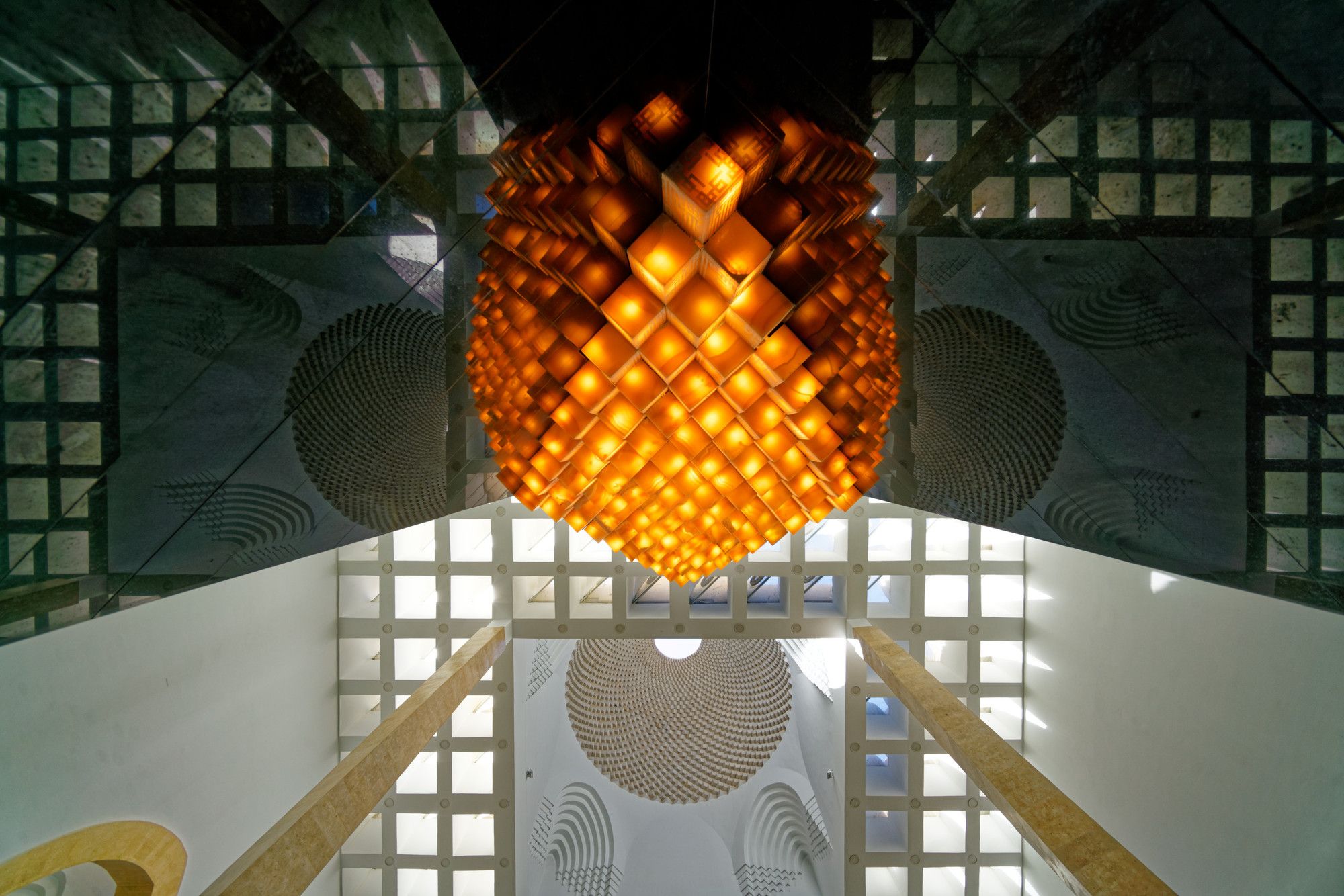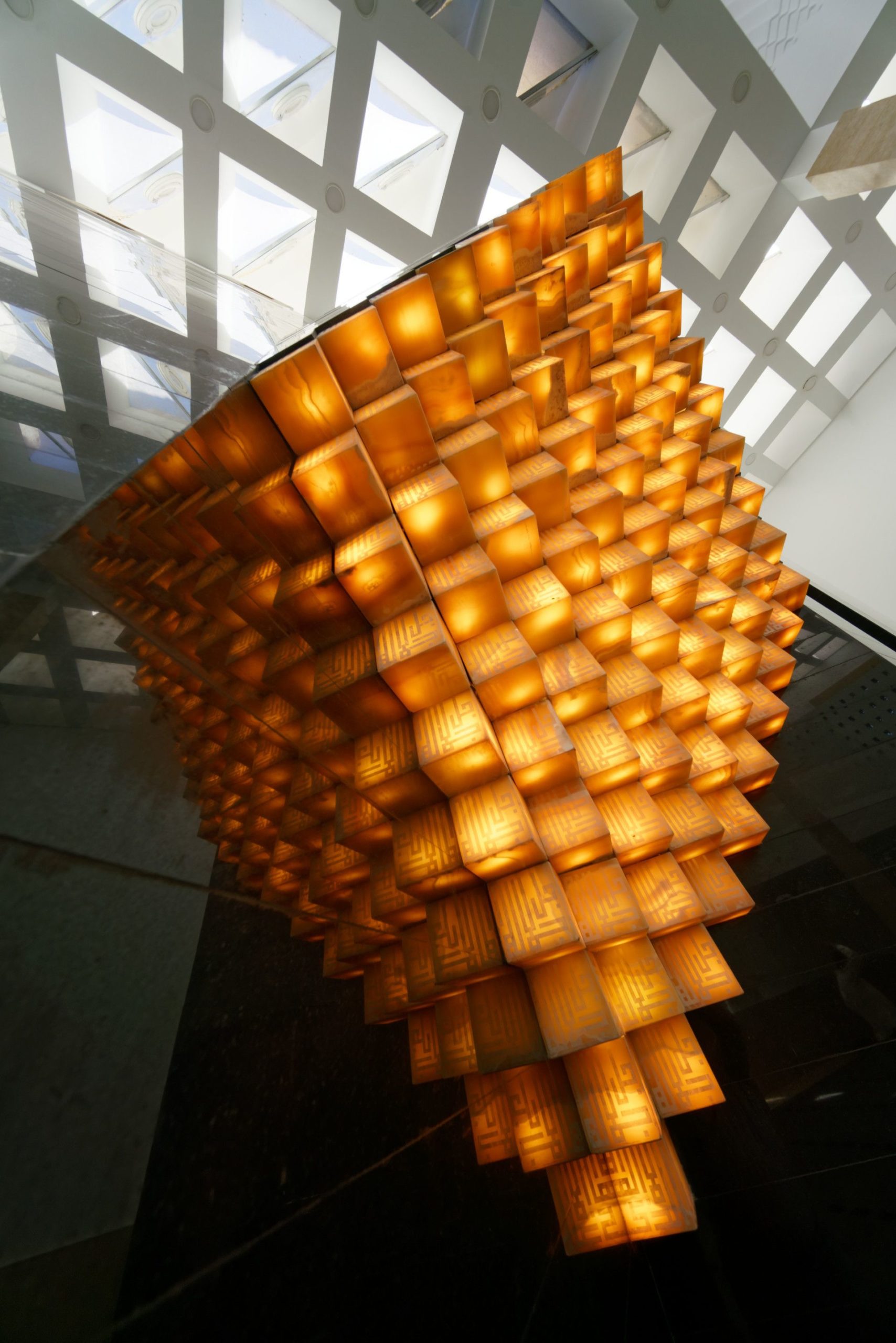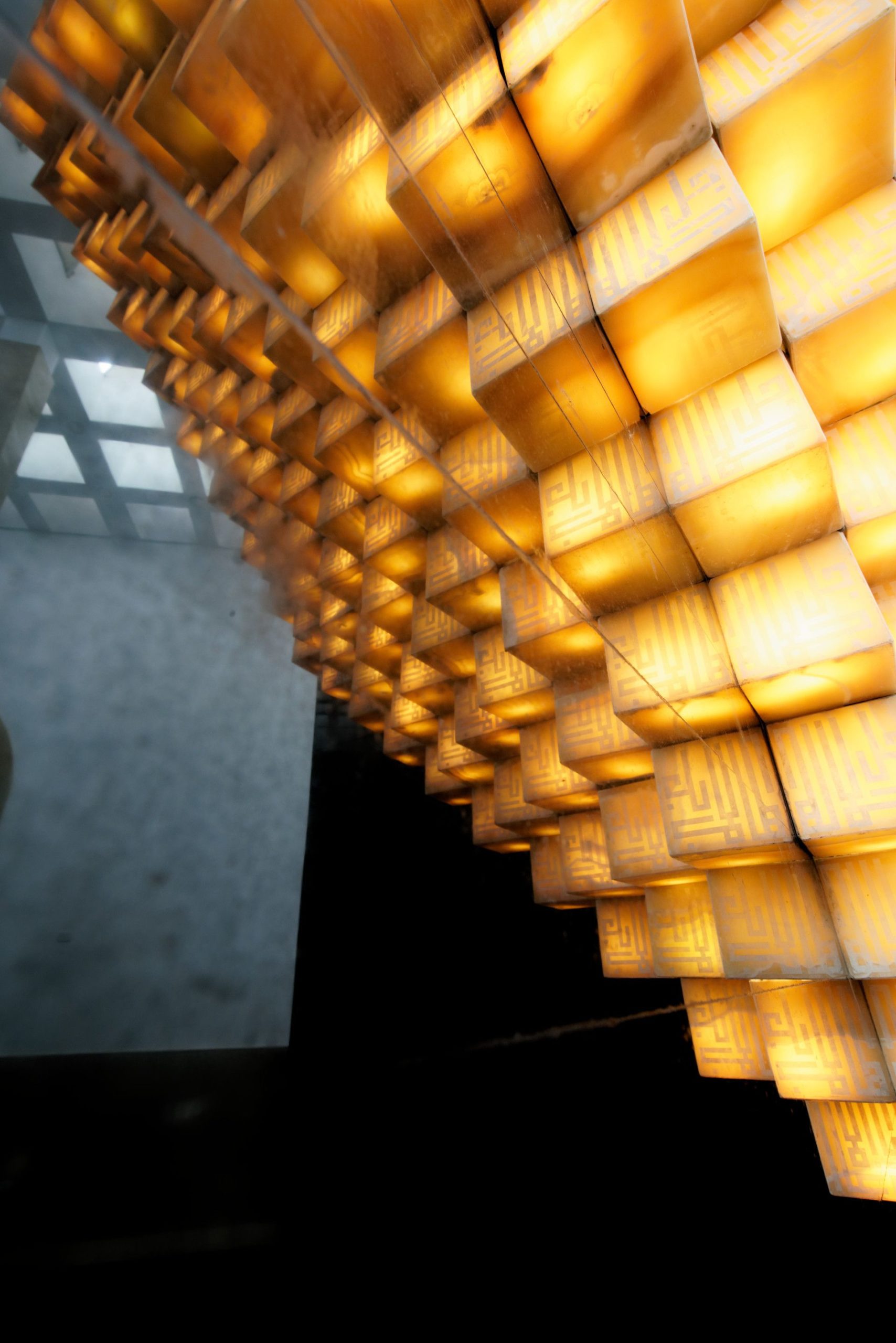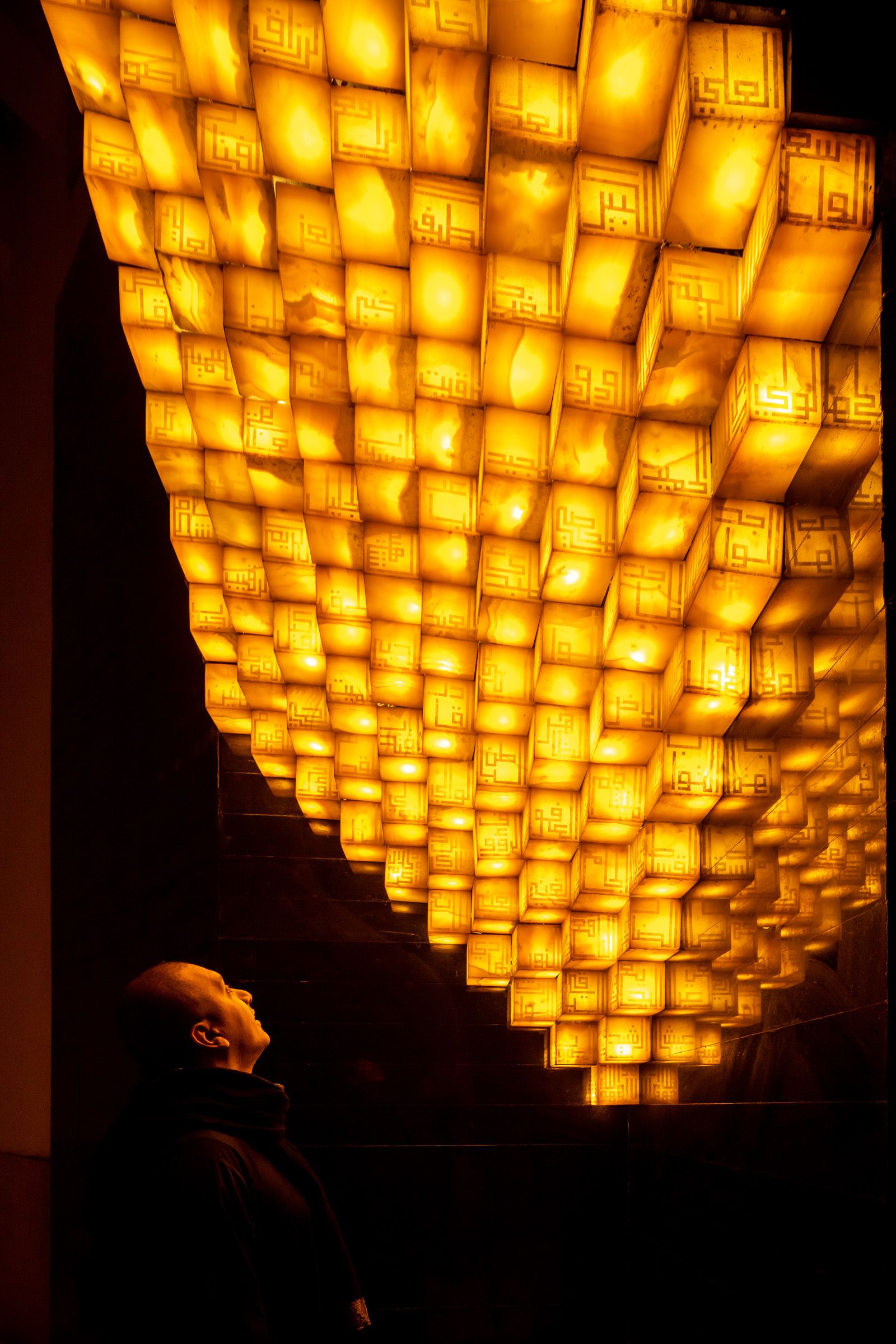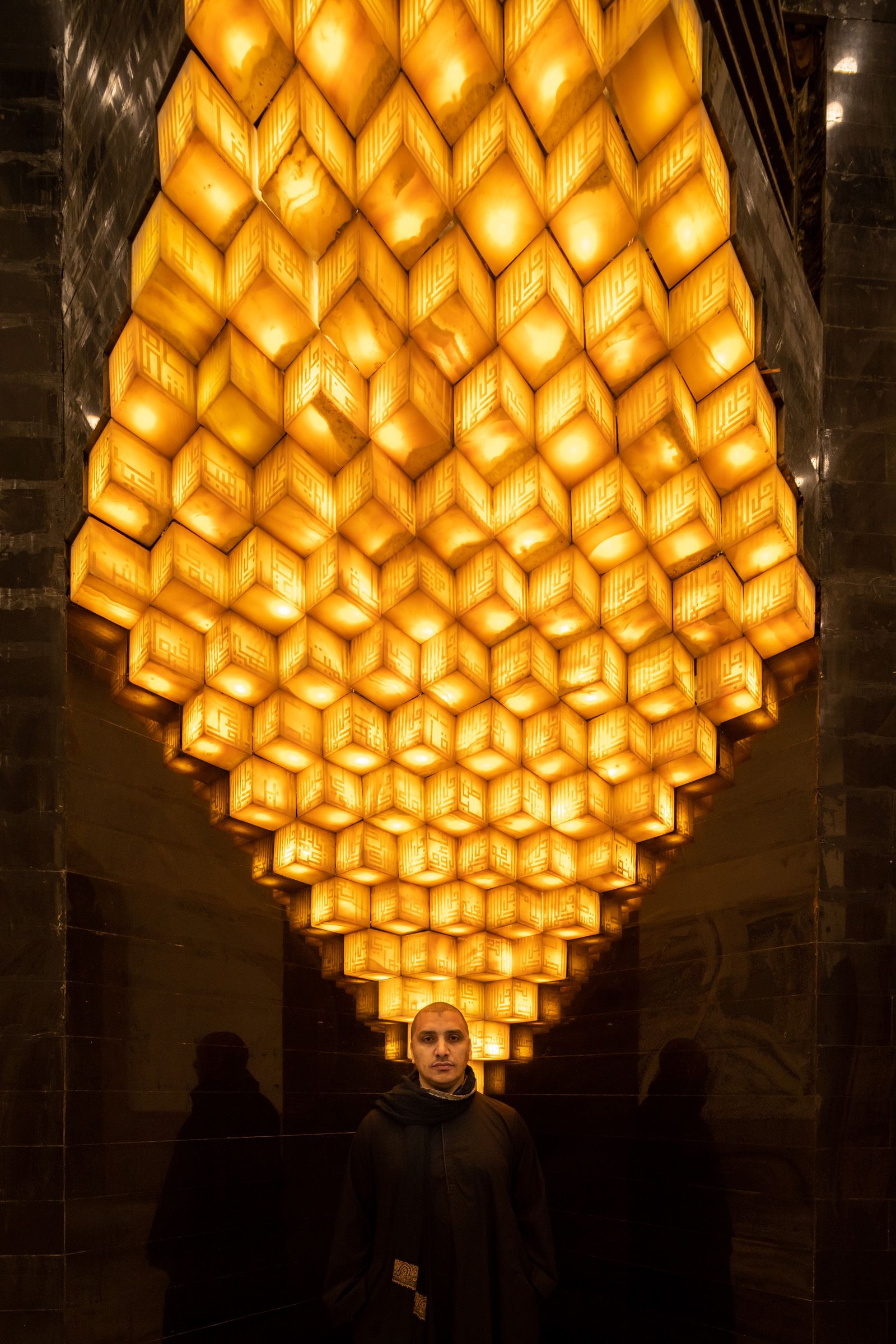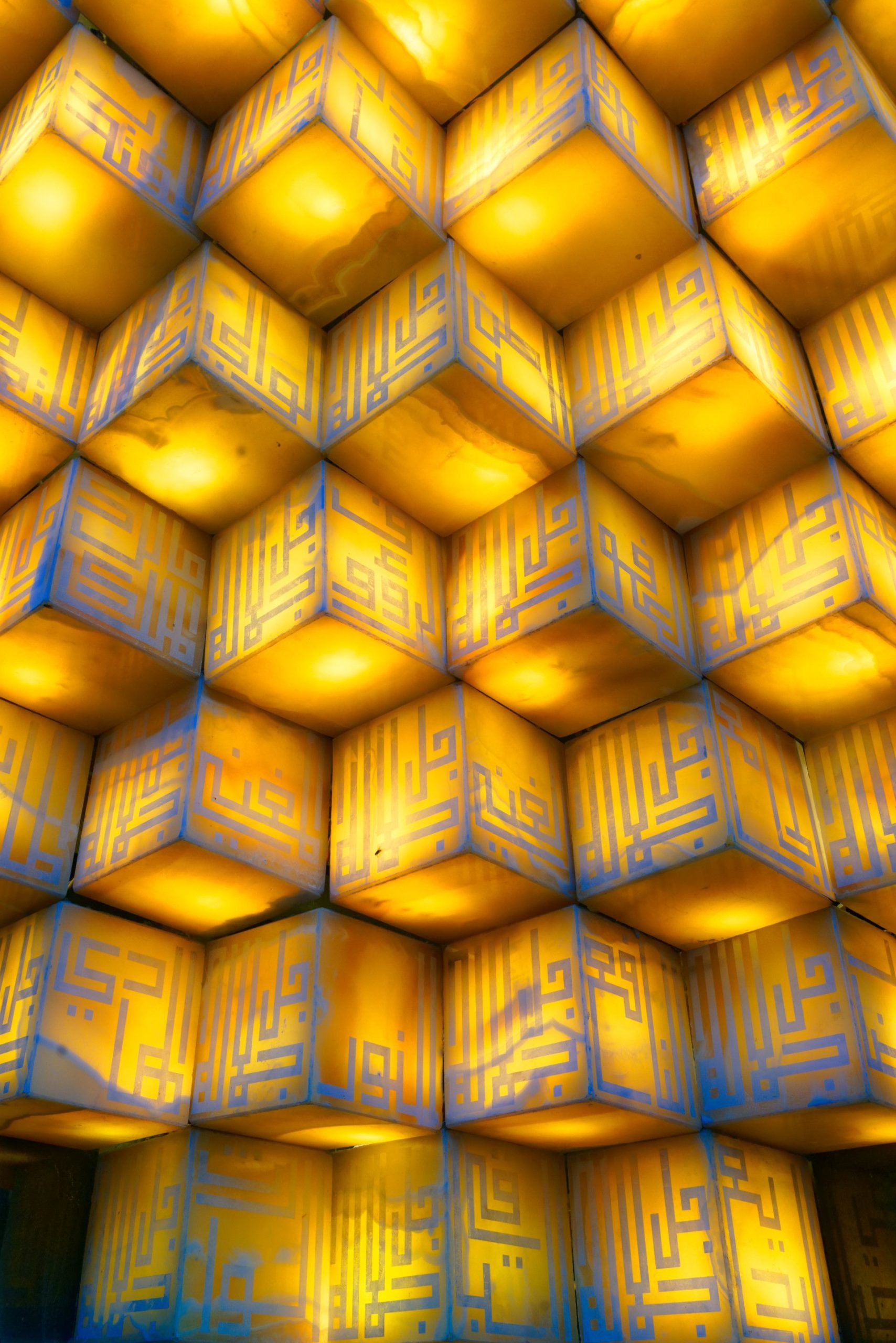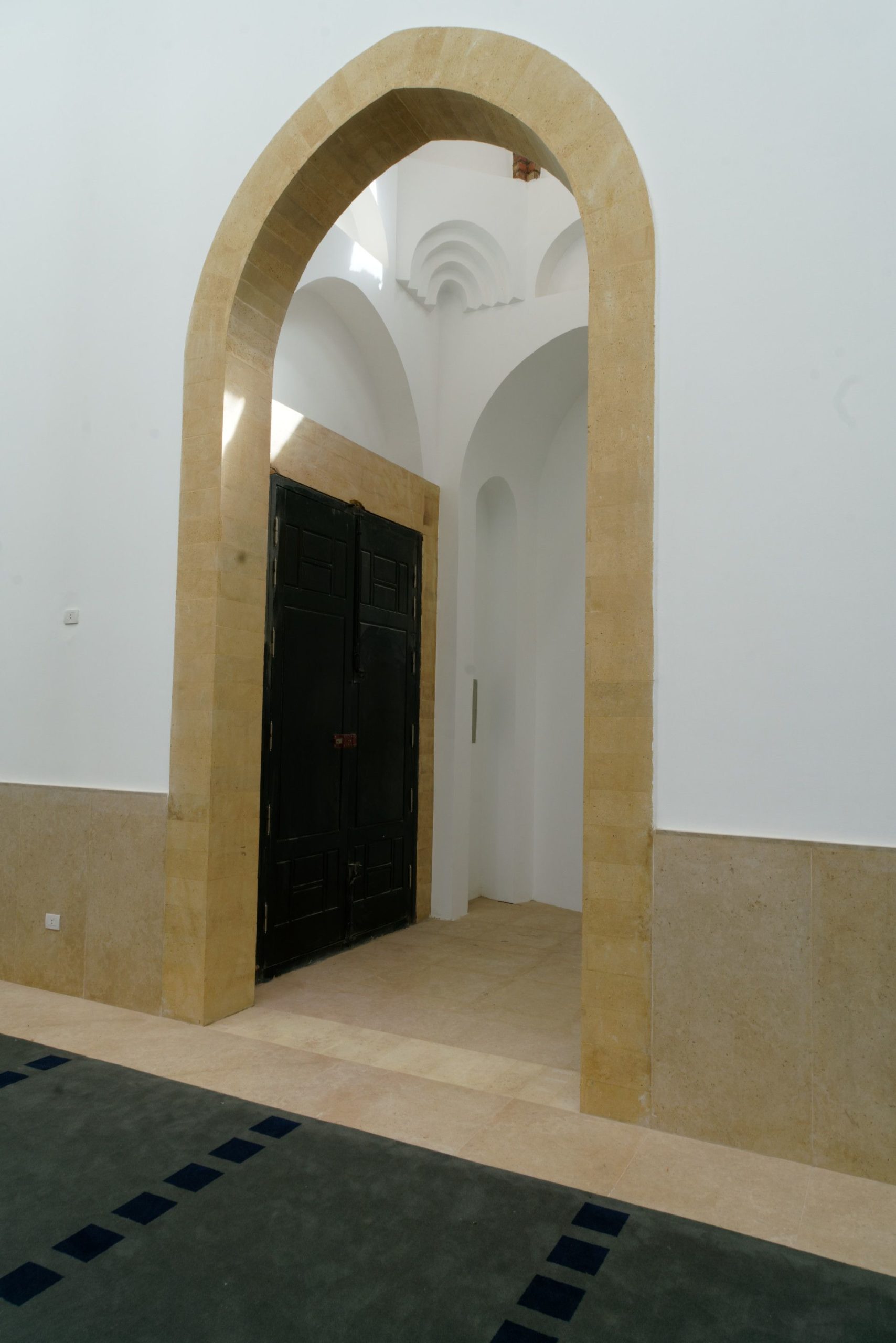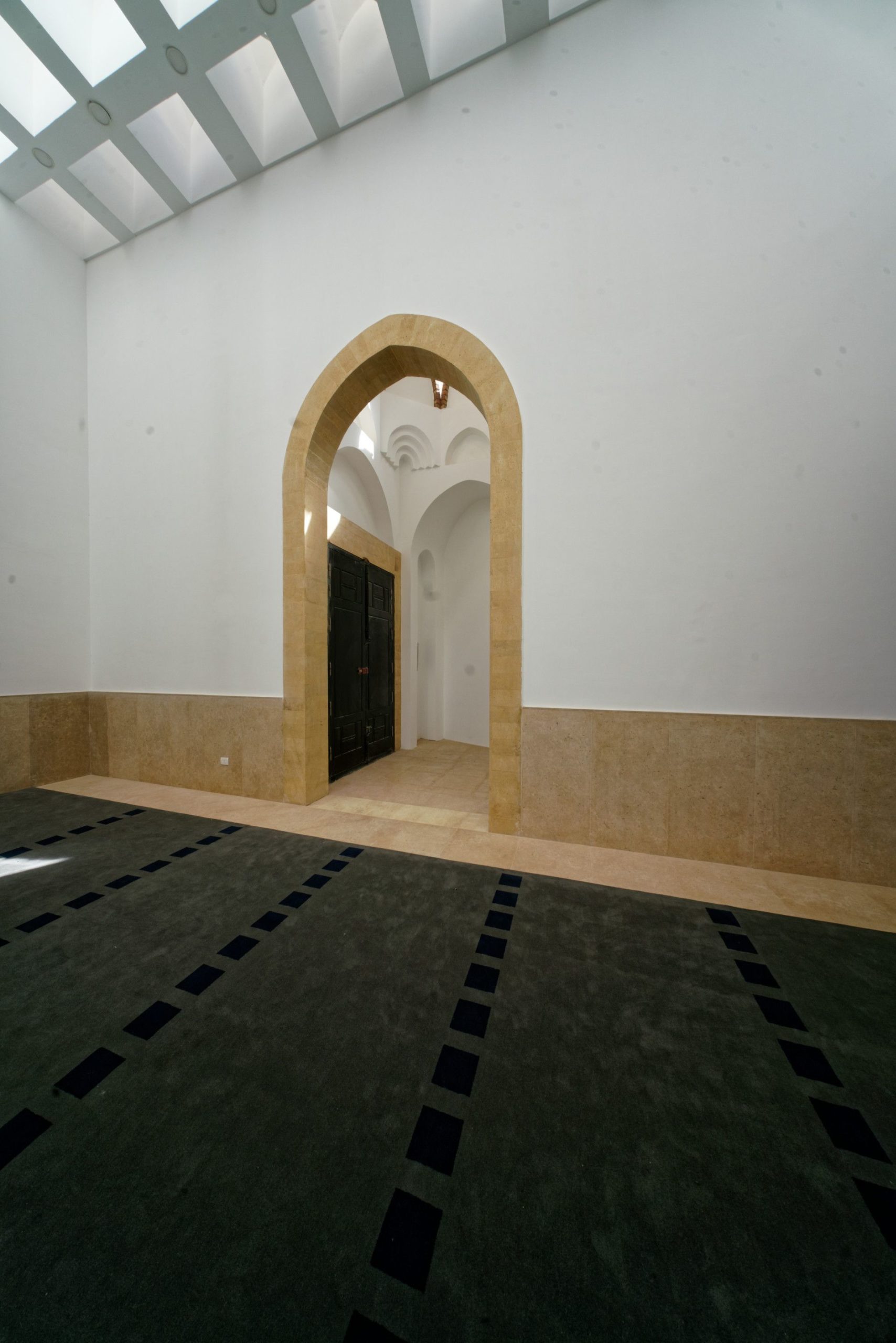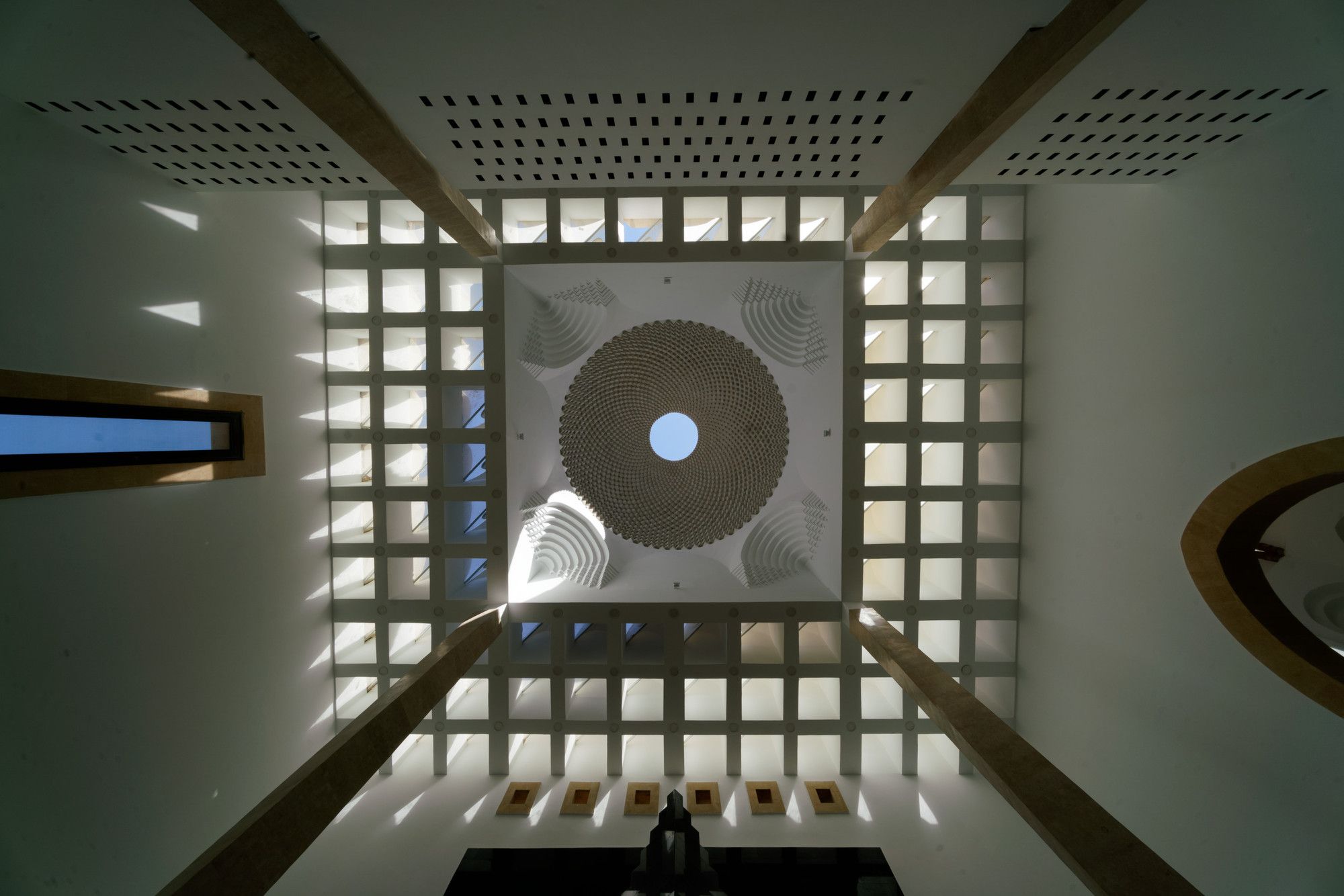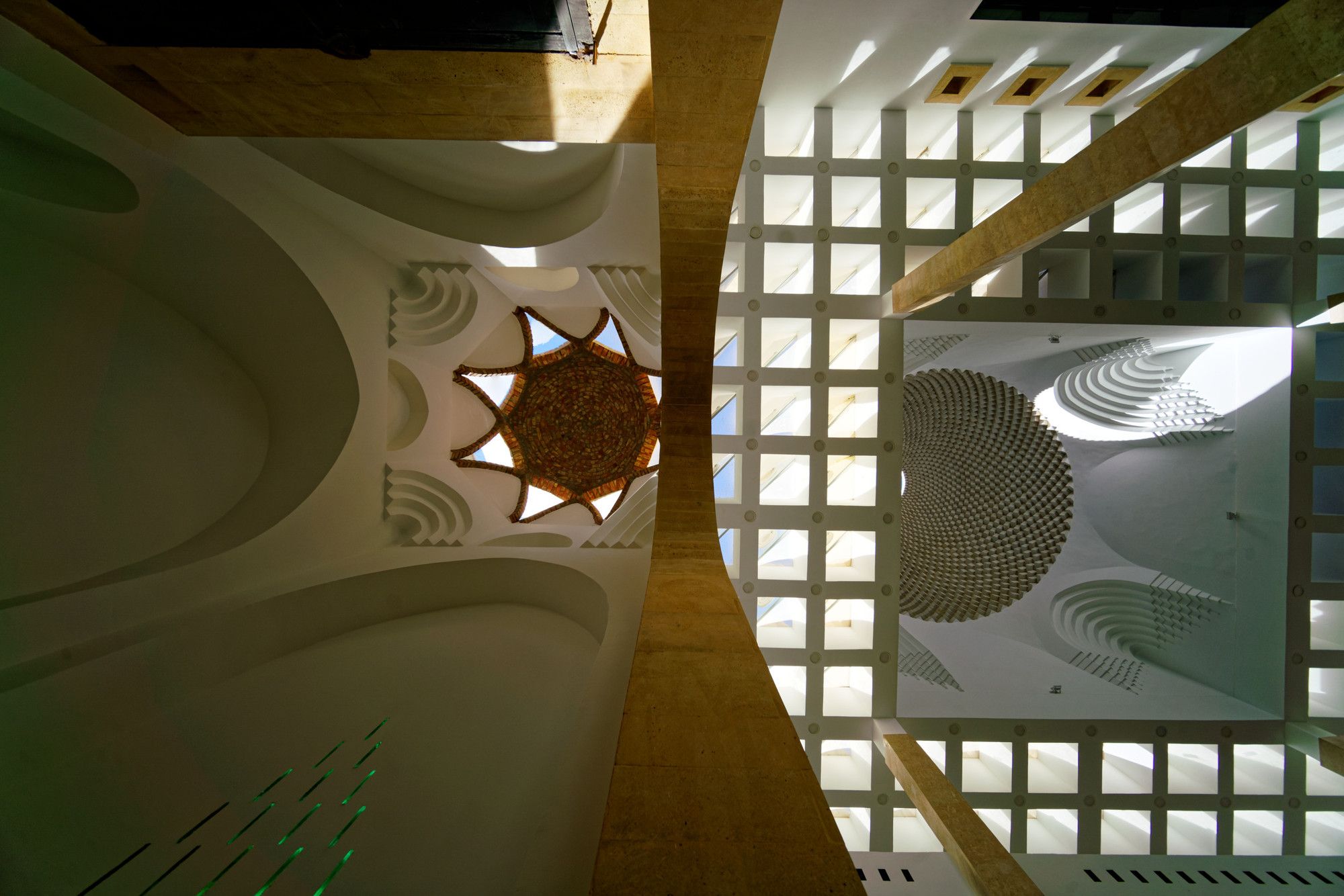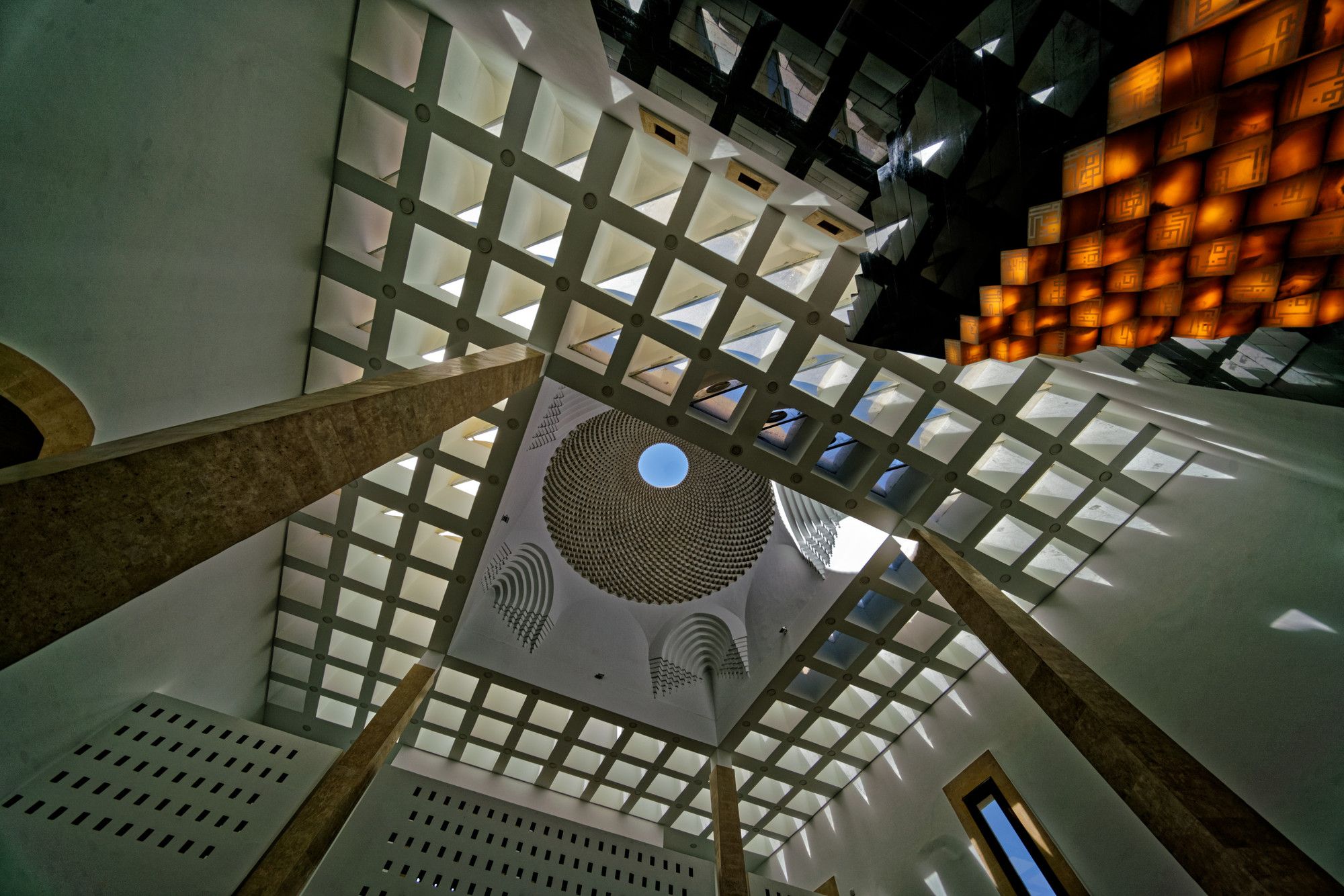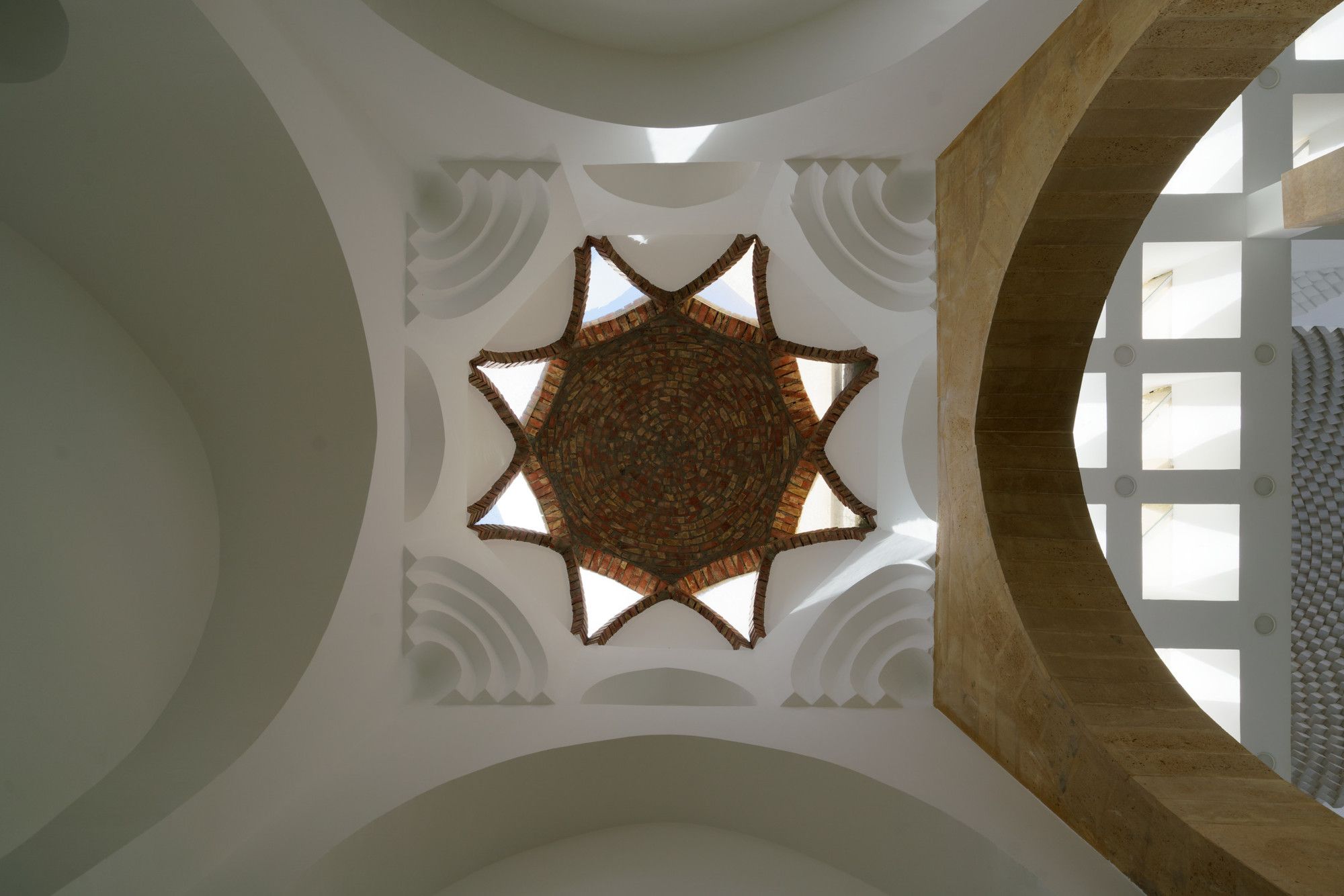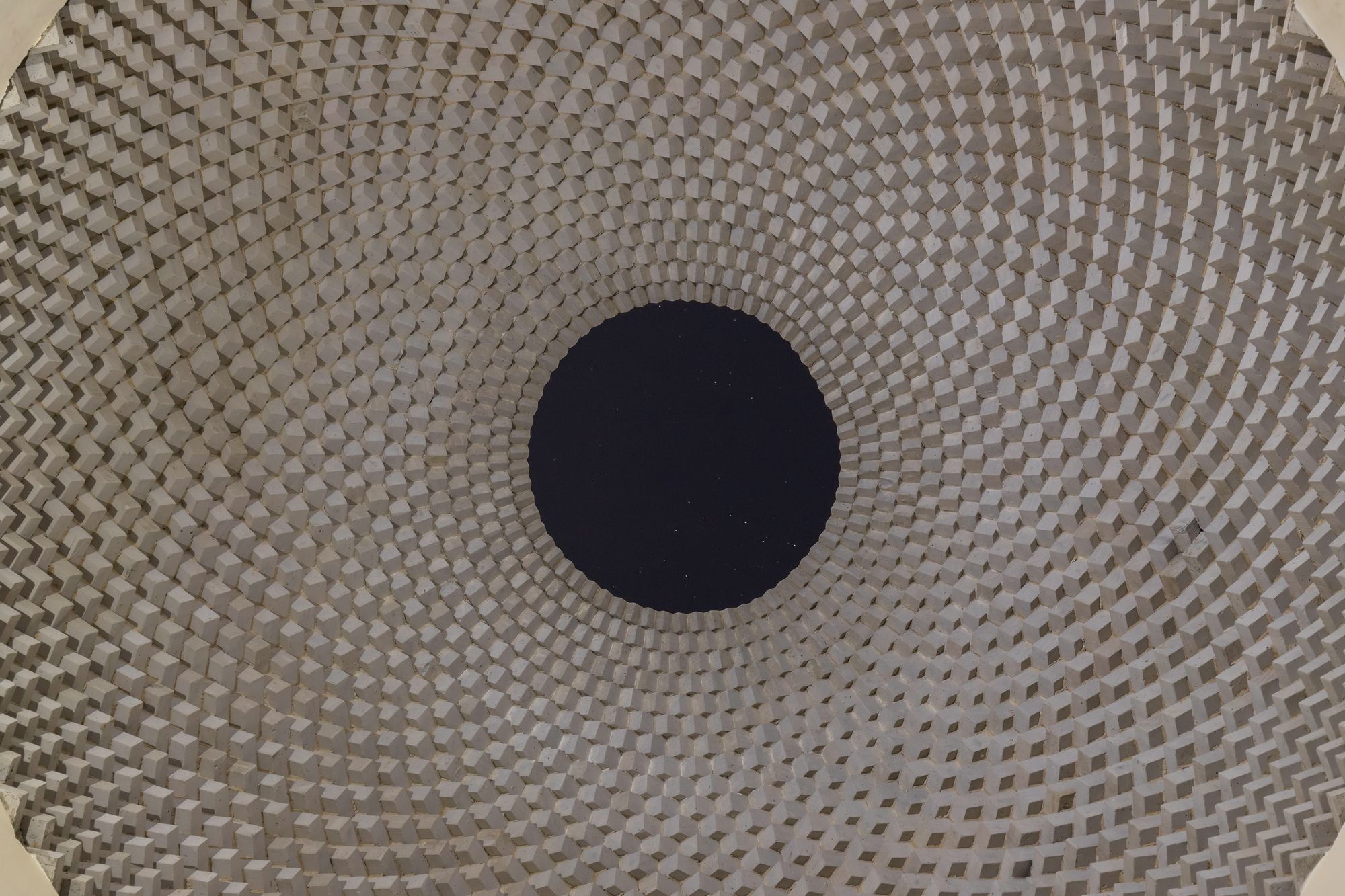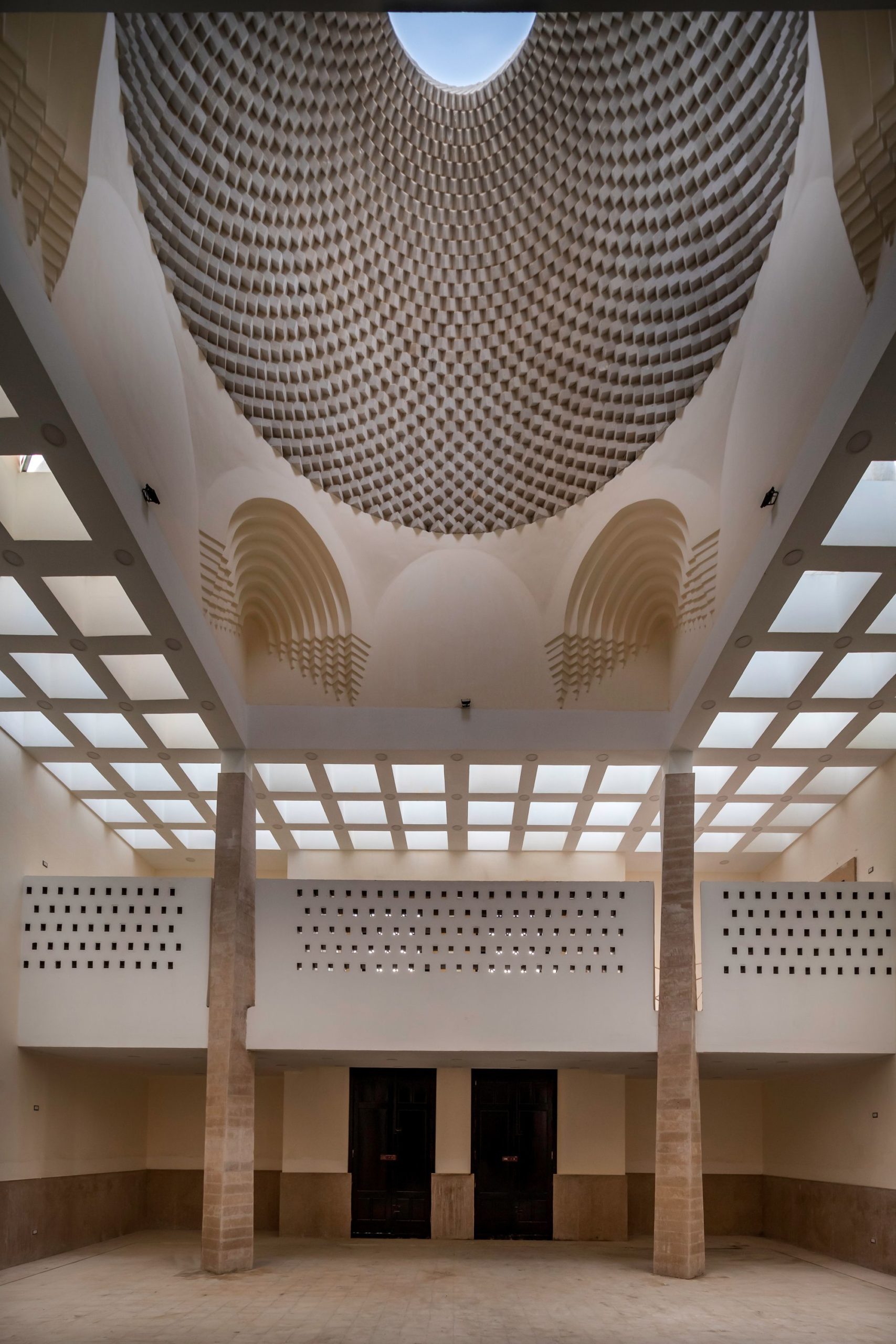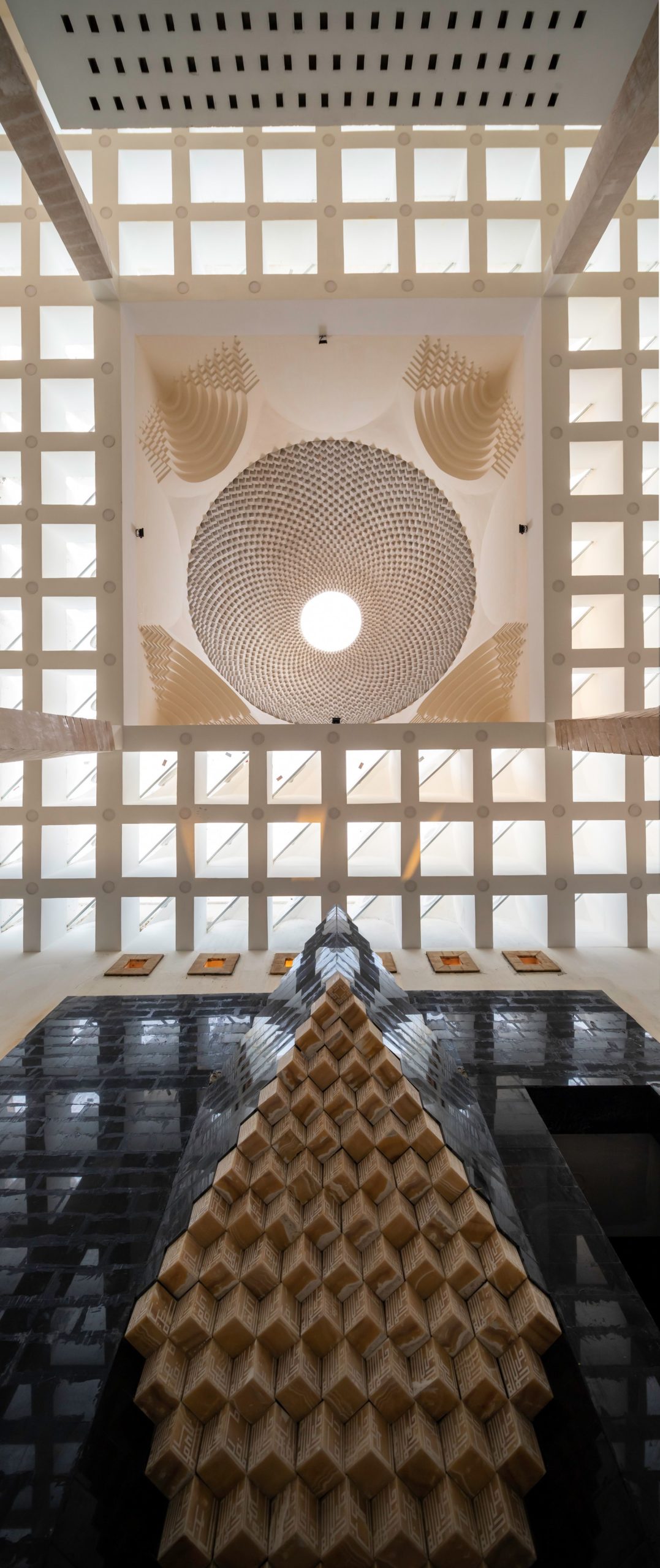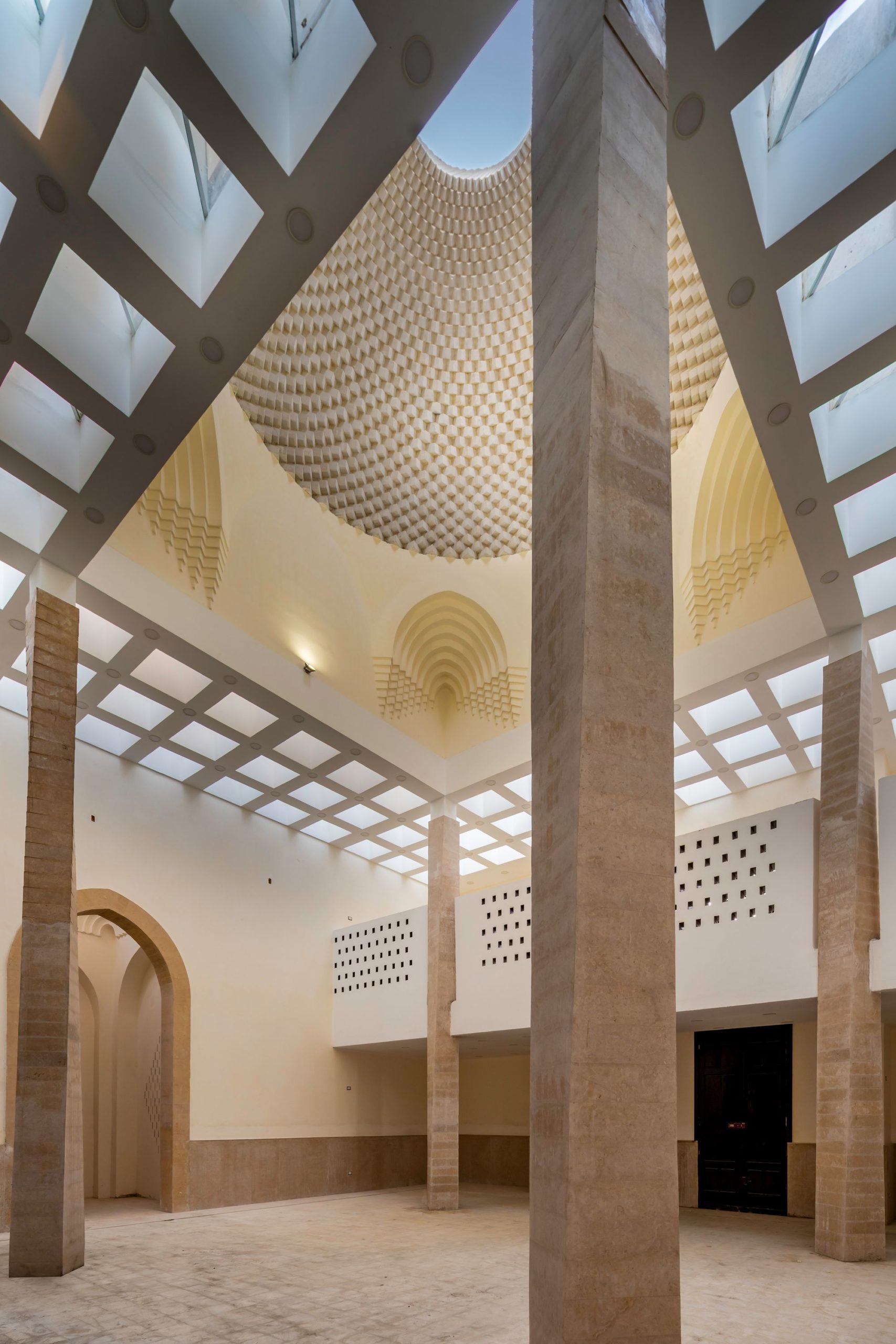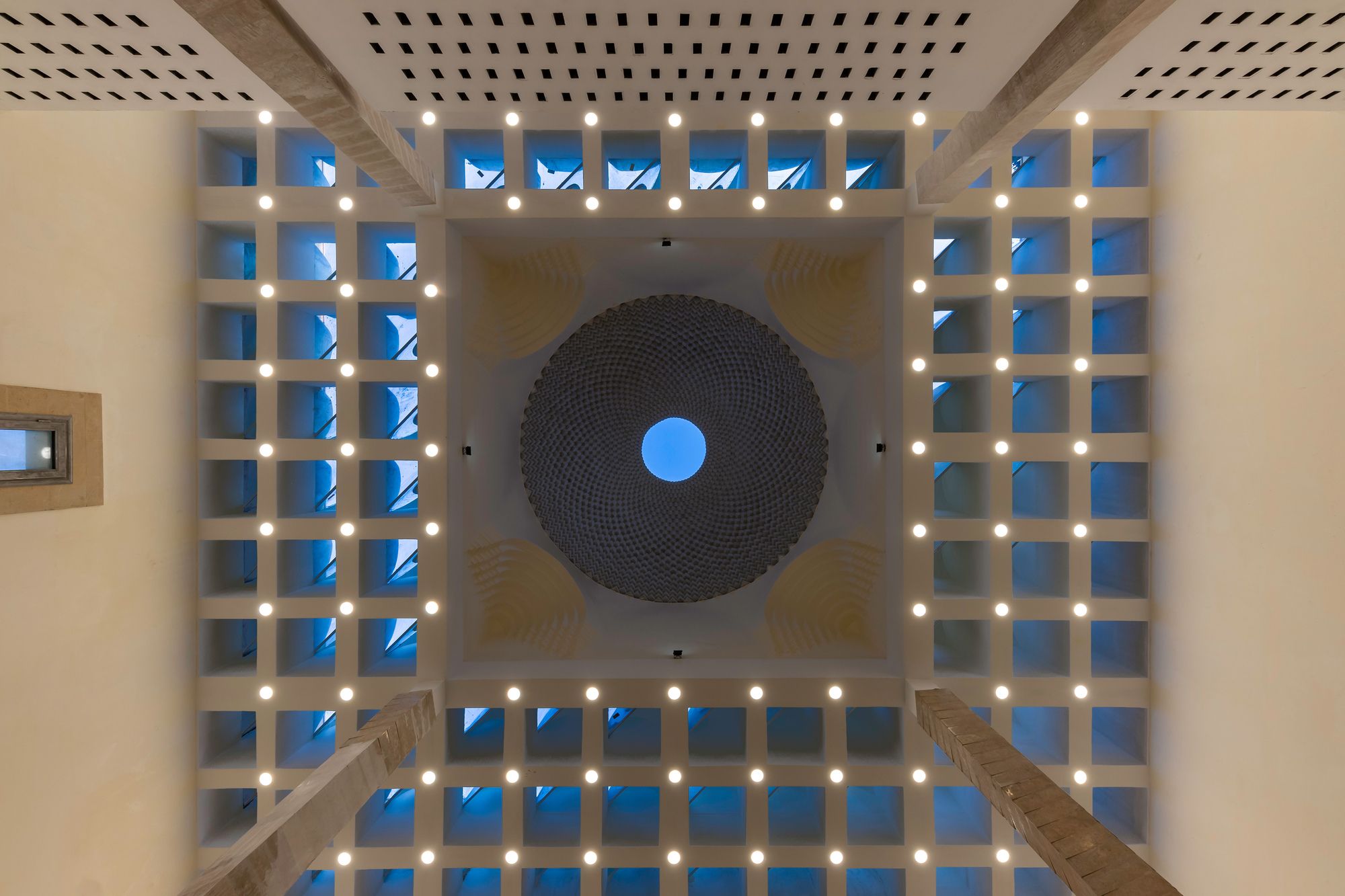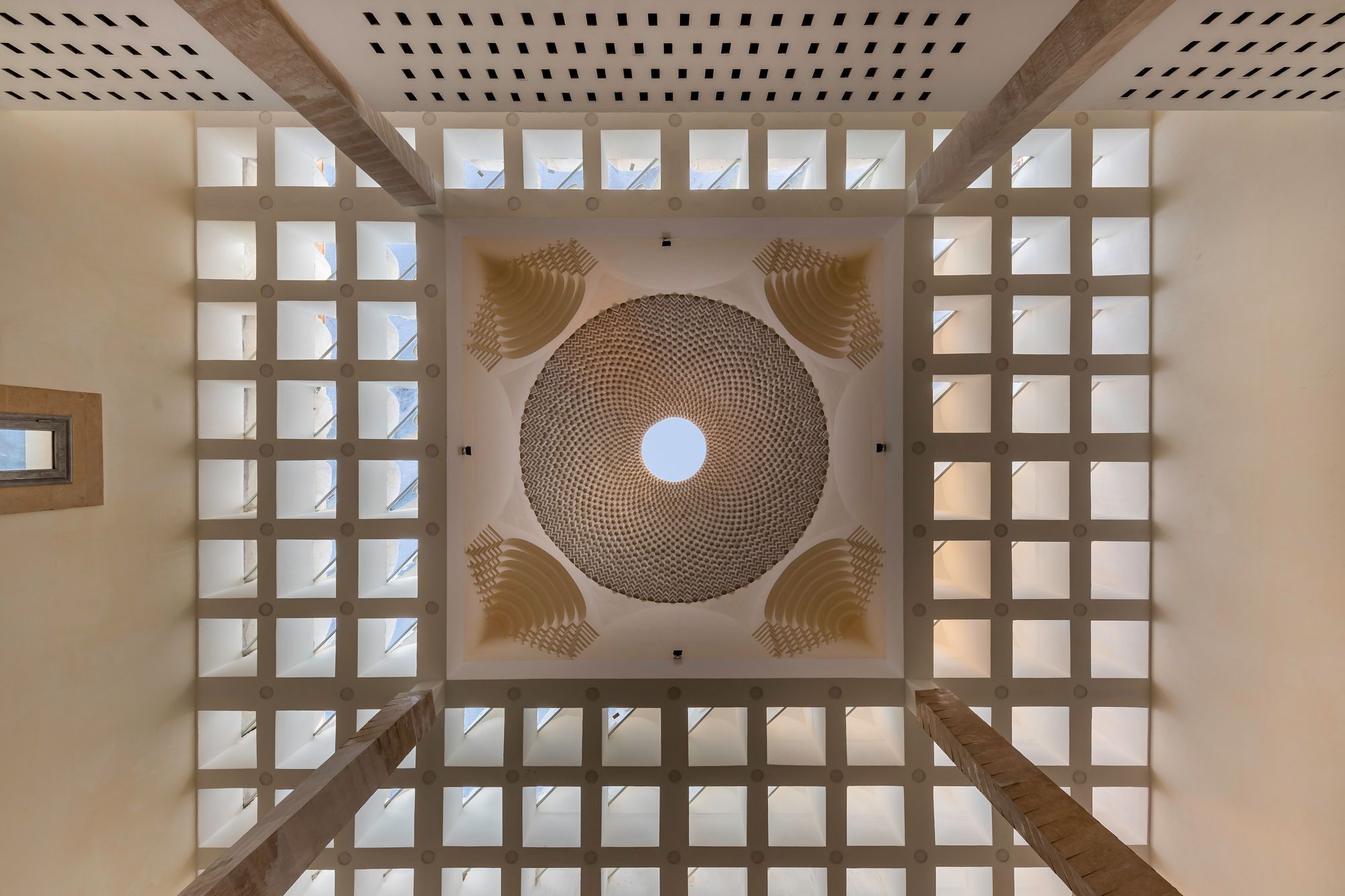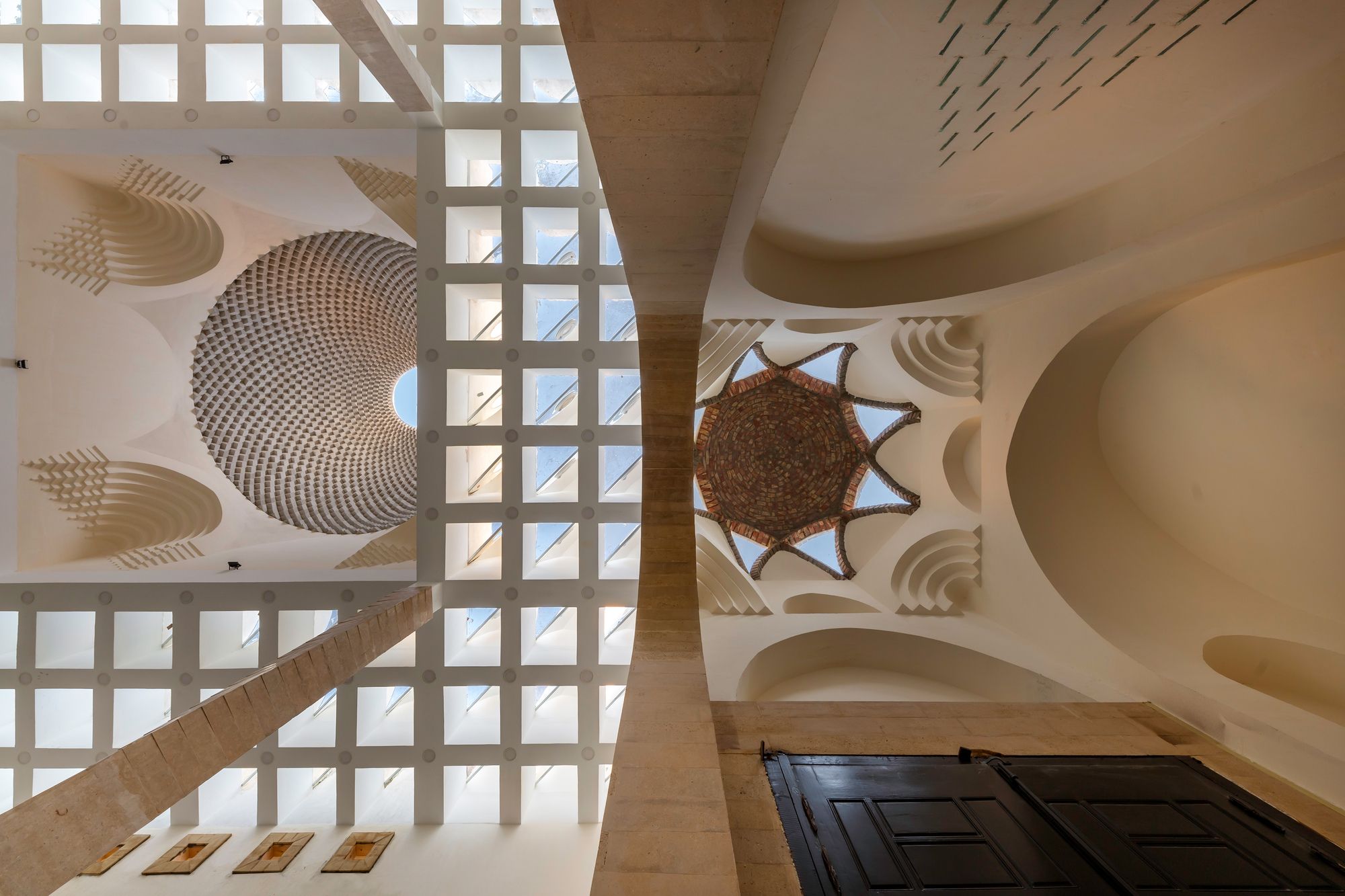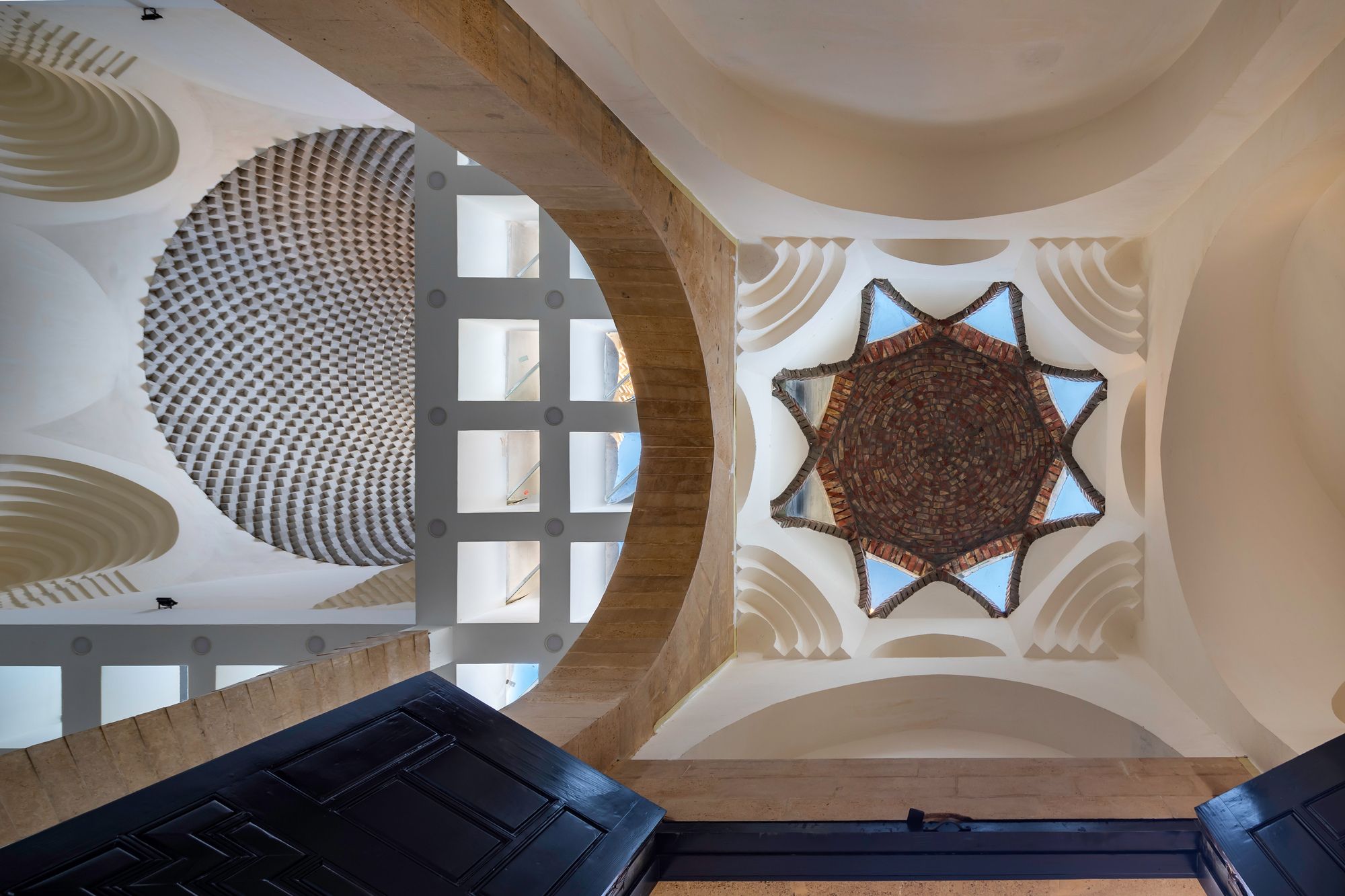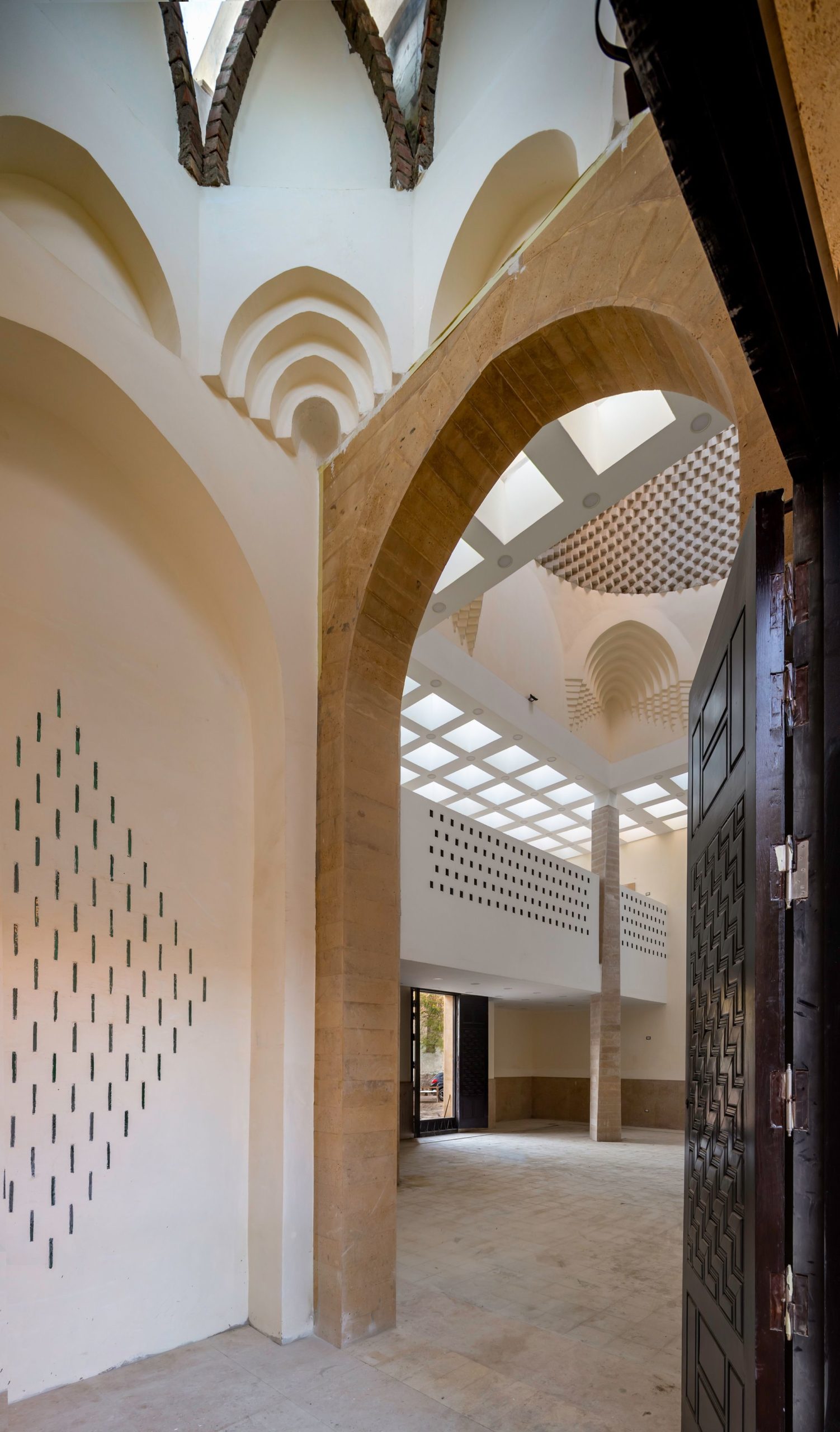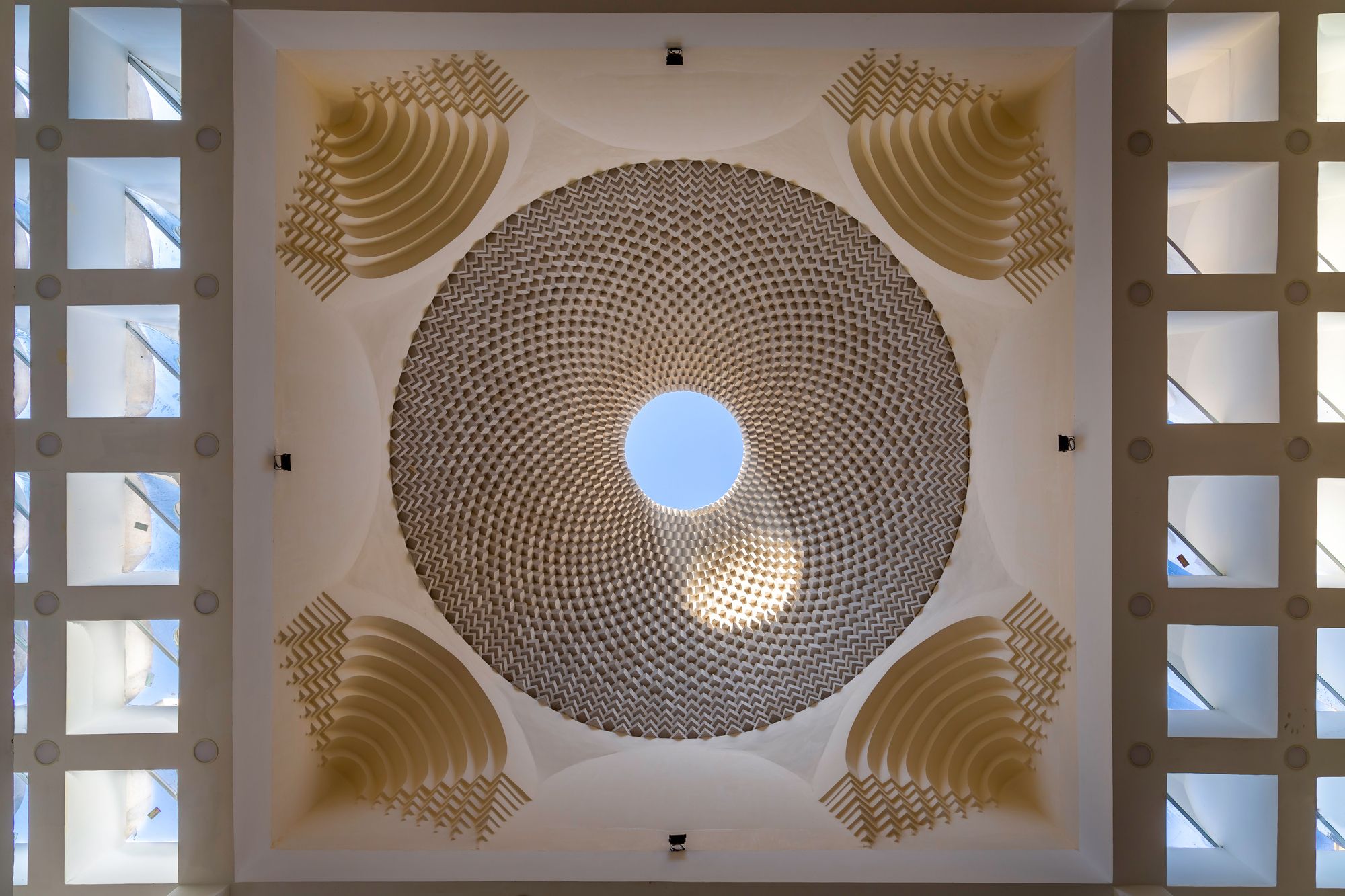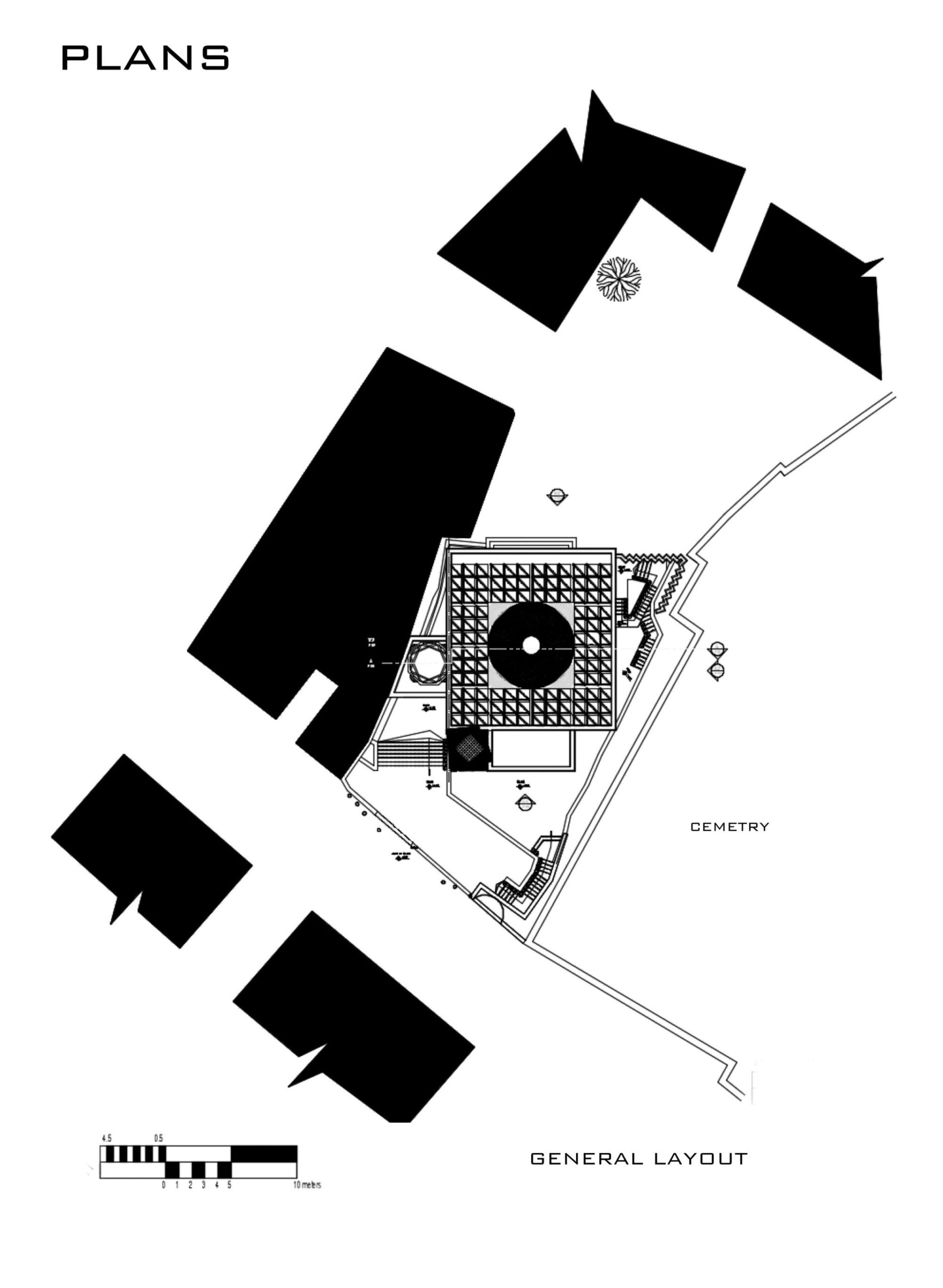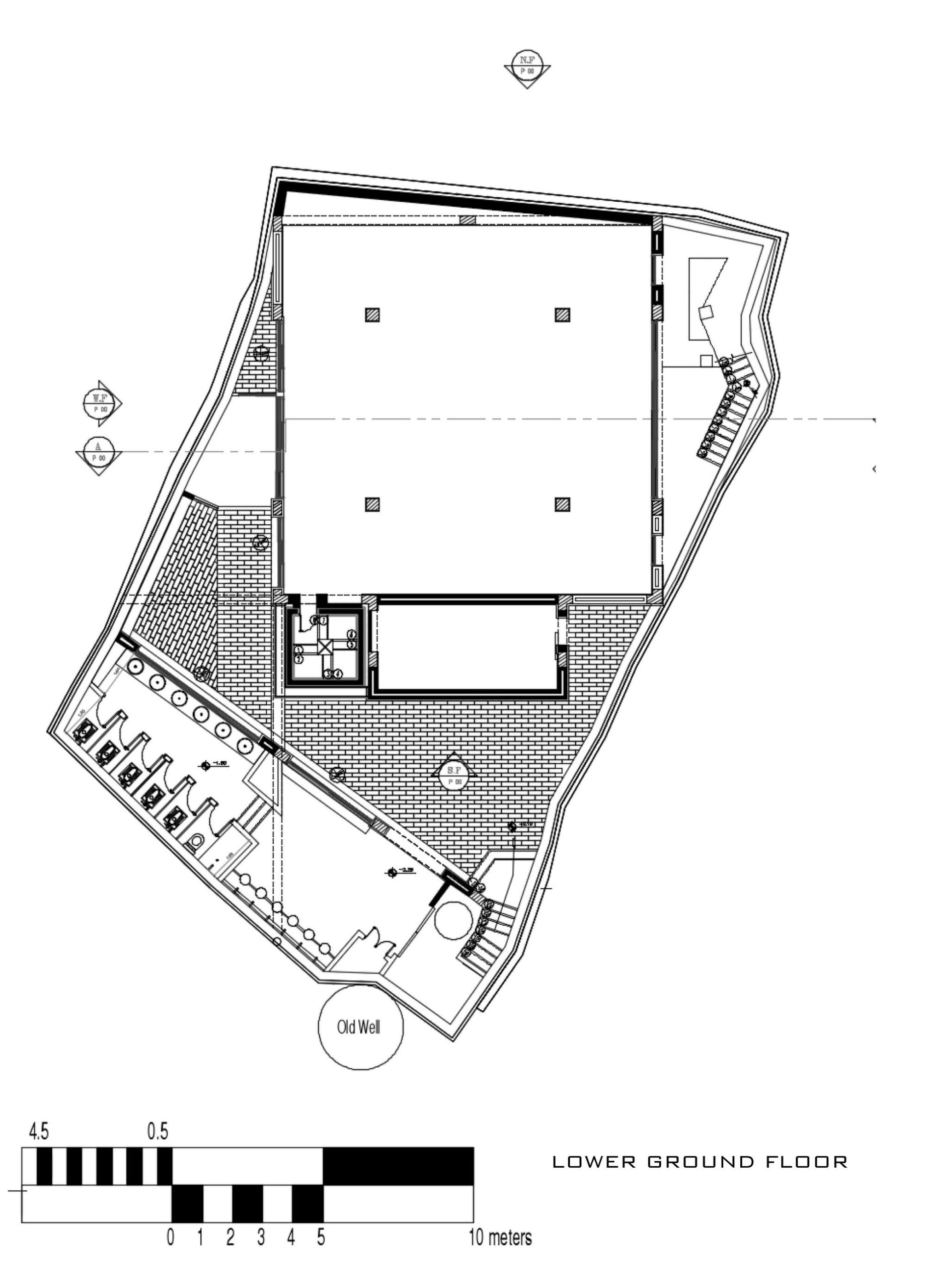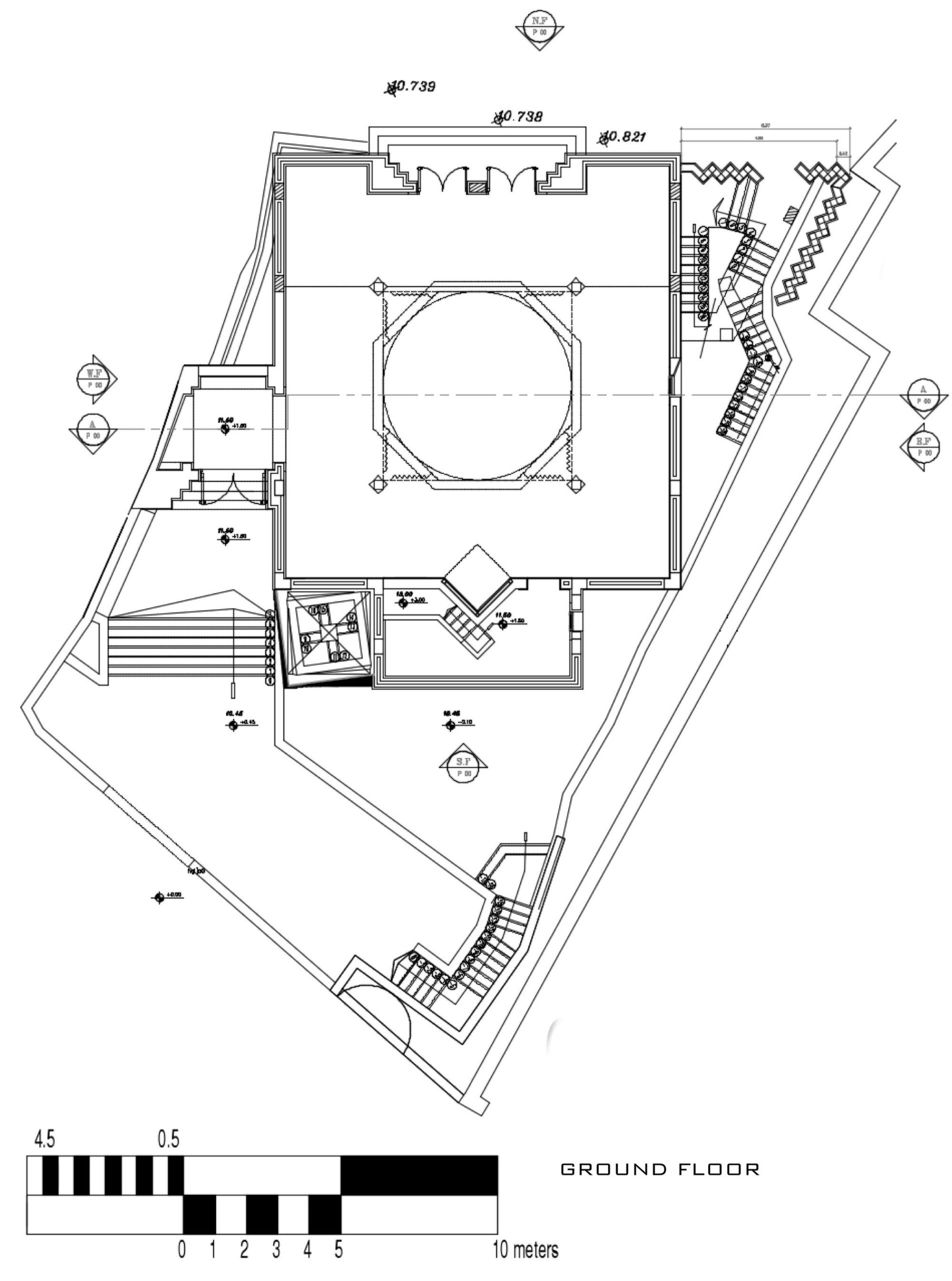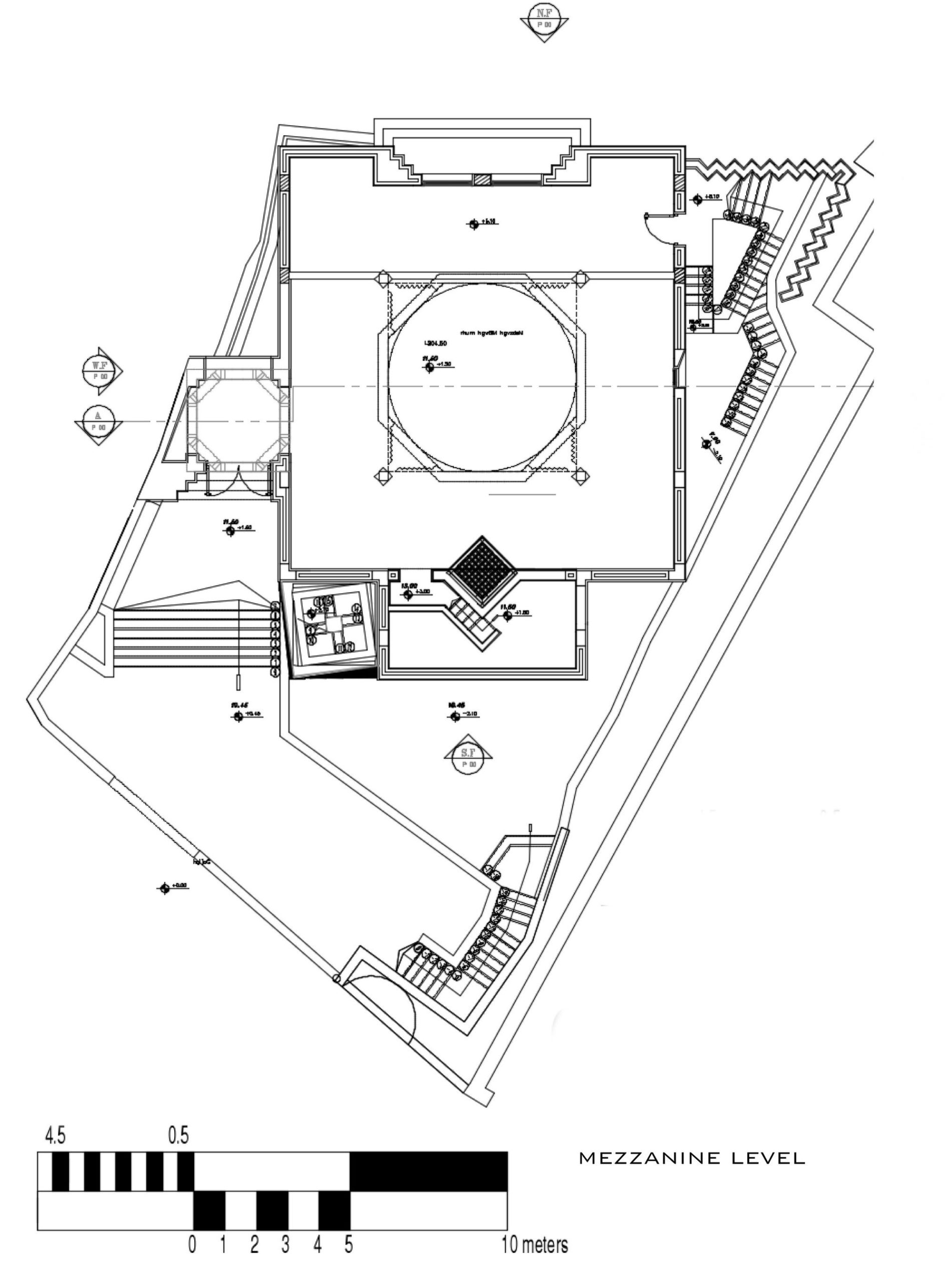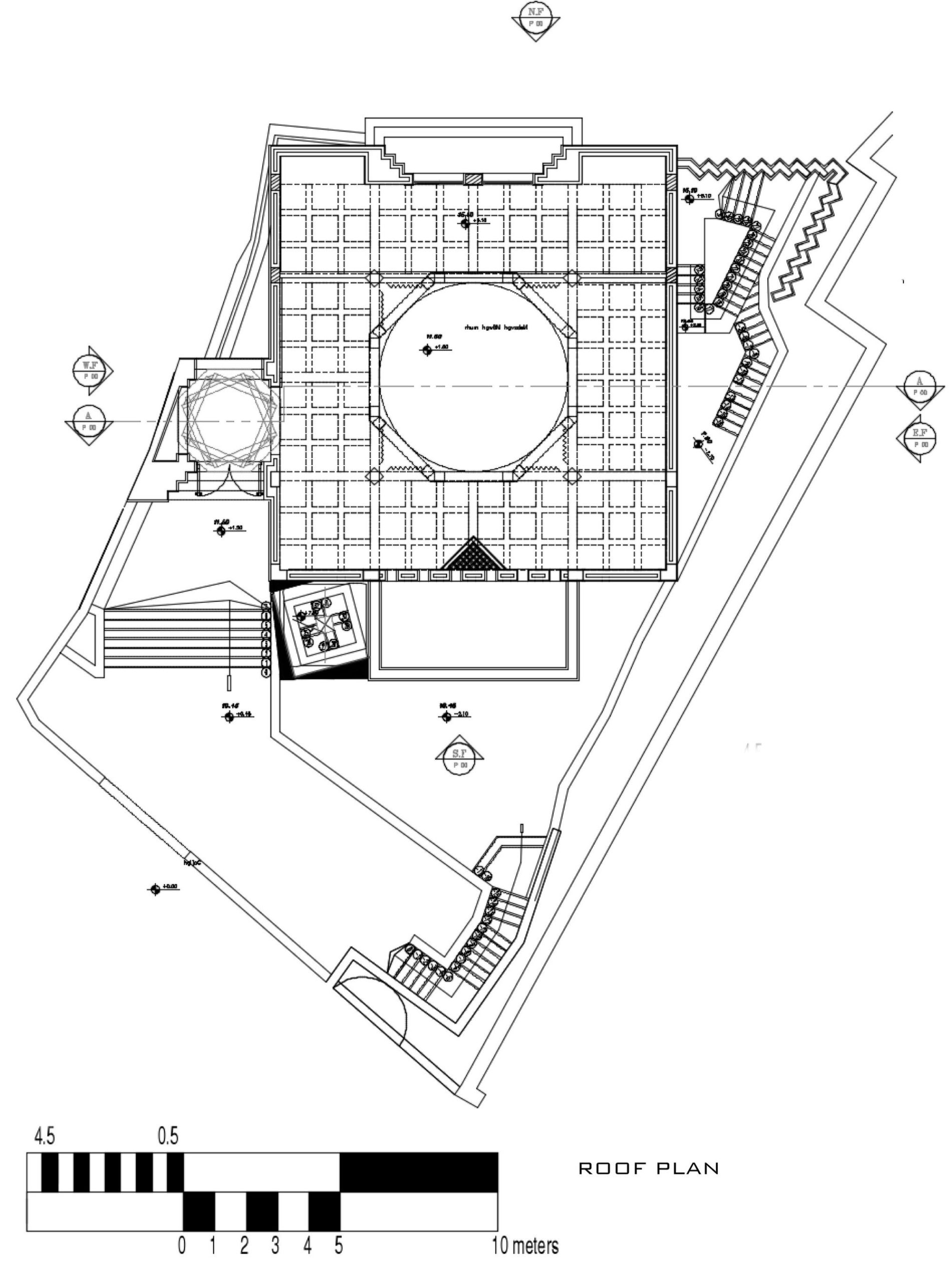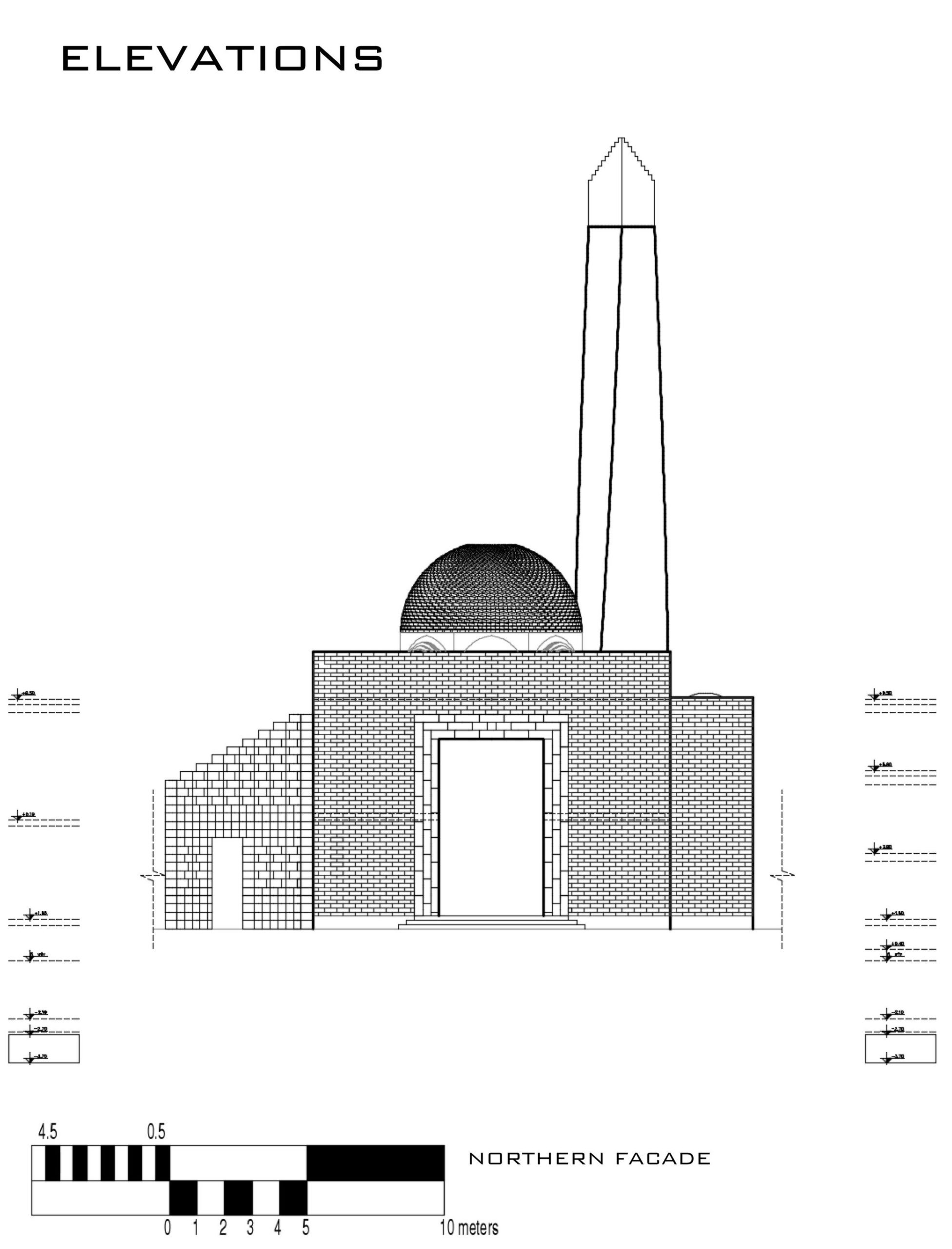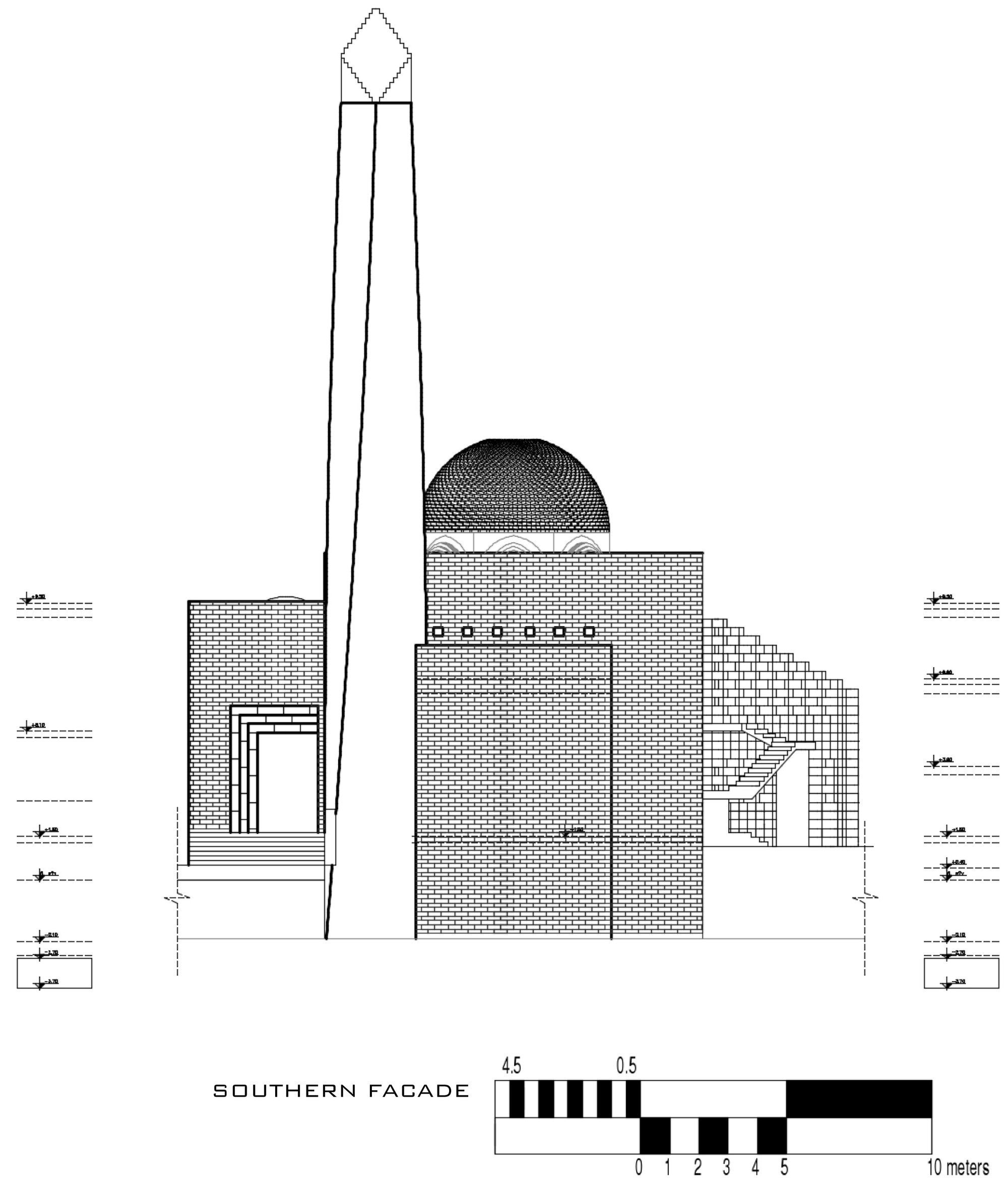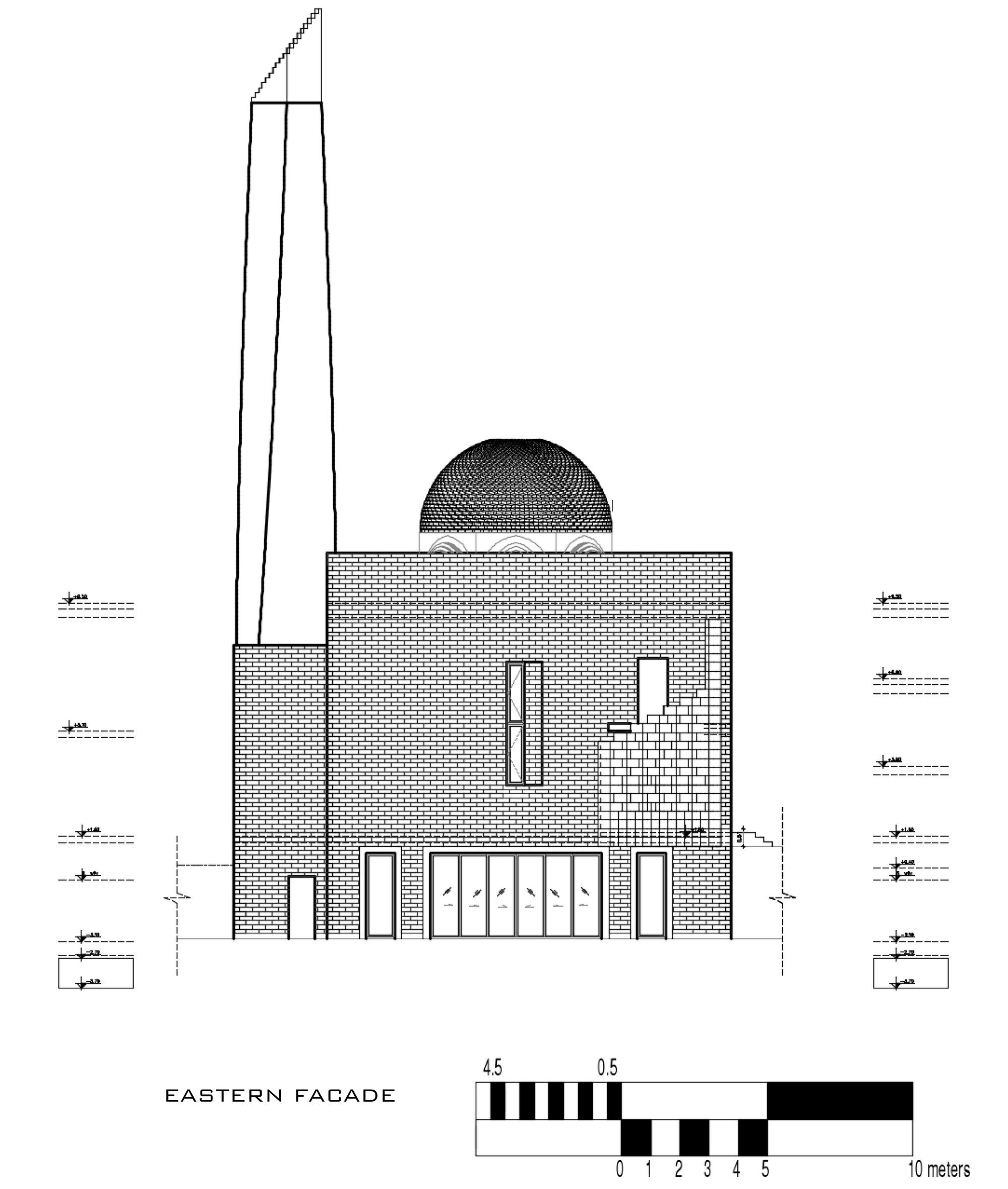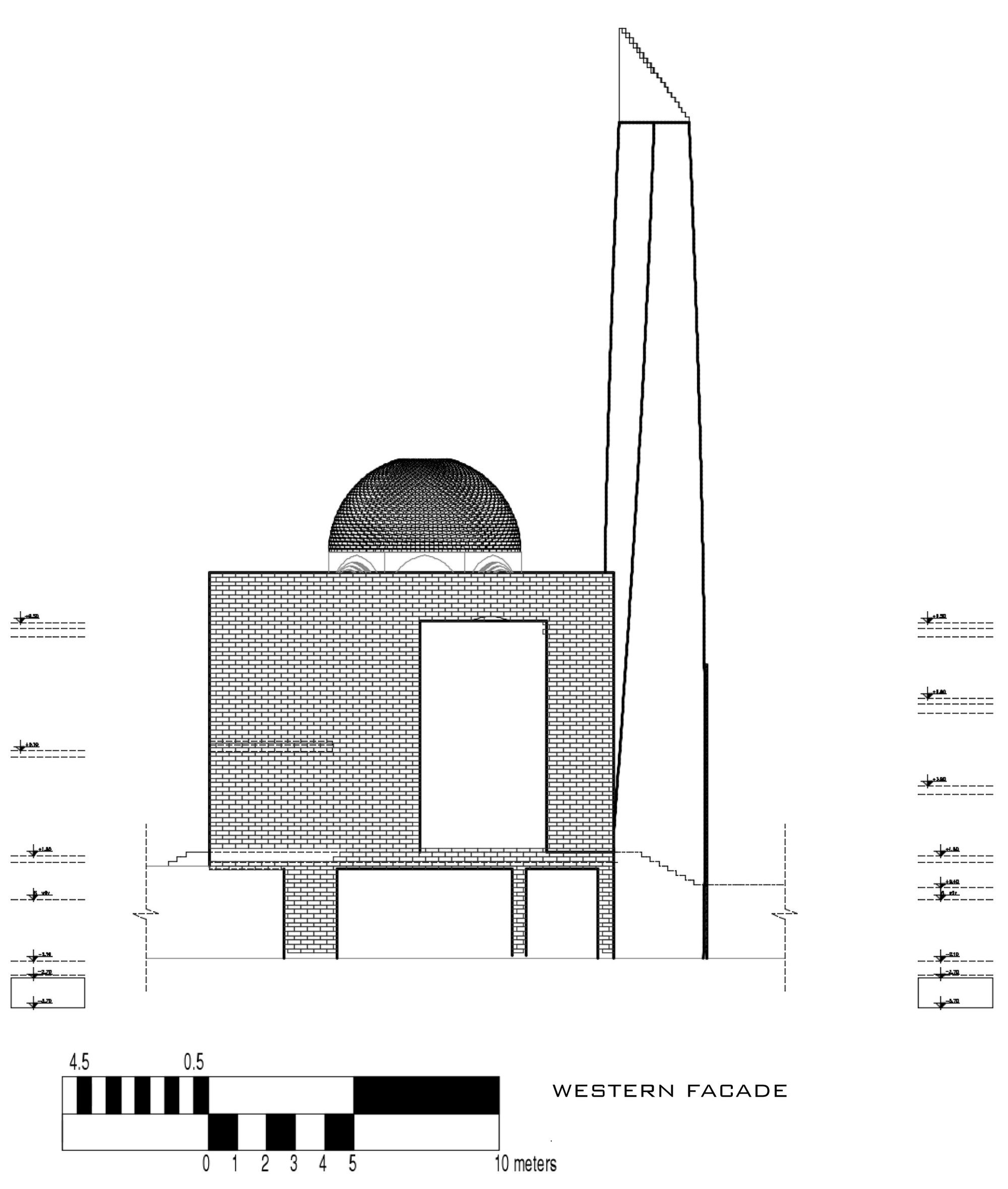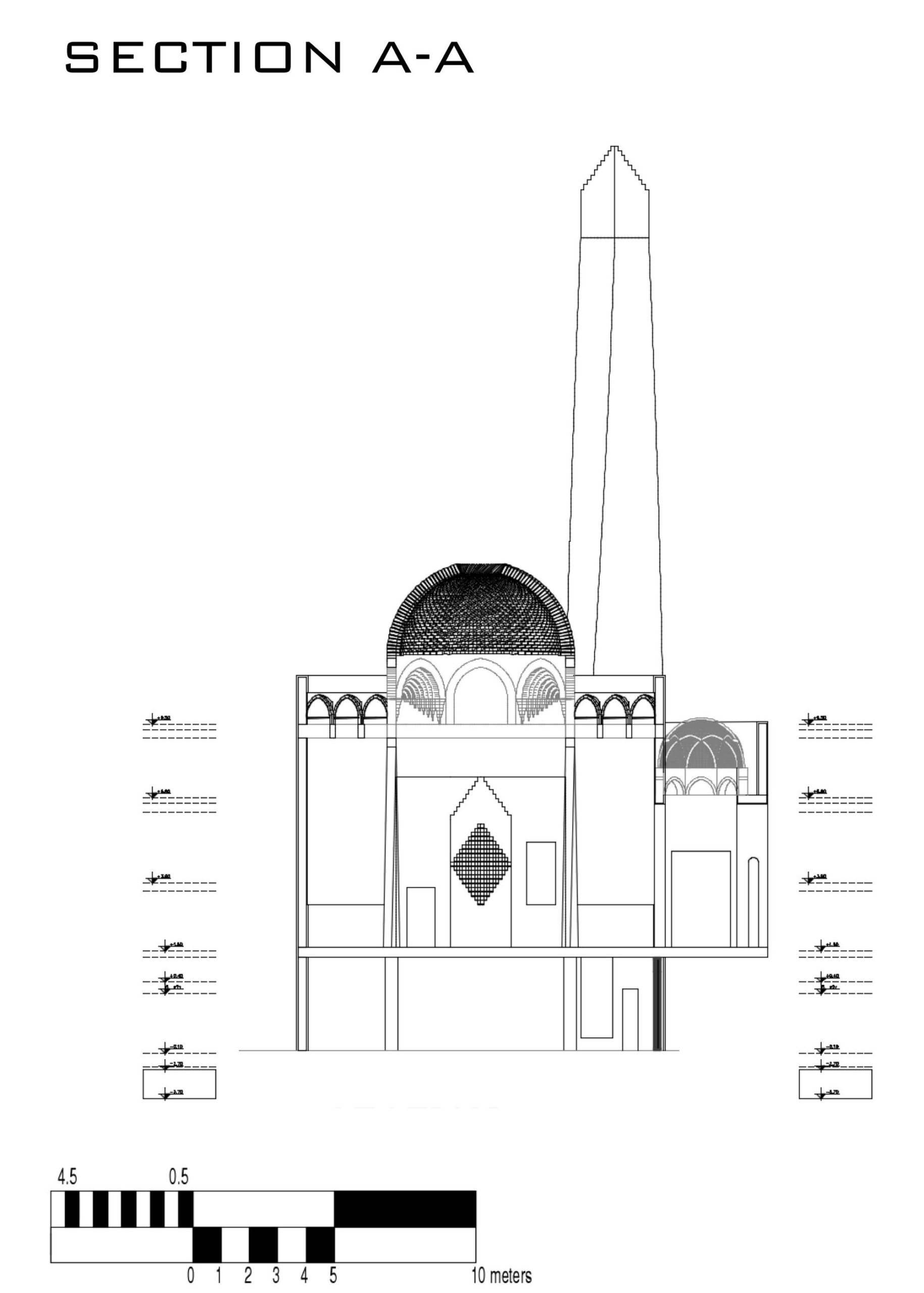Designed by Dar Arafa Architecture, The Basuna Mosque is located in the hot & arid village of Basuna, Sohag, Egypt, over a site amidst a noisy, dusty and densely constructed area with encroaching residential buildings, a cemetery, cattle frequently moving back and forth on the road and a weekly makeshift small market right outside the main entrance of this place of worship posed a major challenge. The new building must offer peace and tranquillity for its users and so a few requirements had to be met.
The solution depends on a cavity-wall with only one window, overlooking the calm cemetery, covered with a hybrid roof system; consisting of a concrete beam gridiron, cast in situ, forming a central square (6.0×6.0m) covered with a main dome, and 108 smaller square openings (0.82 x 0.82m) partially covered using pendentive-domes, complemented with fixed horizontal and operable vertical glass panels allowing fresh high-altitude northern breeze to filter into the mosque, indirect glare-less sunlight to naturally illuminate the interior, and rain-water to be collected and used for cleaning and watering plants.
The main dome was constructed using an Egyptian-made light block made of sand, lime and air, with a density of 0.5 ton/m3, thermal conductivity 0.136-0.132 W/m2.°K, fire rating (relative to thickness) 4-7 hours, sound insulation (dB) 37-48. The remarkable lightness of the block decreased the building’s own-weight, in turn decreasing the required dimensions of all reinforced concrete elements. Its dimensions (100x200x600 mm) were perfect for introducing an original aesthetic, serving the conceptual scheme of the mosque, through employing a special cutting list and a simple staggered tessellation. I had to devise a special steel compass to guarantee the meticulous spatial positioning of every single block regardless of a mason’s skills and accuracy.
Pendentive-domes are a known structural element, traditionally used to facilitate the transition from square to octagonal plans to finally receive the circular plan of a dome.
In the Basuna Mosque, this element was reimagined as an independent unit, with innovated functions; structurally as a roof system, environmentally as a wind-catcher and skylight, and aesthetically as an independent geometrical object, appreciated both from the interior and the exterior.
The entrance dome references the historical dome of the Cordoba Grand Mosque. It serves as a reminder of the rich potential of historical architecture in both the architectural discourse and construction innovations.
There are 4 entrances to the building, two of which could be made accessible for worshippers with special needs, once the roads and infra-structure of the village allows for free and independent movement of people with special needs.
The multi-use hall is designed to accommodate seasonal increases in the numbers of worshippers, of both genders, during Fridays and the Holy month of Ramadan, as well as serving an array of purposes all year round; temporary medical clinics, after-school and literacy tuition classes, etc…This brings back to mind the original all inclusive function of the mosque, not only as a place for ritualistic worship but as a service center for both Muslims and non-Muslims alike.
Project Info:
Architects: Dar Arafa Architecture
Location: Egypt
Area: 4843.76 ft²
Year: 2019
Photographs: Essam Arafa, Tariq Al Murri
Project Name: Basuna Mosque
Photography By Essam Arafa
Photography By Tariq Al Murri
Photography By Essam Arafa
Photography By Essam Arafa
Photography By Essam Arafa
Photography By Essam Arafa
Photography By Tariq Al Murri
Photography By Essam Arafa
Photography By Essam Arafa
Photography By Essam Arafa
Photography By Essam Arafa
Photography By Essam Arafa
Photography By Essam Arafa
Photography By Tariq Al Murri
Photography By Essam Arafa
Photography By Tariq Al Murri
Photography By Tariq Al Murri
Photography By Tariq Al Murri
Photography By Tariq Al Murri
Photography By Tariq Al Murri
Photography By Tariq Al Murri
Photography By Tariq Al Murri
Photography By Tariq Al Murri
Photography By Tariq Al Murri
Photography By Tariq Al Murri
Photography By Essam Arafa
Photography By Essam Arafa
Photography By Essam Arafa
Photography By Essam Arafa
Photography By Tariq Al Murri
Photography By Tariq Al Murri
Photography By Tariq Al Murri
Photography By Tariq Al Murri
Photography By Essam Arafa
Photography By Essam Arafa
Photography By Tariq Al Murri
Photography By Tariq Al Murri
Photography By Tariq Al Murri
Photography By Tariq Al Murri
Photography By Tariq Al Murri
Photography By Tariq Al Murri
Photography By Tariq Al Murri
Photography By Essam Arafa
Photography By Essam Arafa
Photography By Essam Arafa
Photography By Essam Arafa
Photography By Essam Arafa
Photography By Essam Arafa
Photography By Essam Arafa
Photography By Essam Arafa
Photography By Essam Arafa
Photography By Essam Arafa
Implantation
Lower floor plan
Ground floor plan
Mezzanine floor plan
Roof plan
North facade
South facade
East facade
West facade
Section AA


